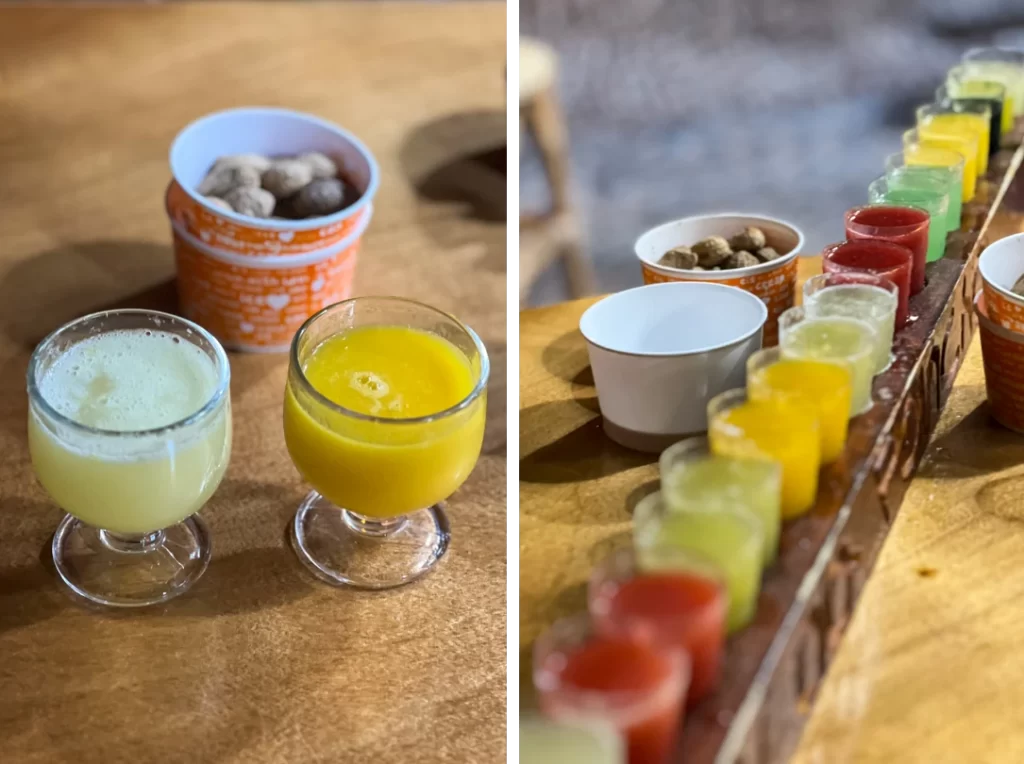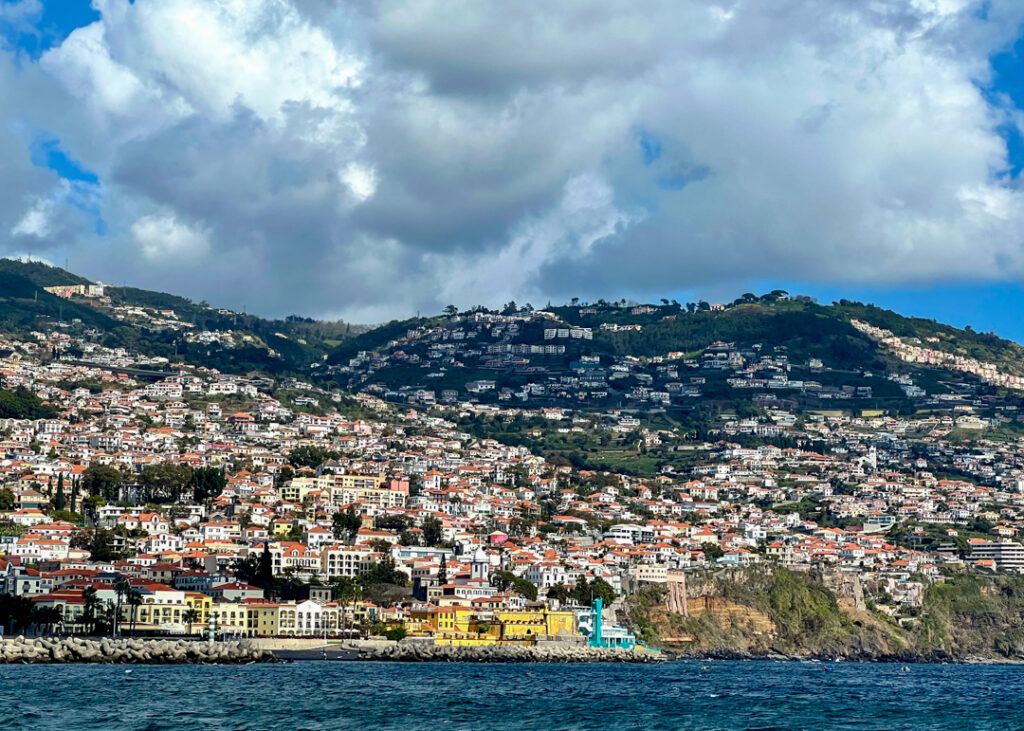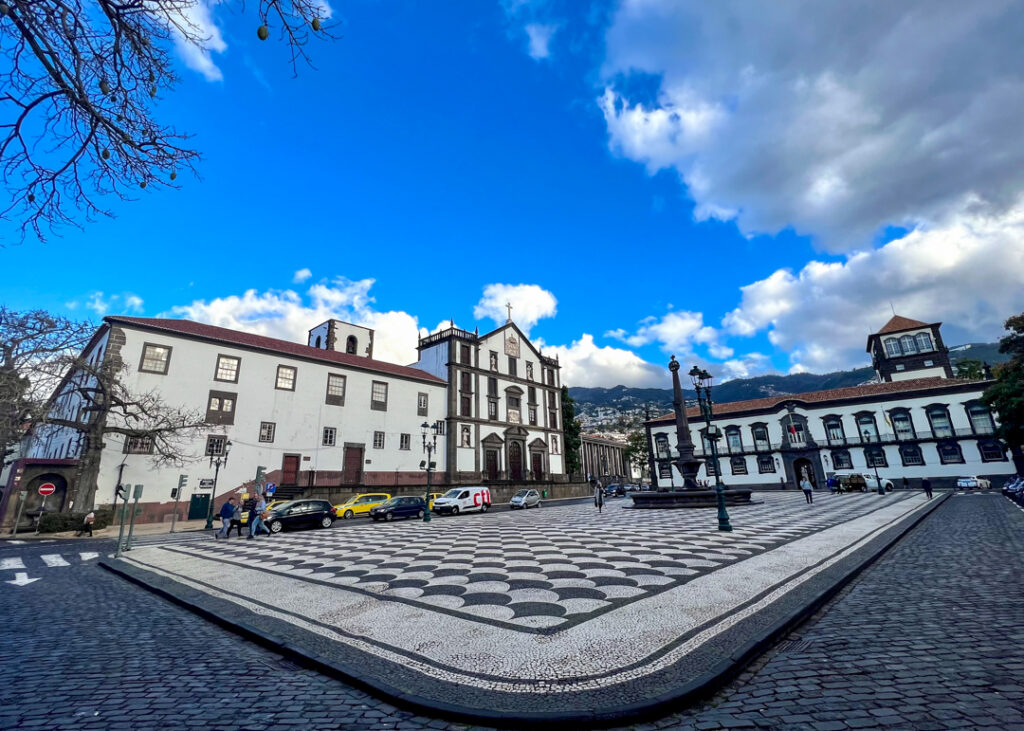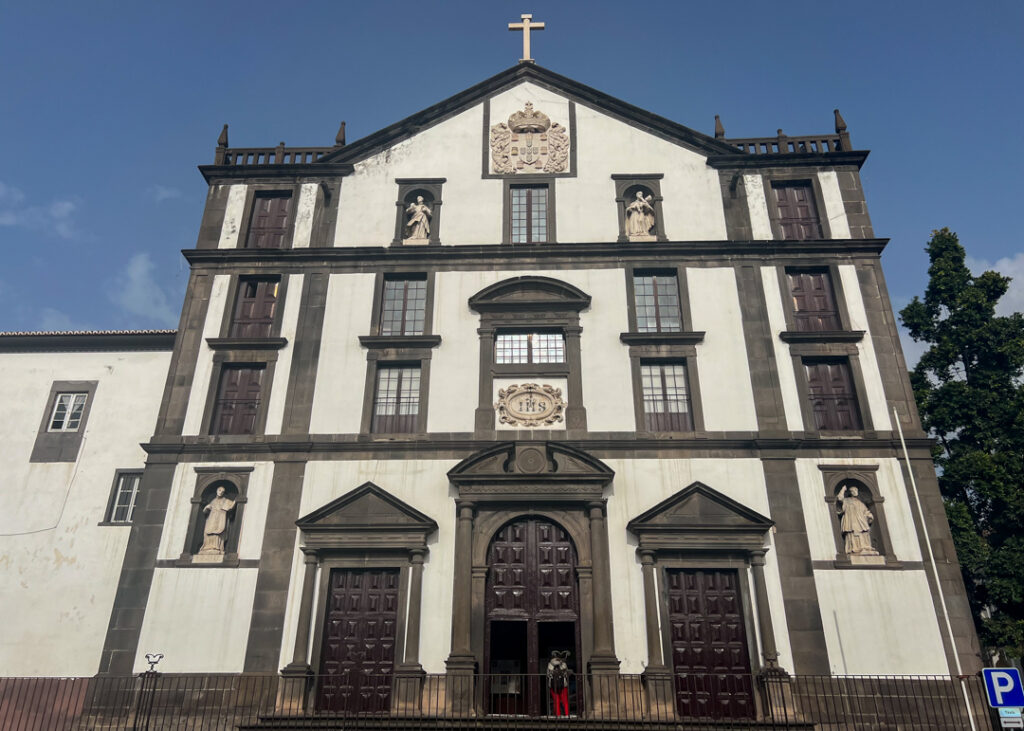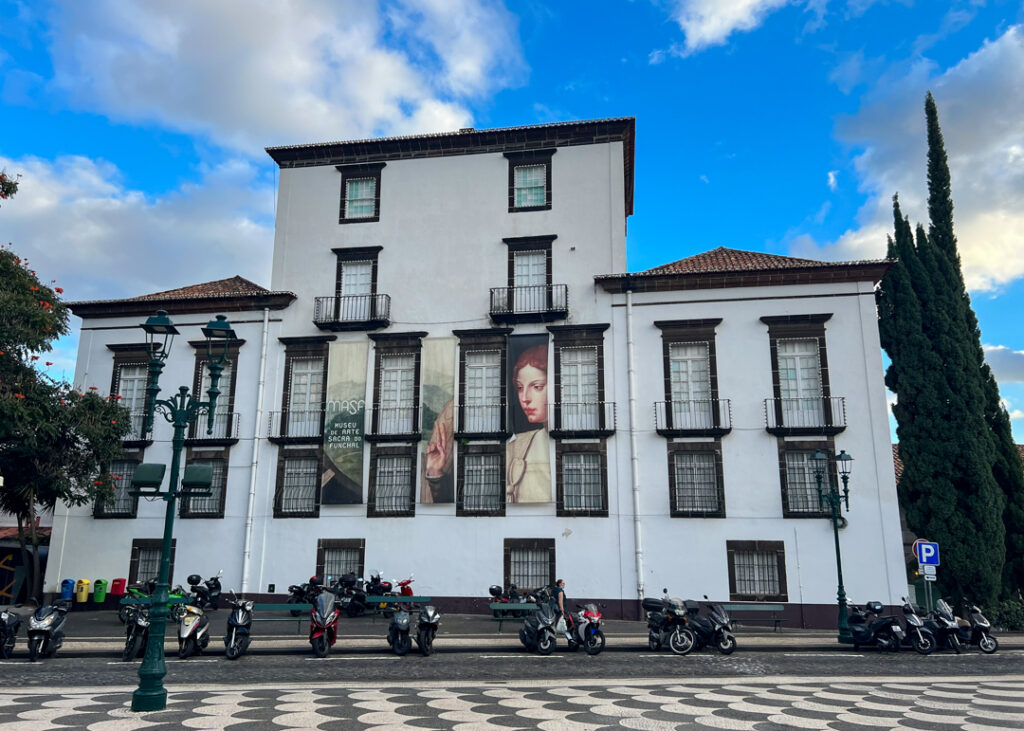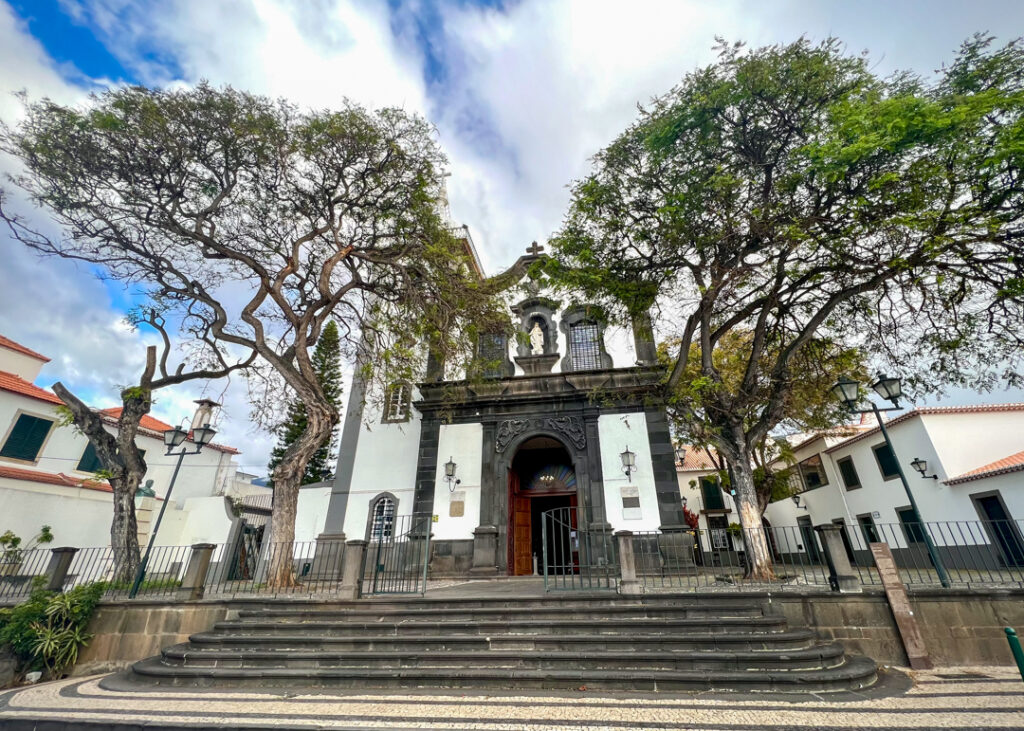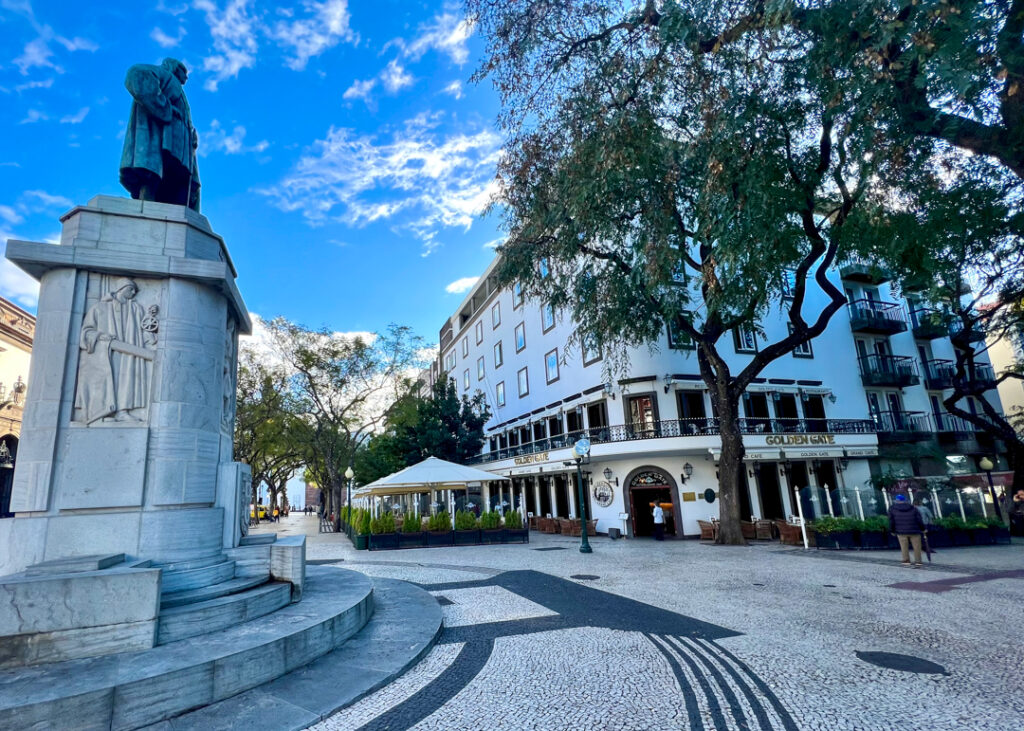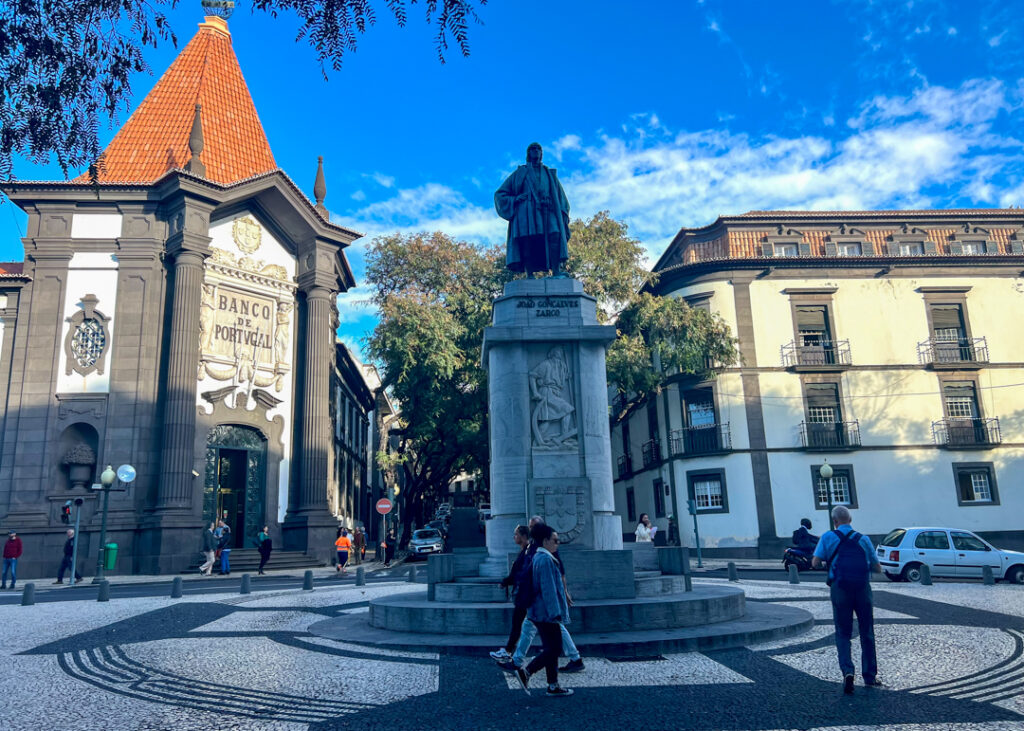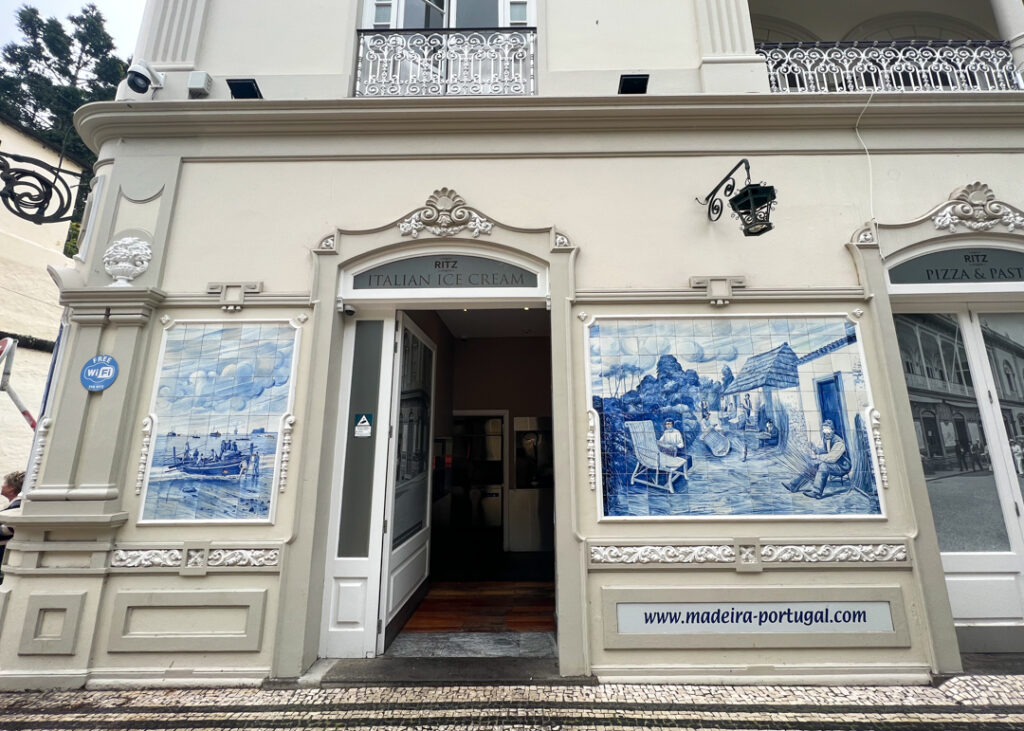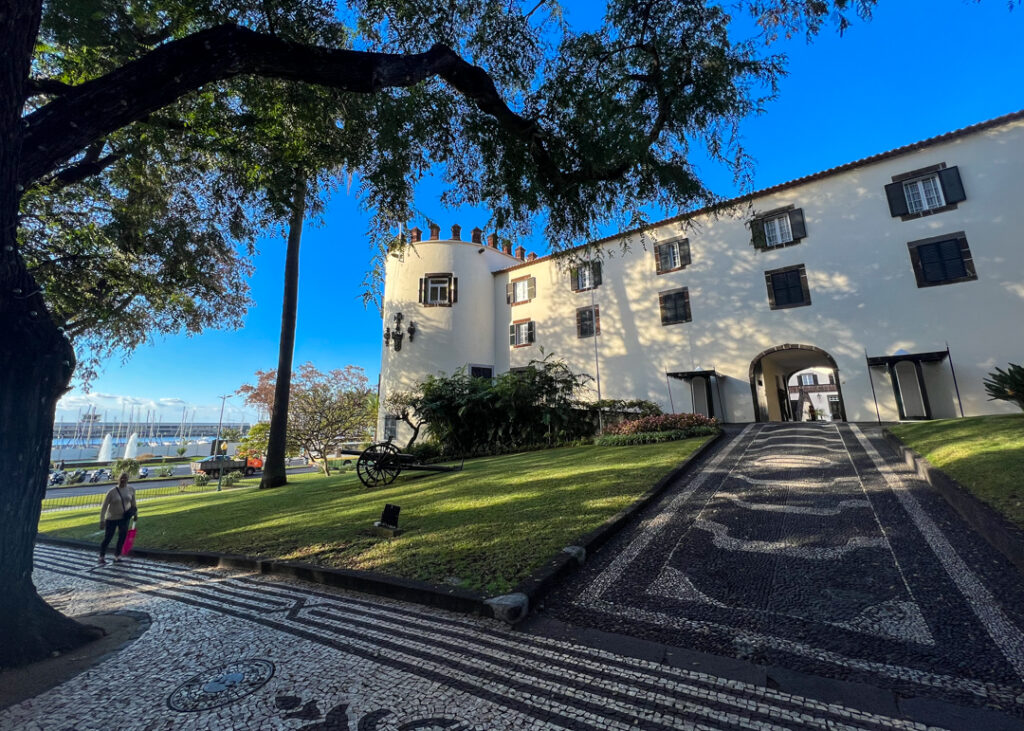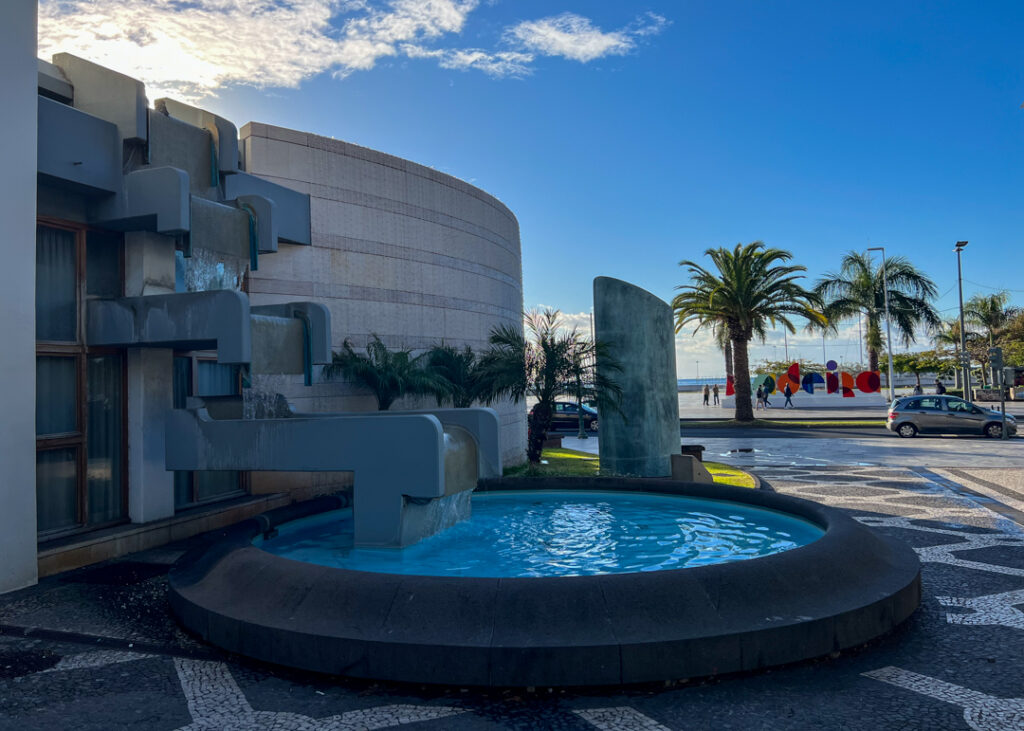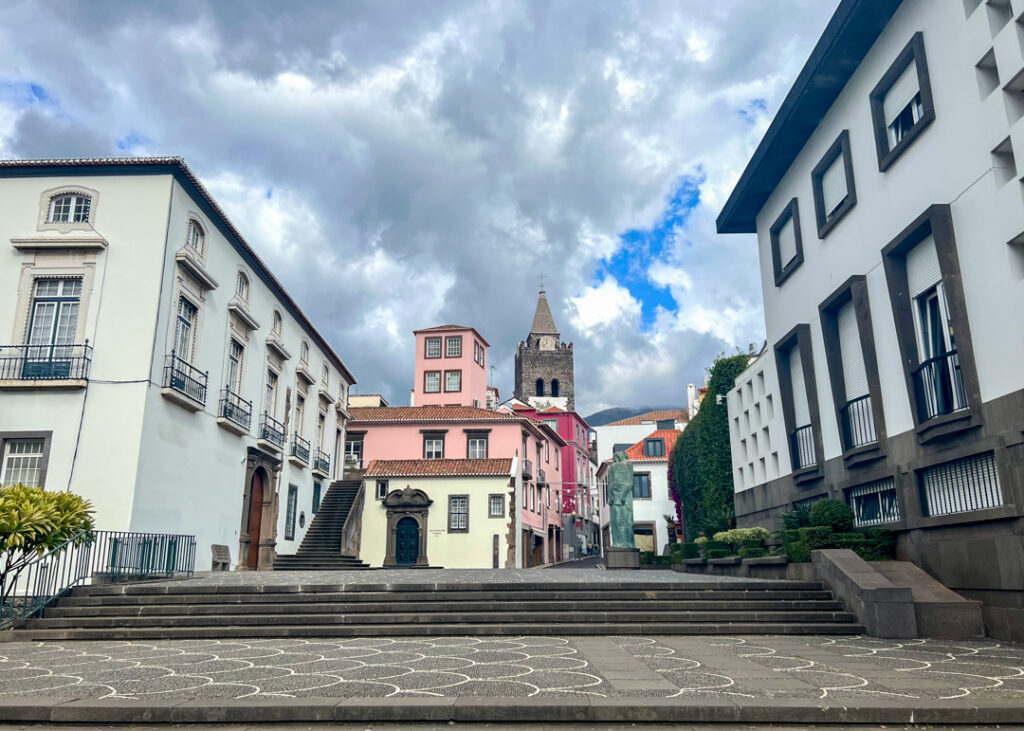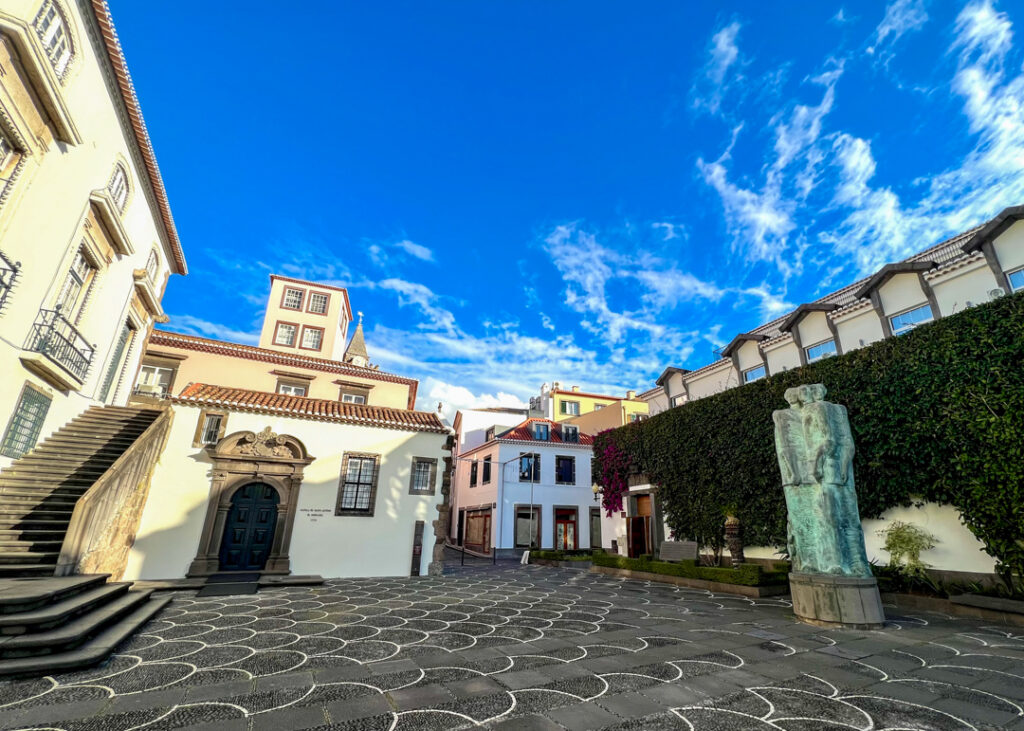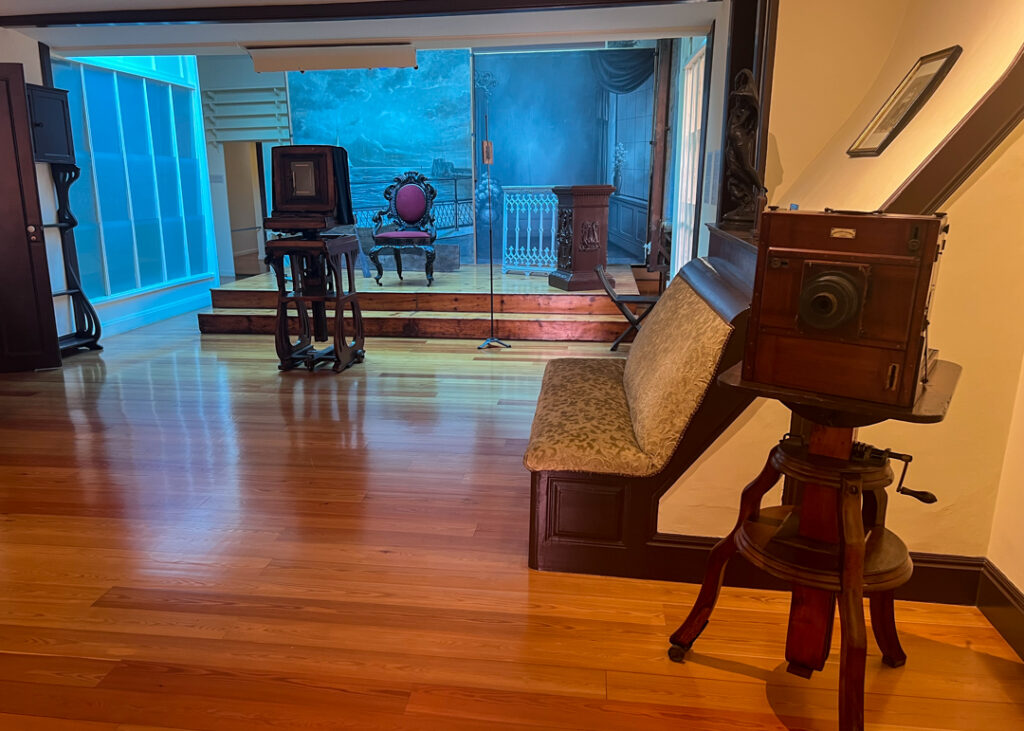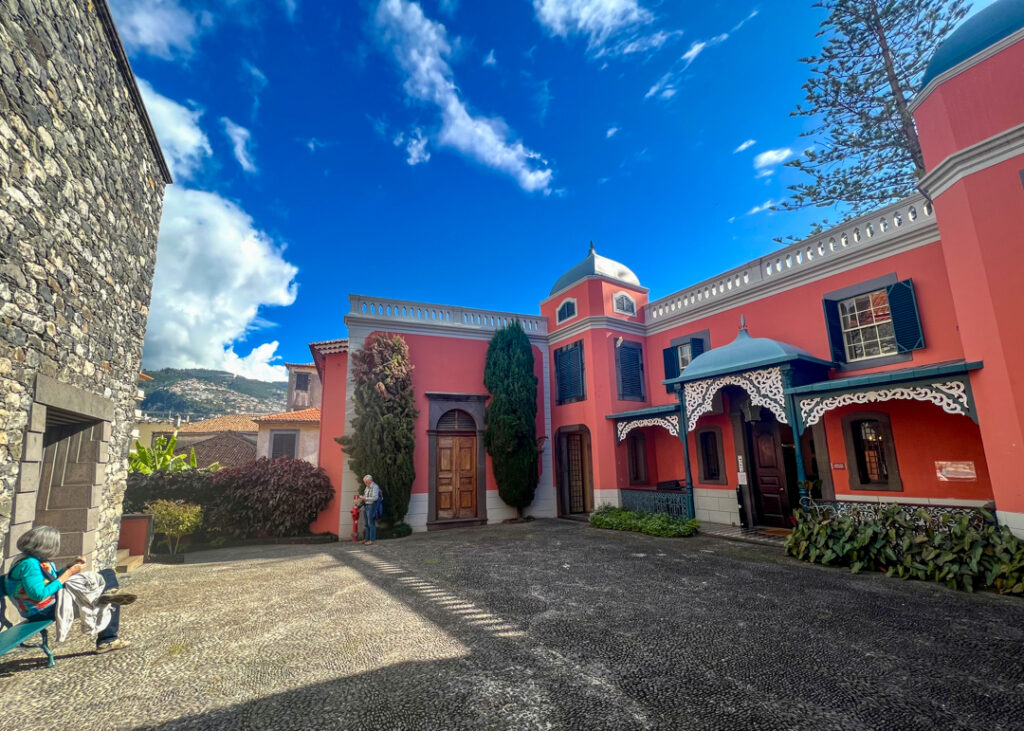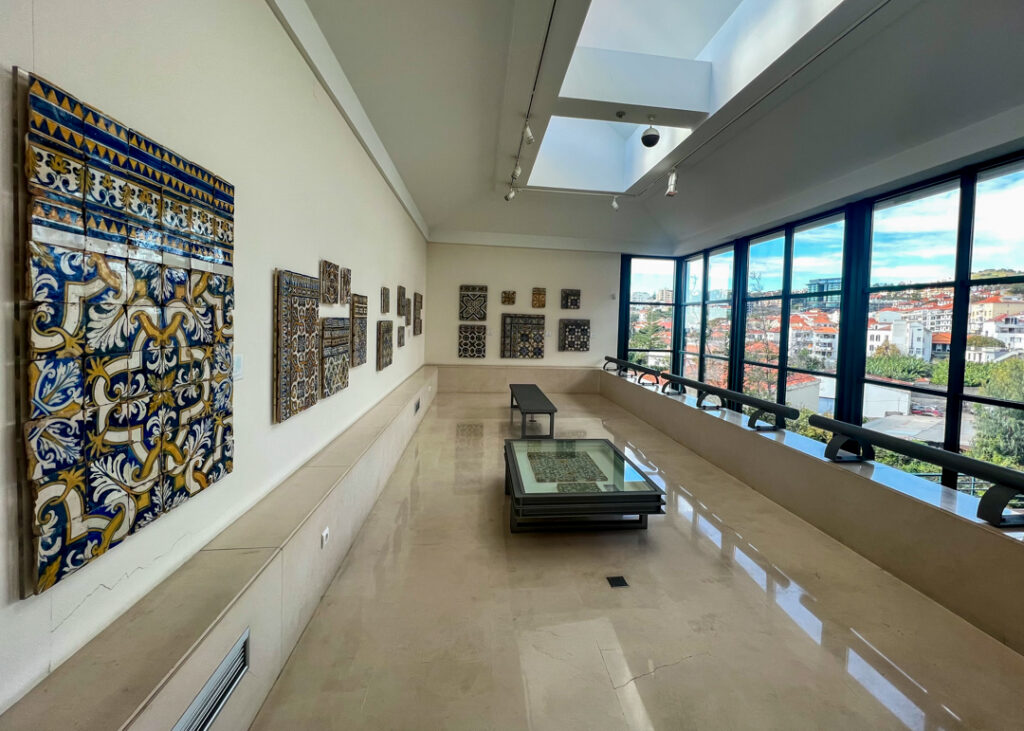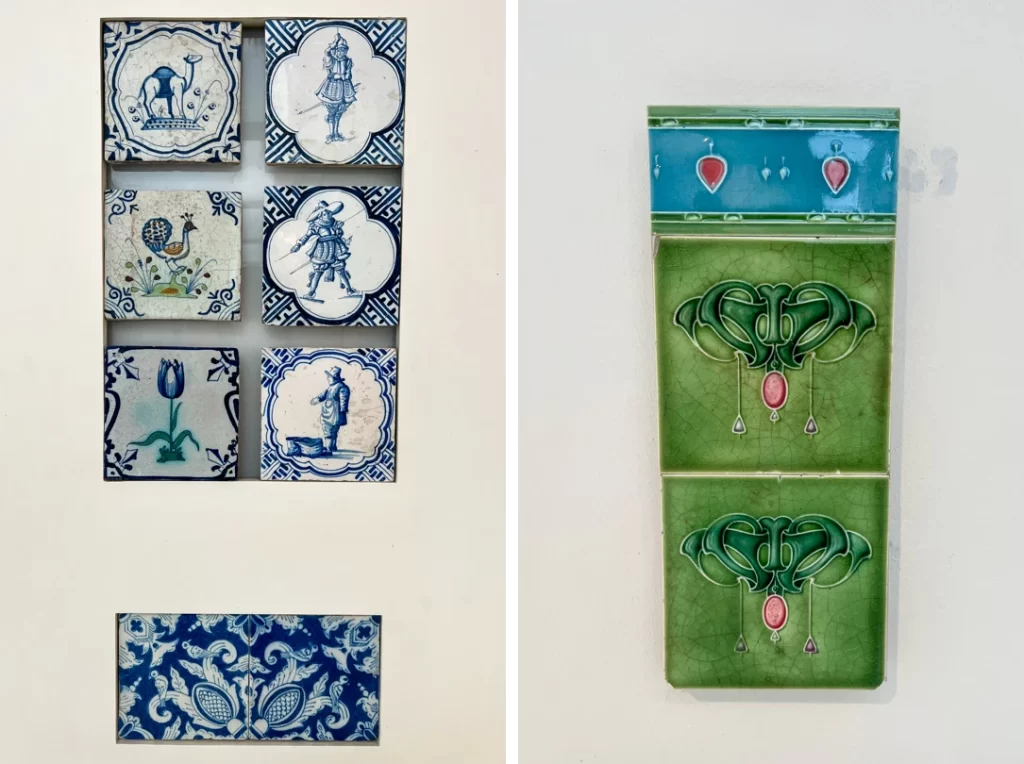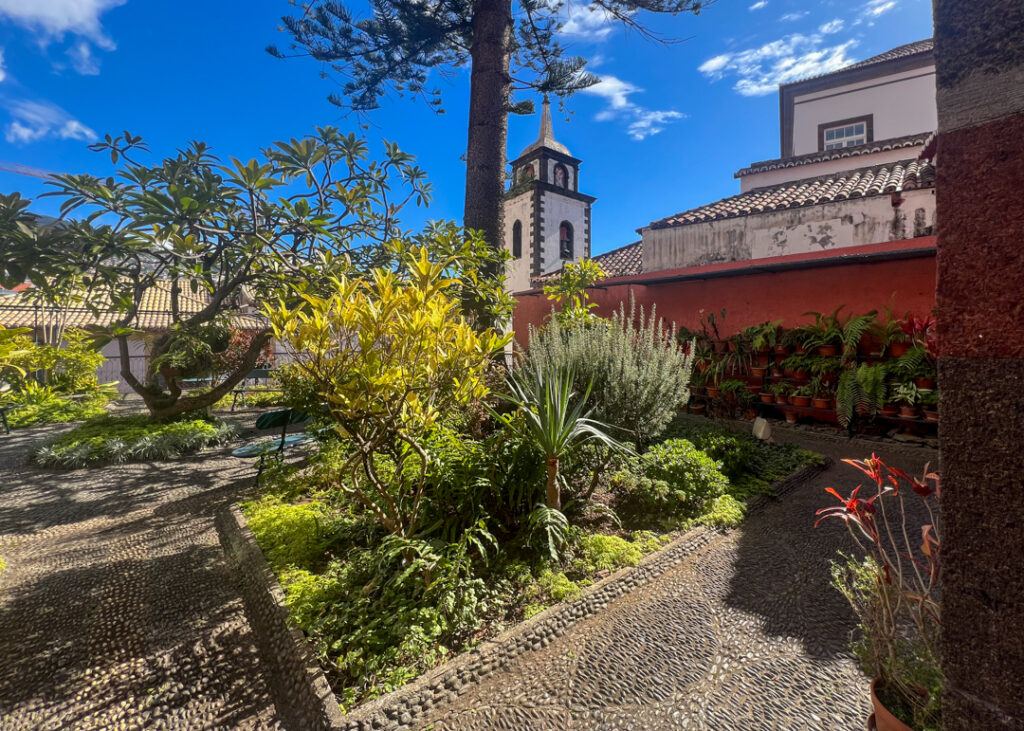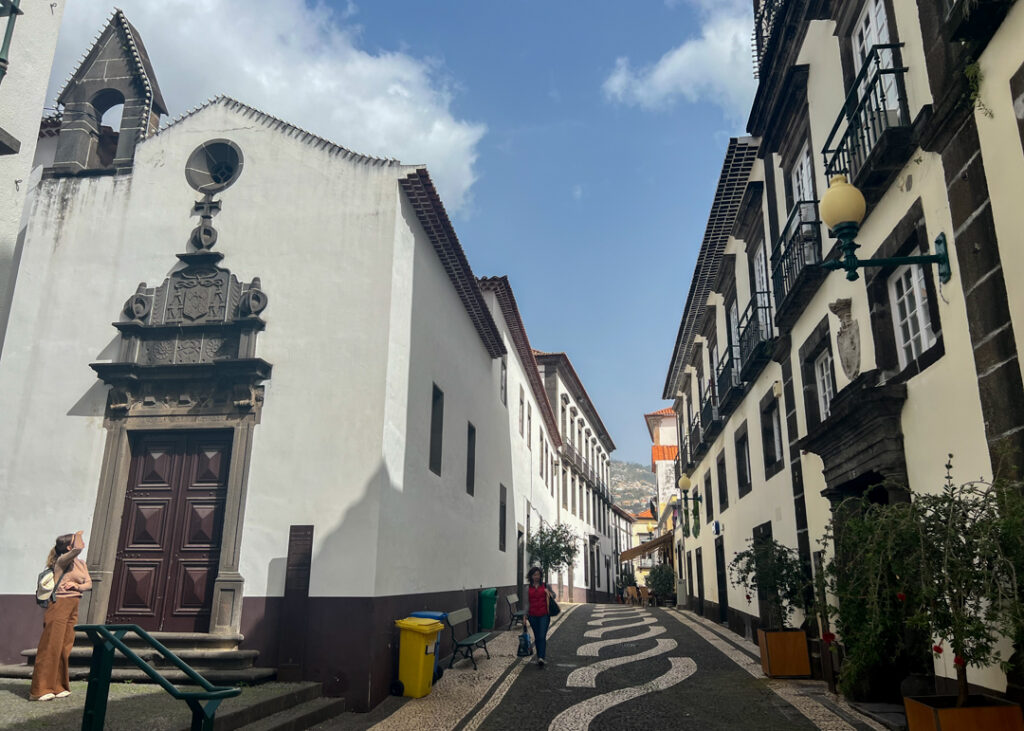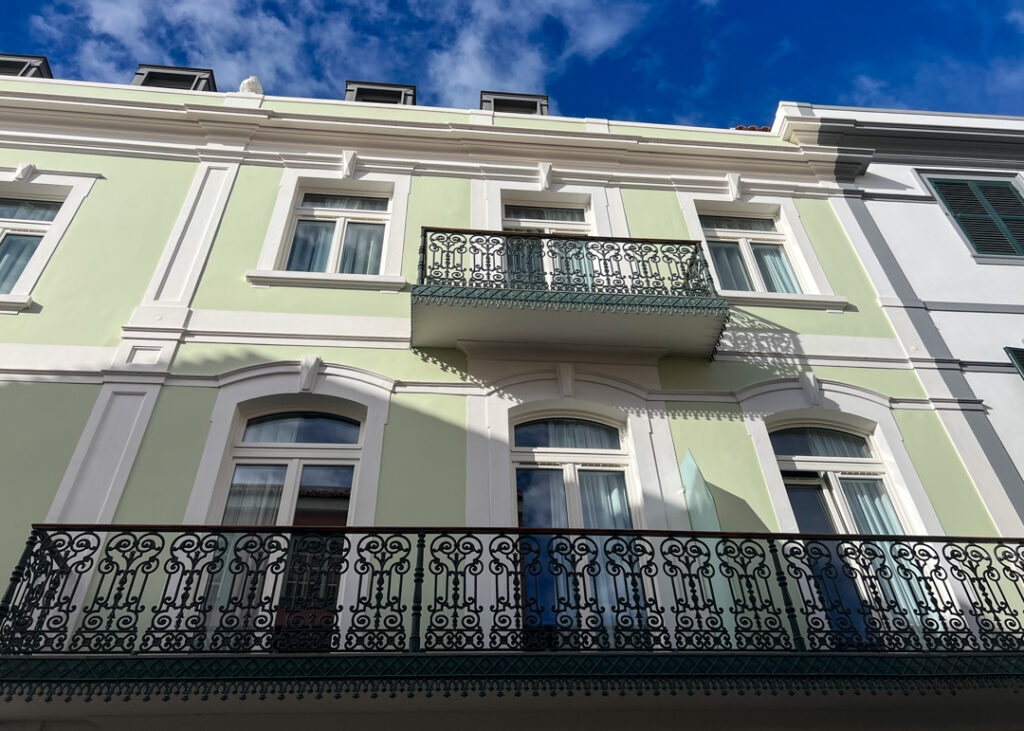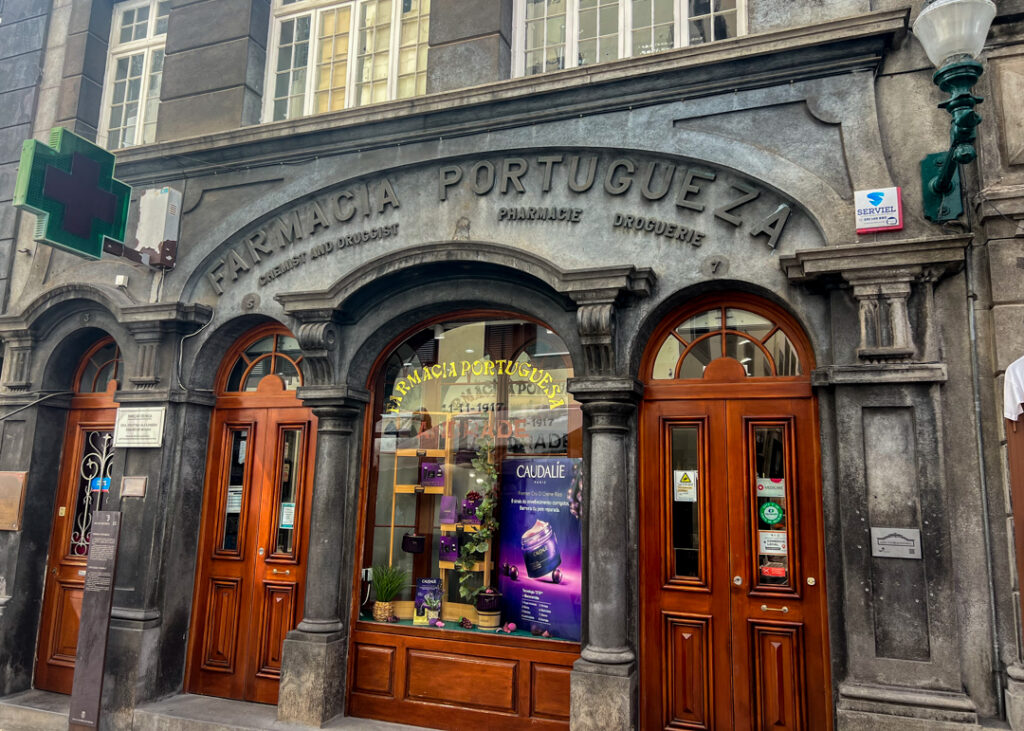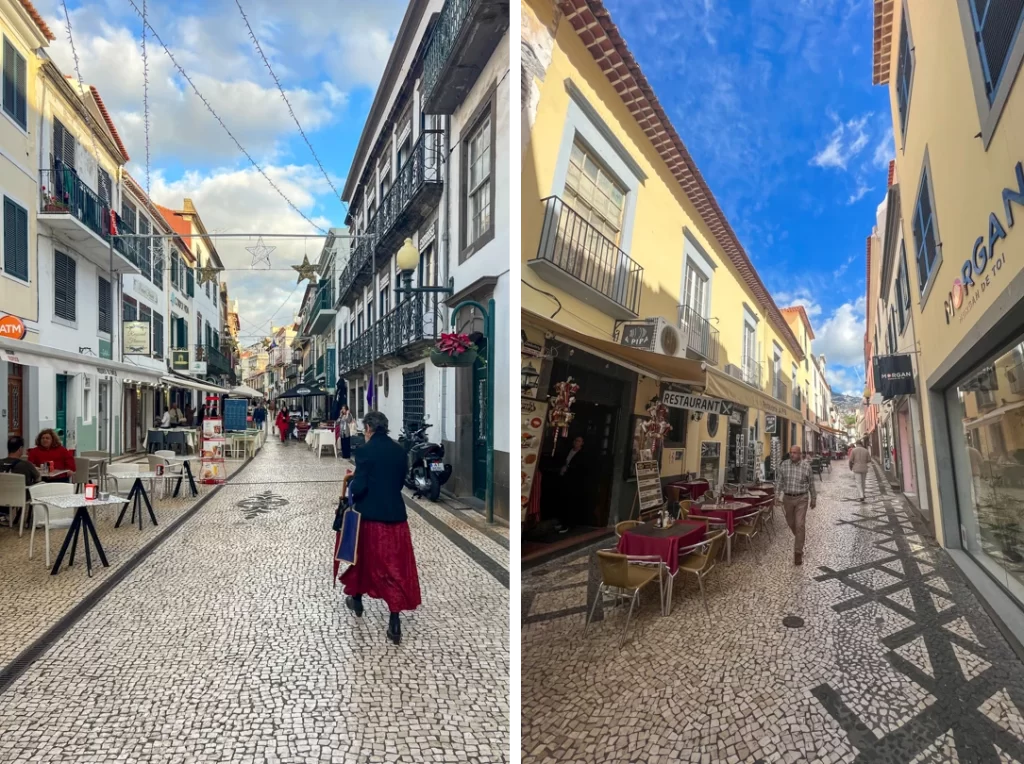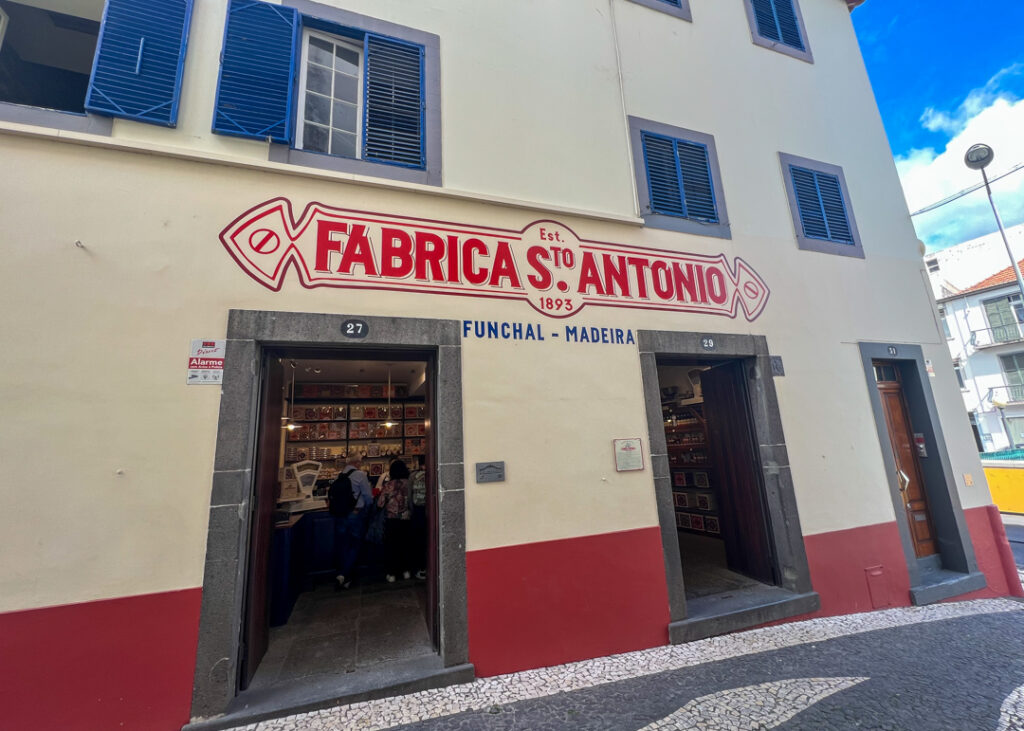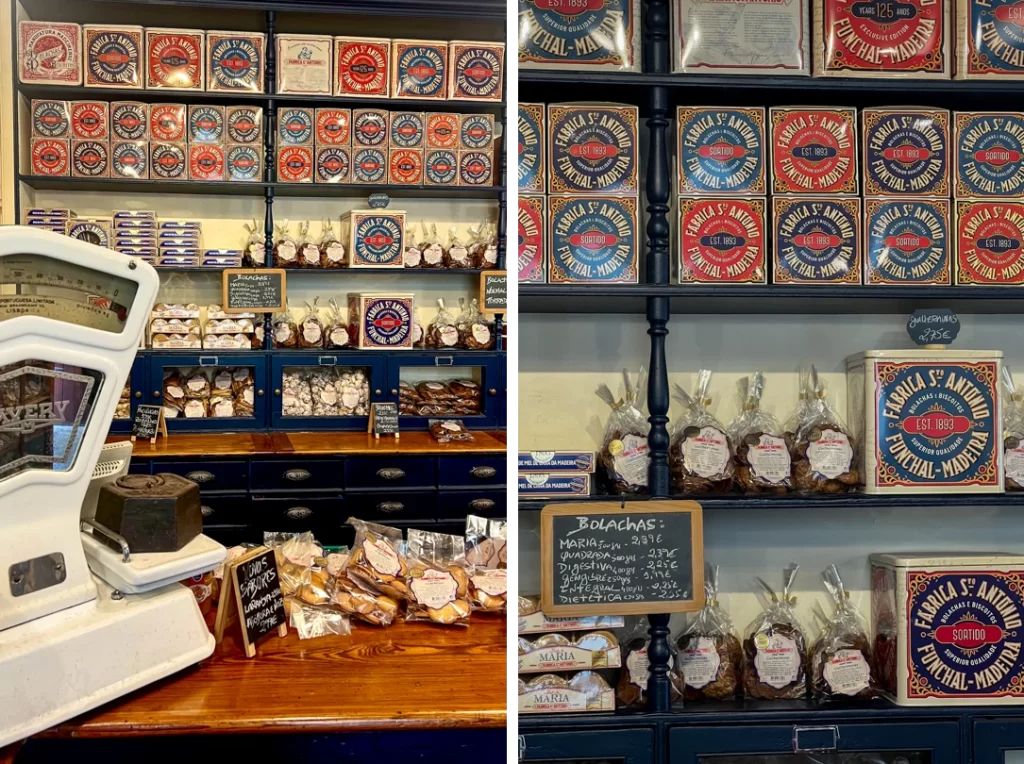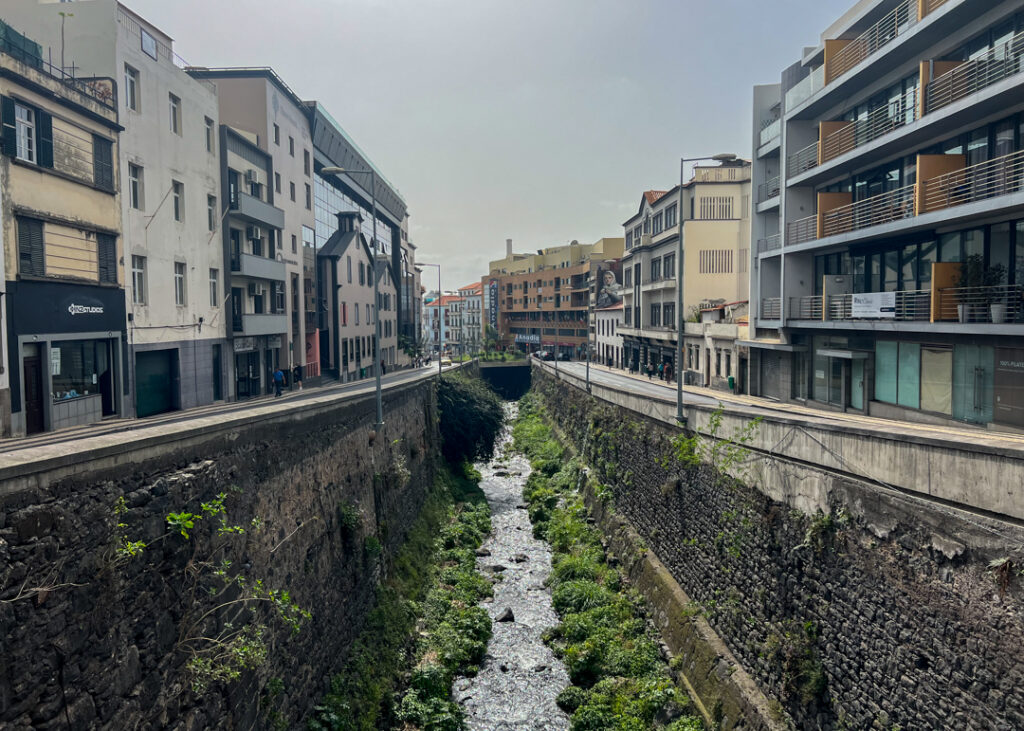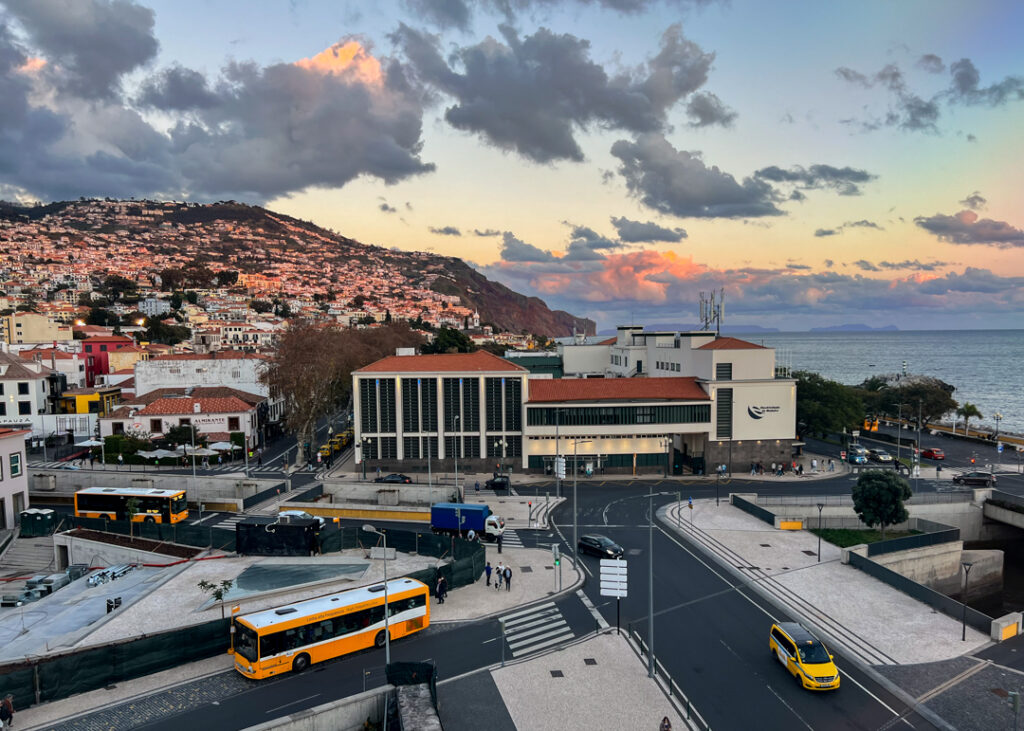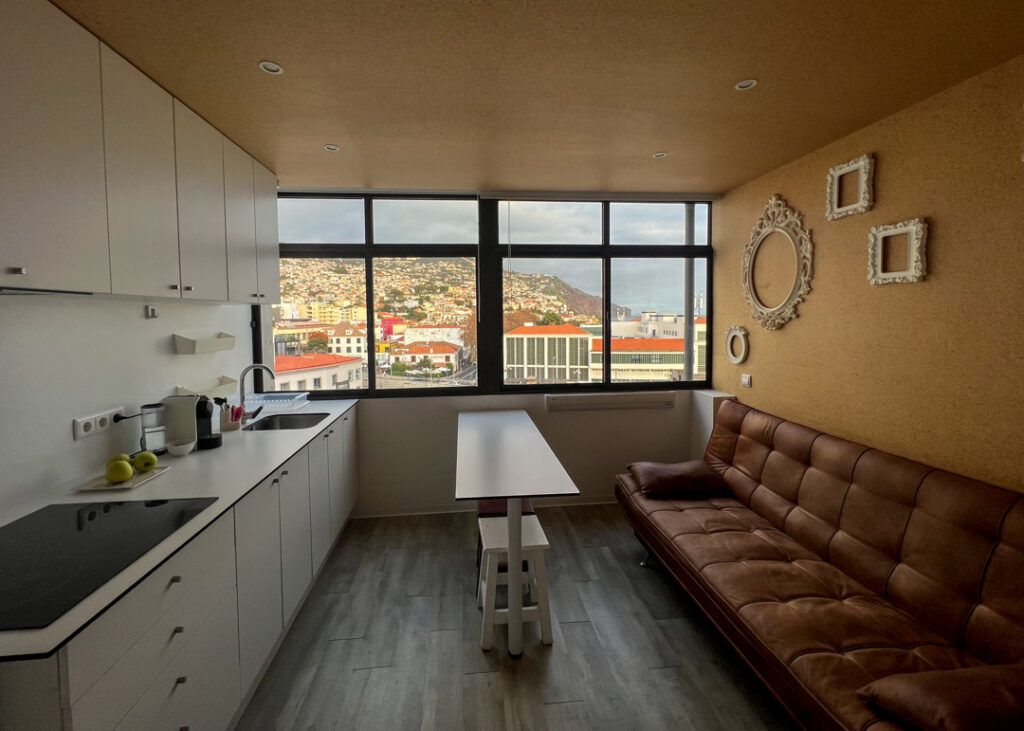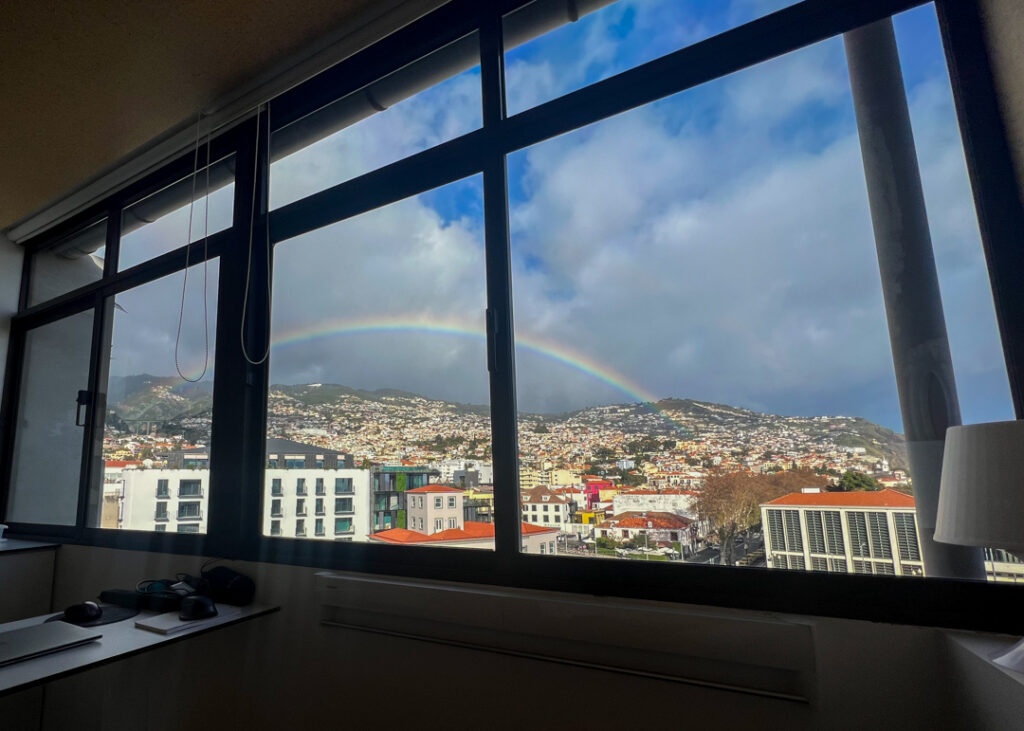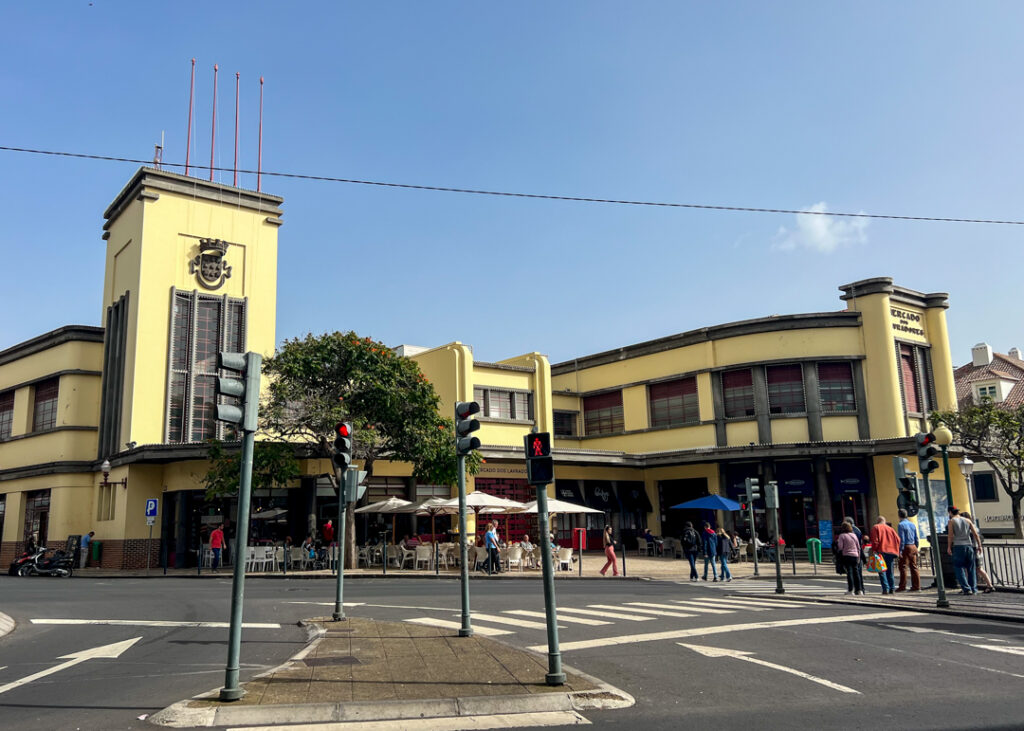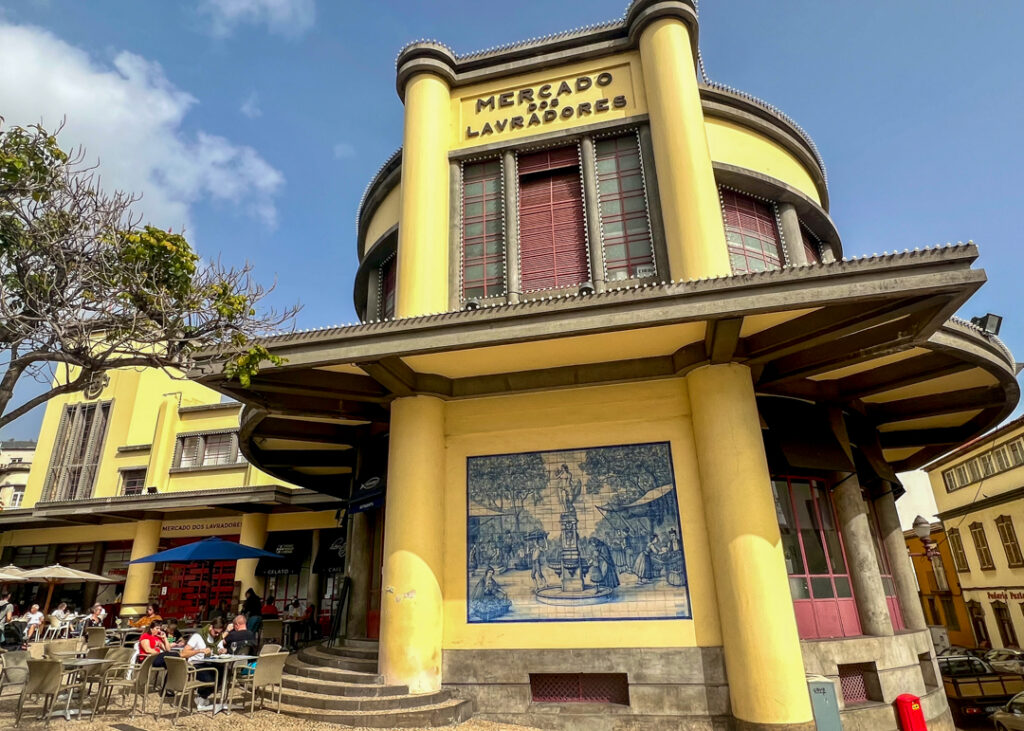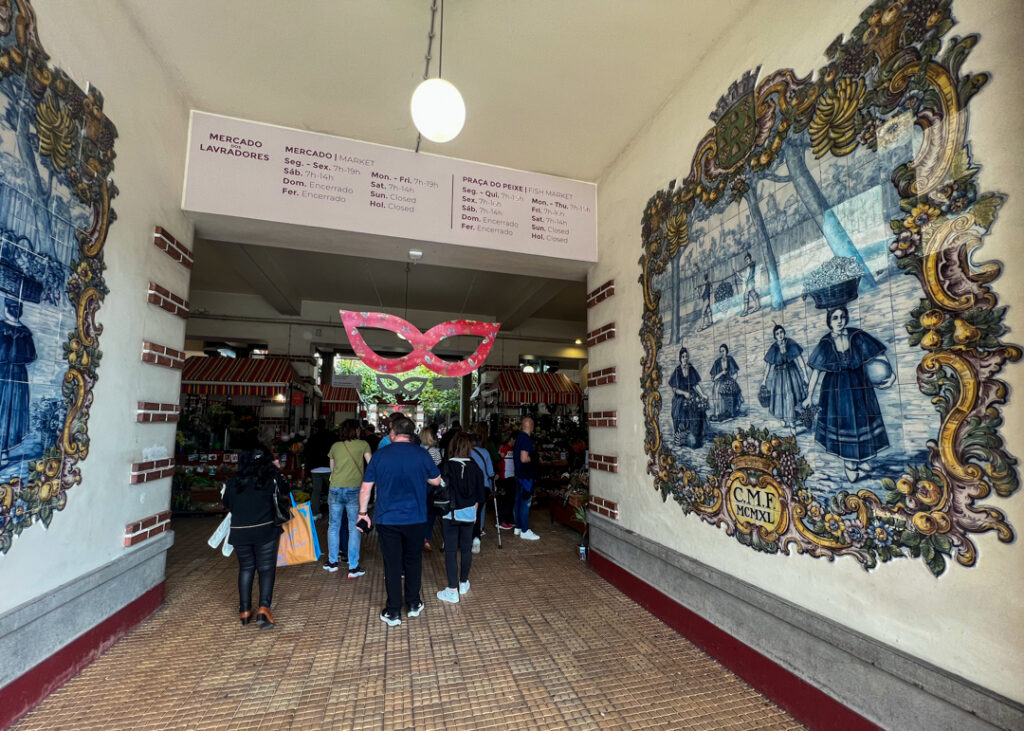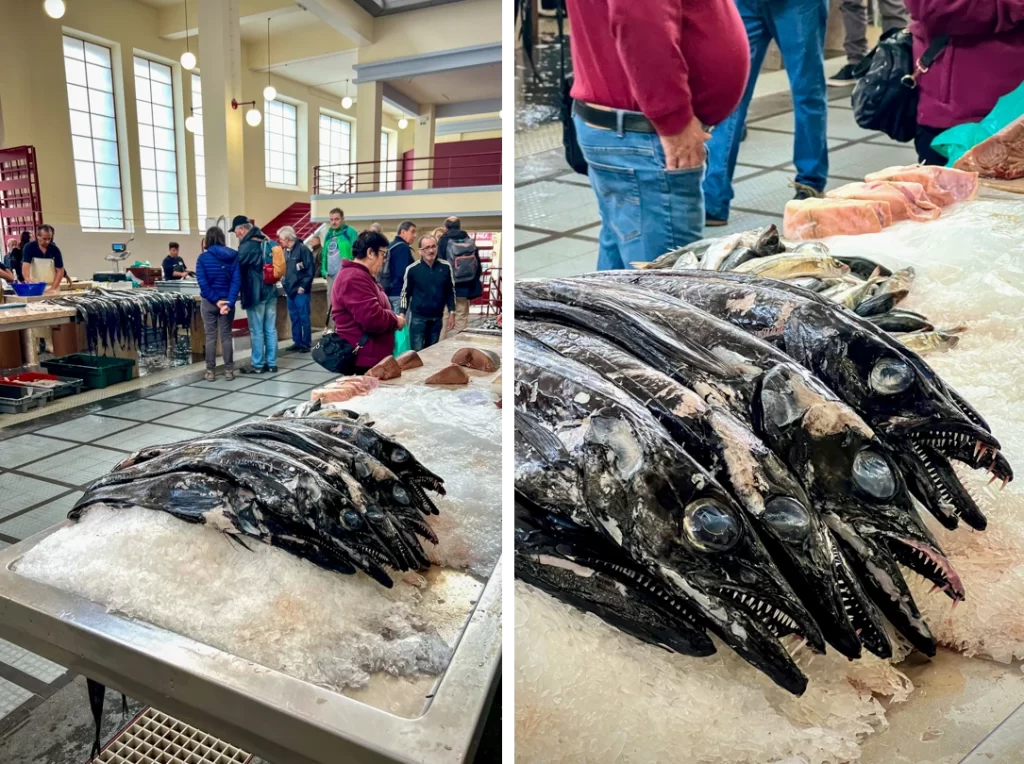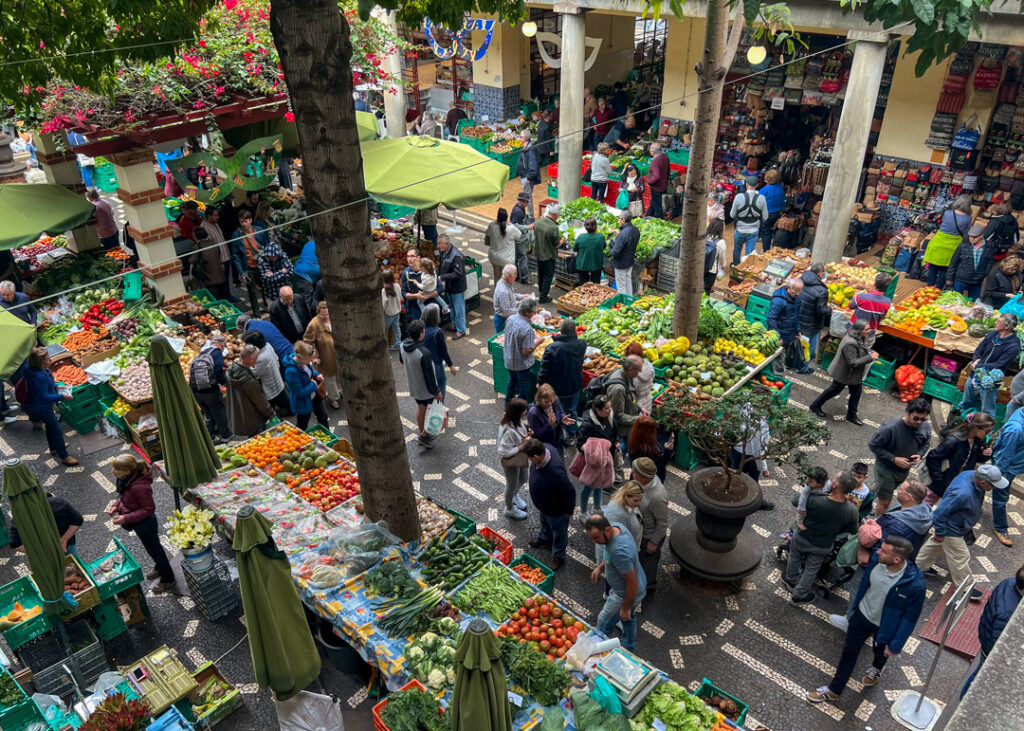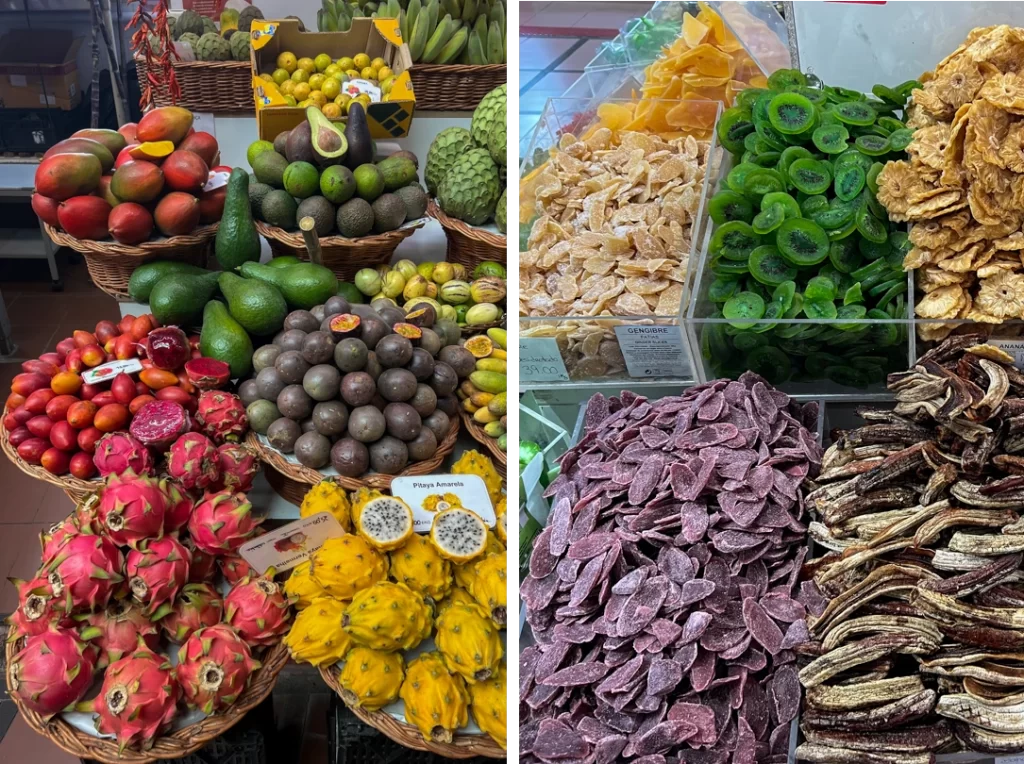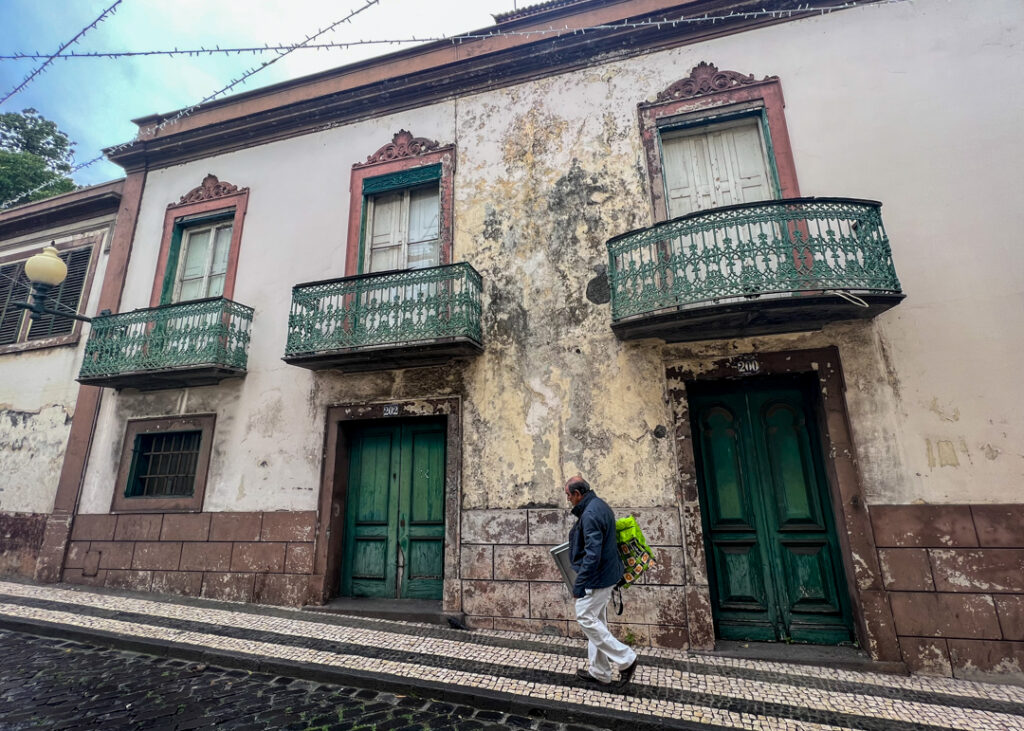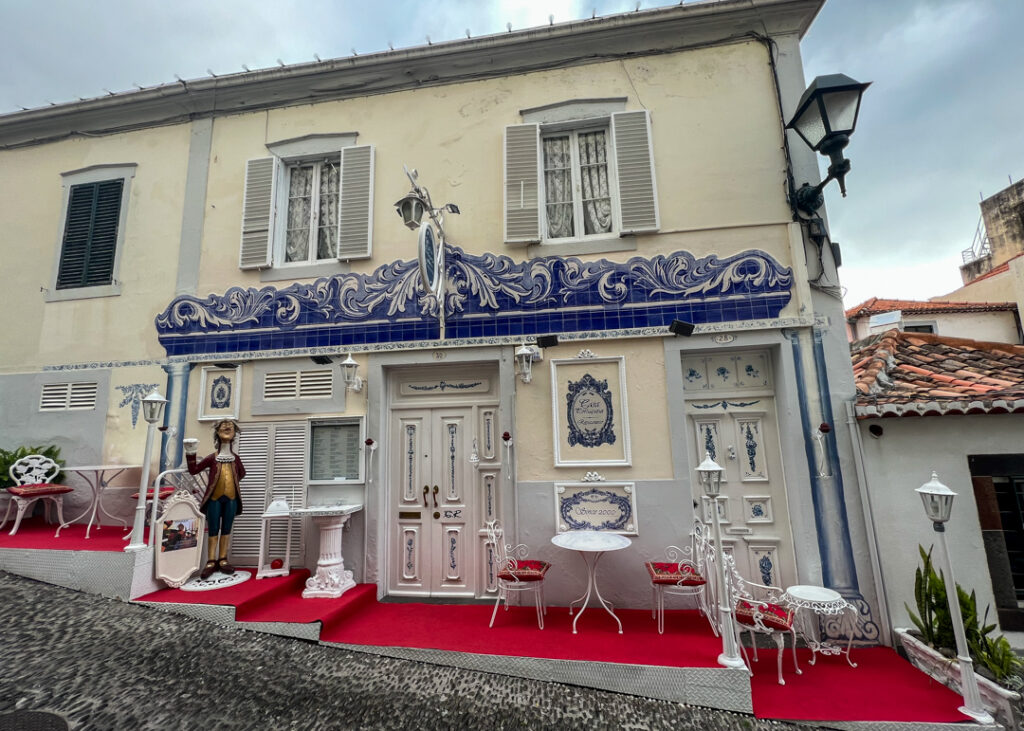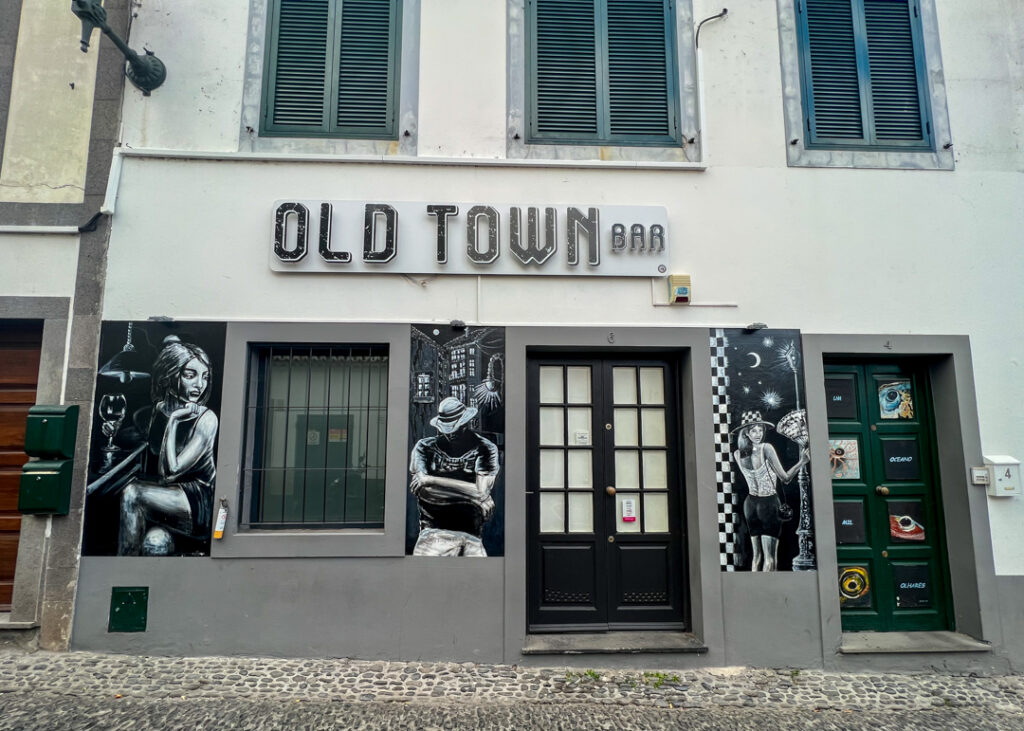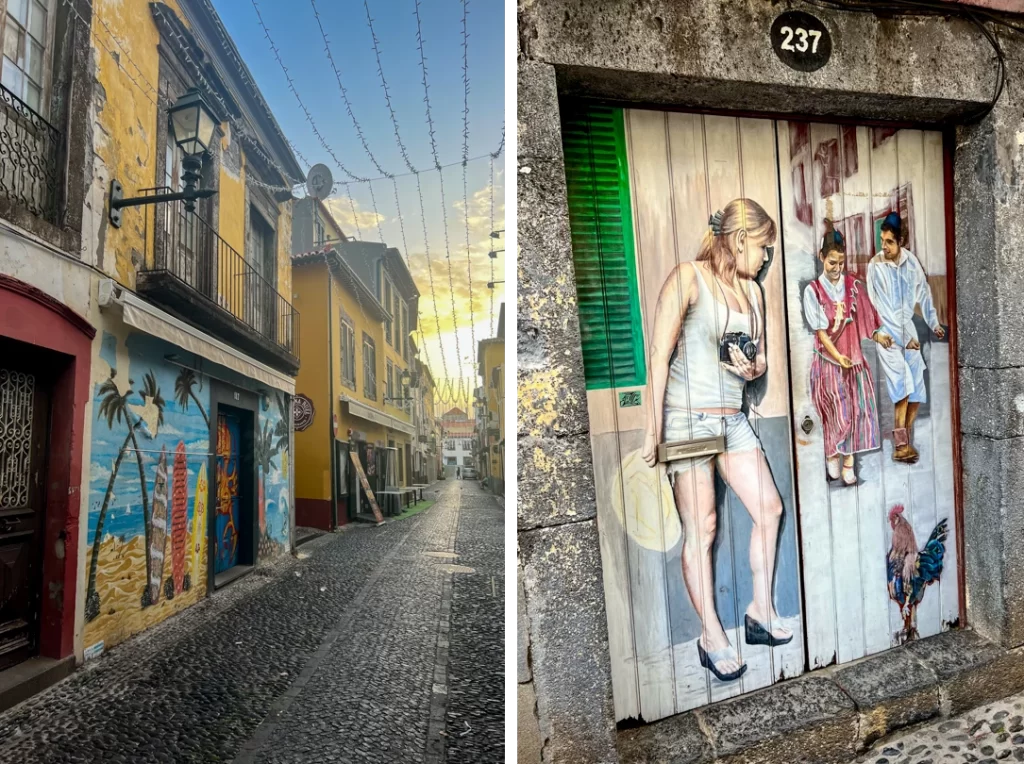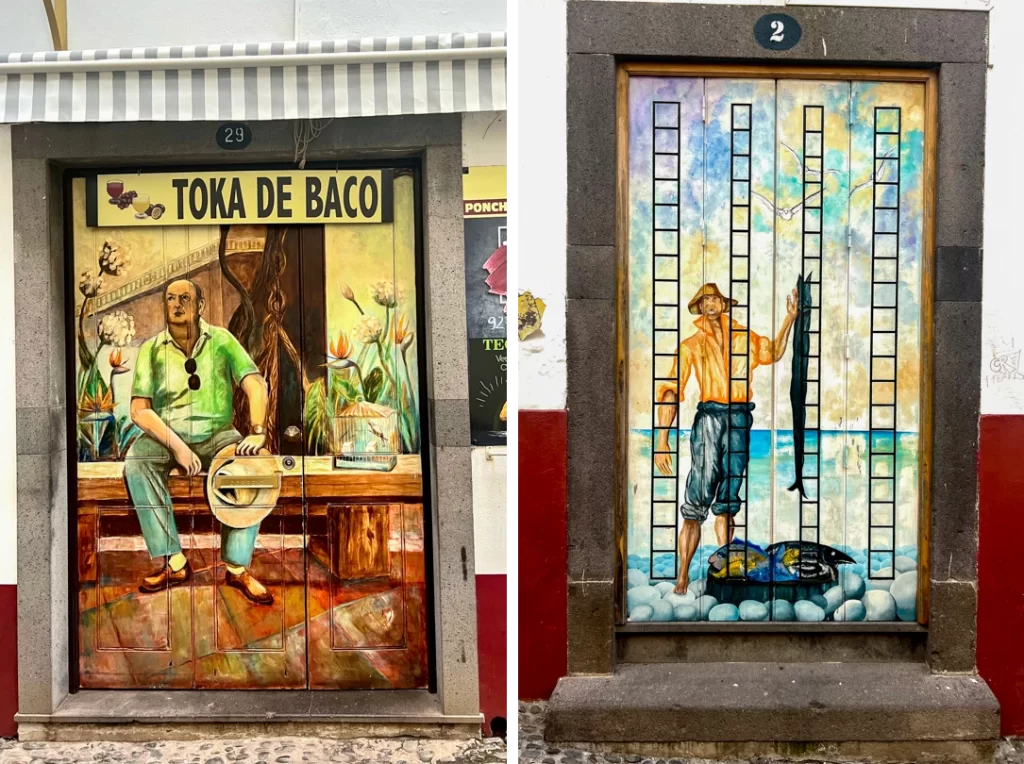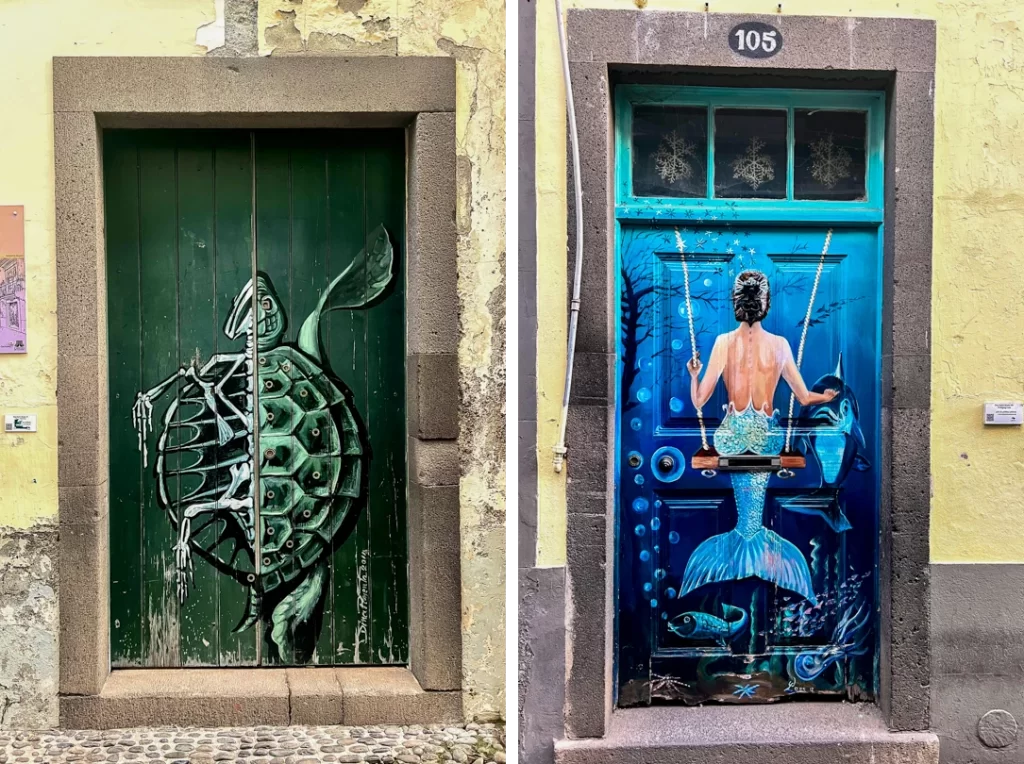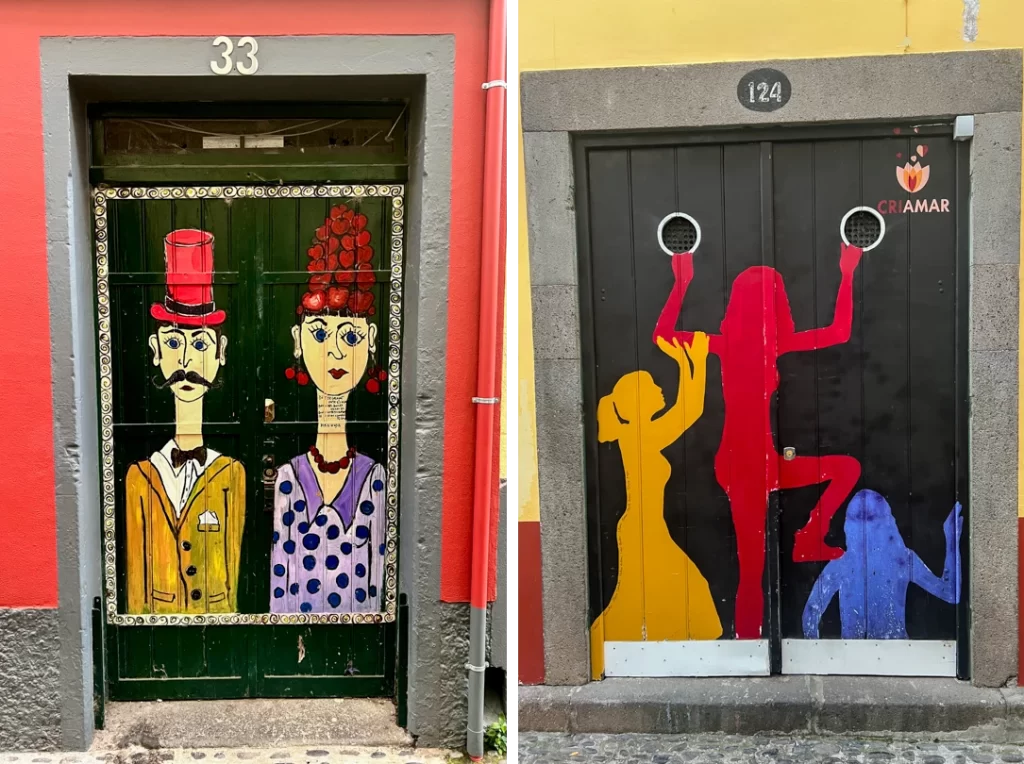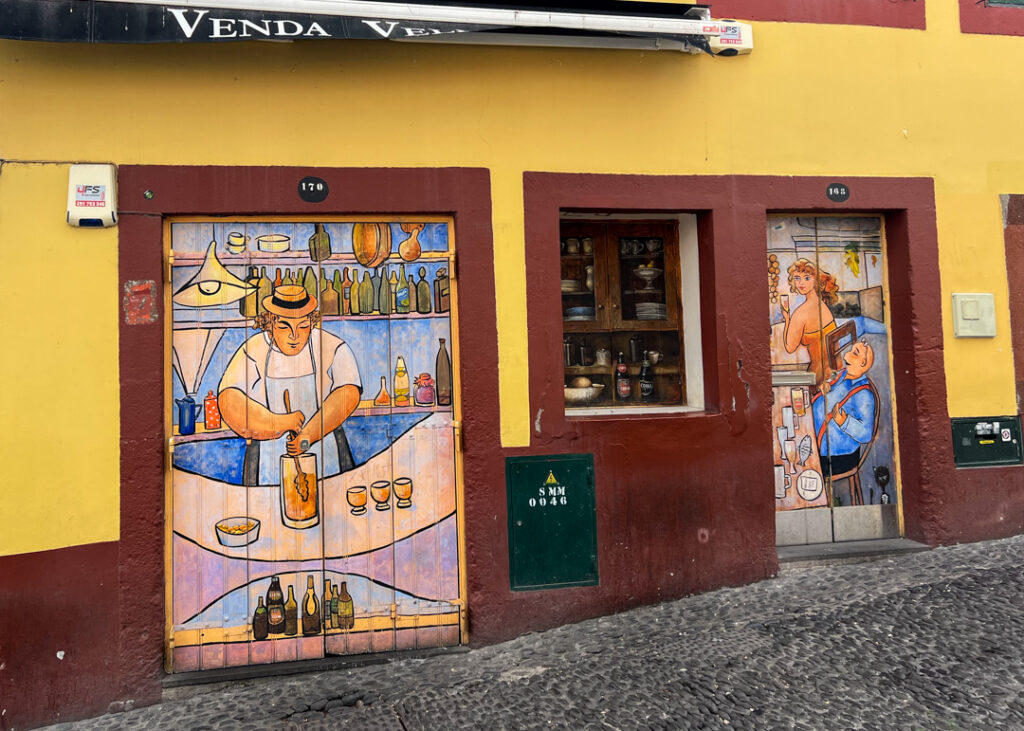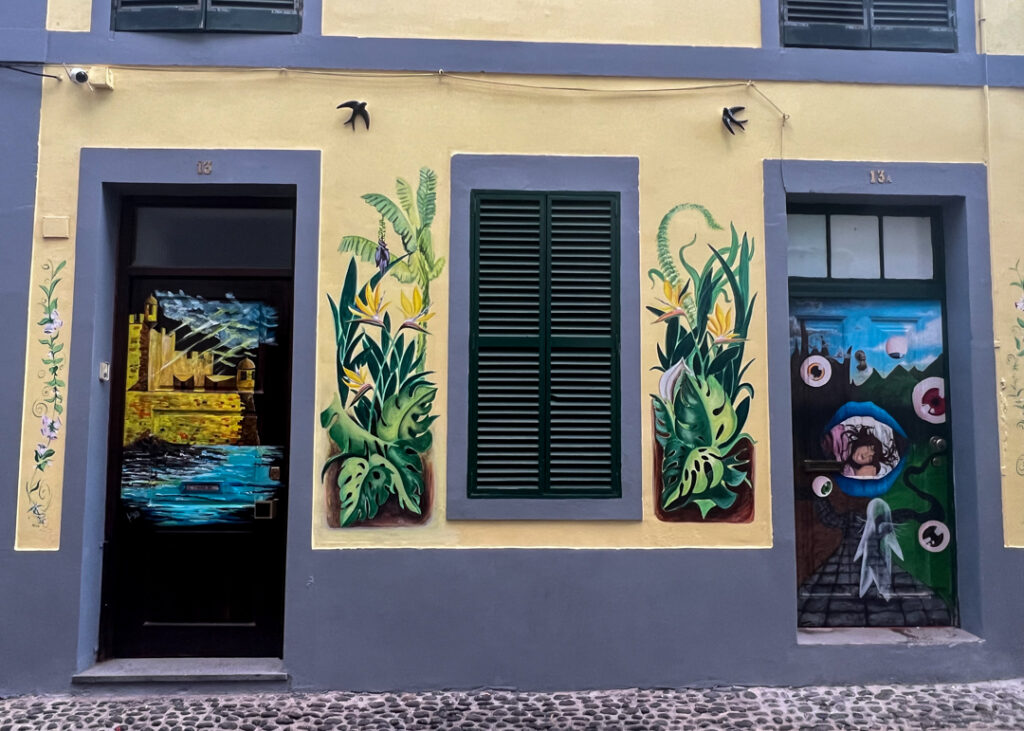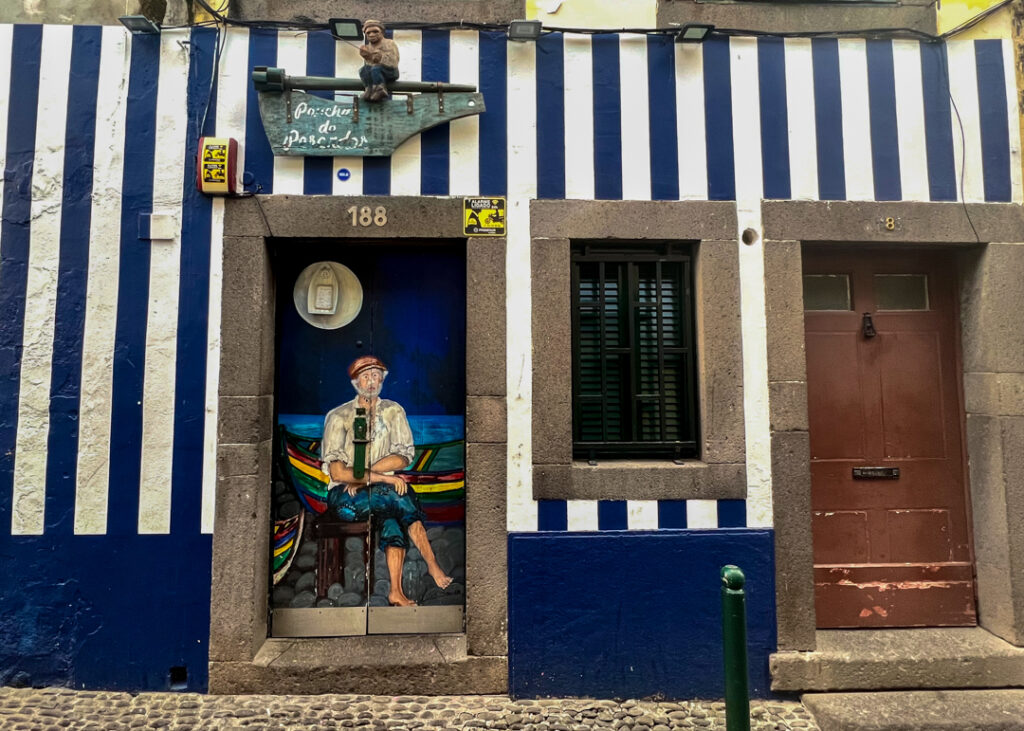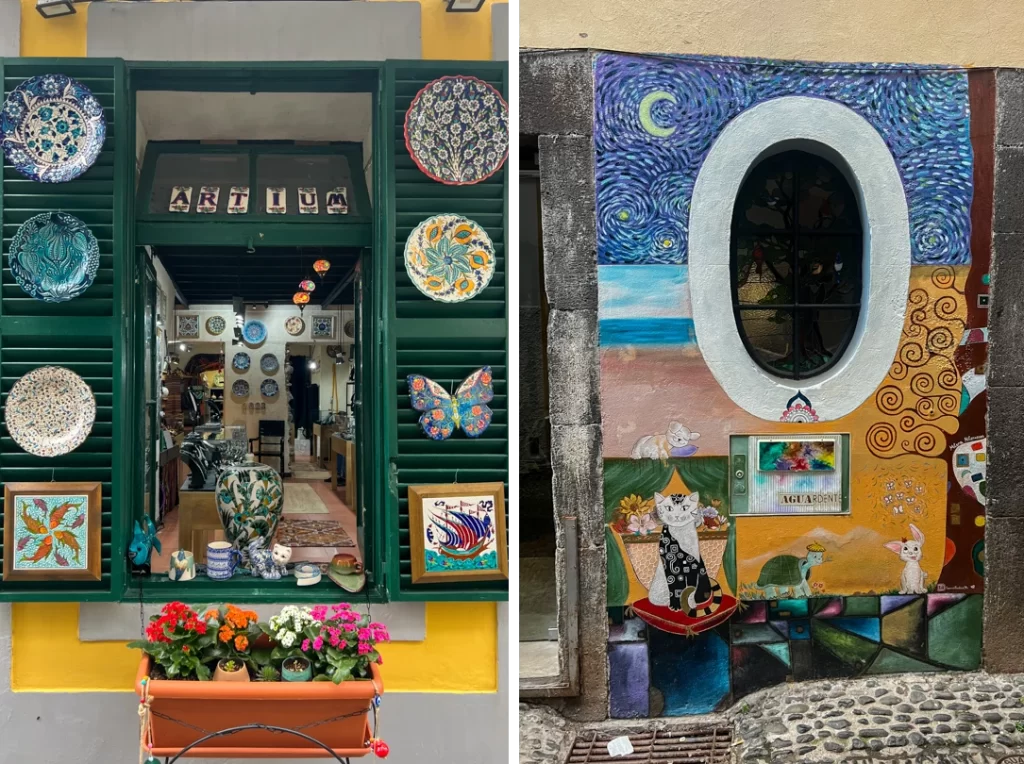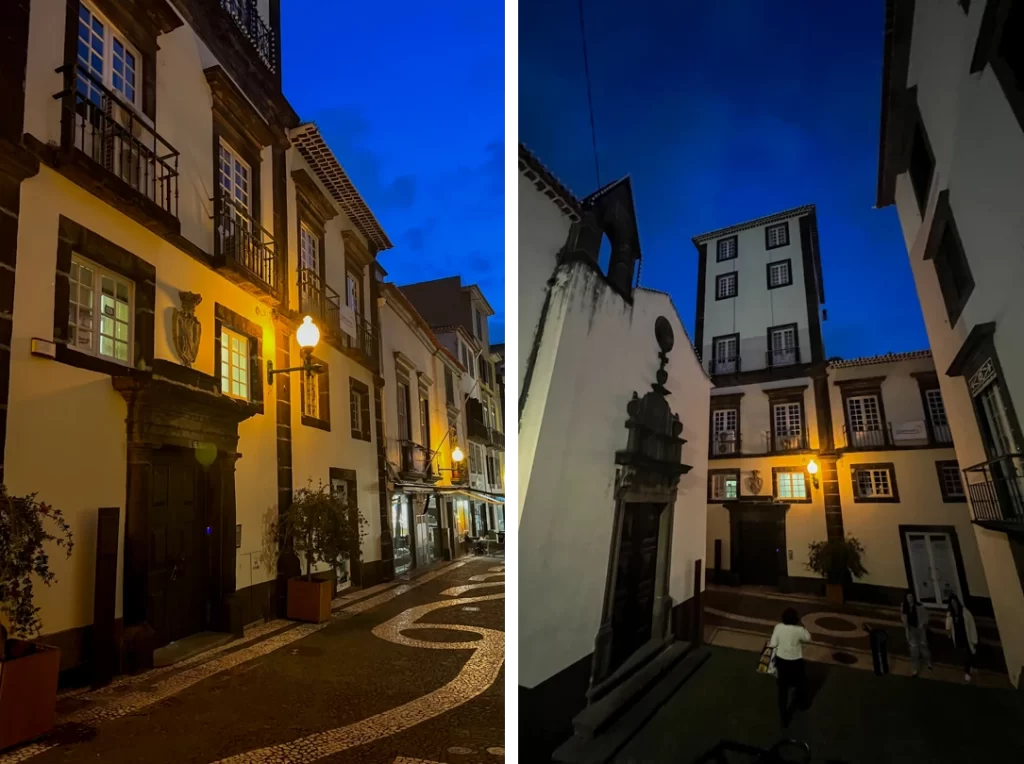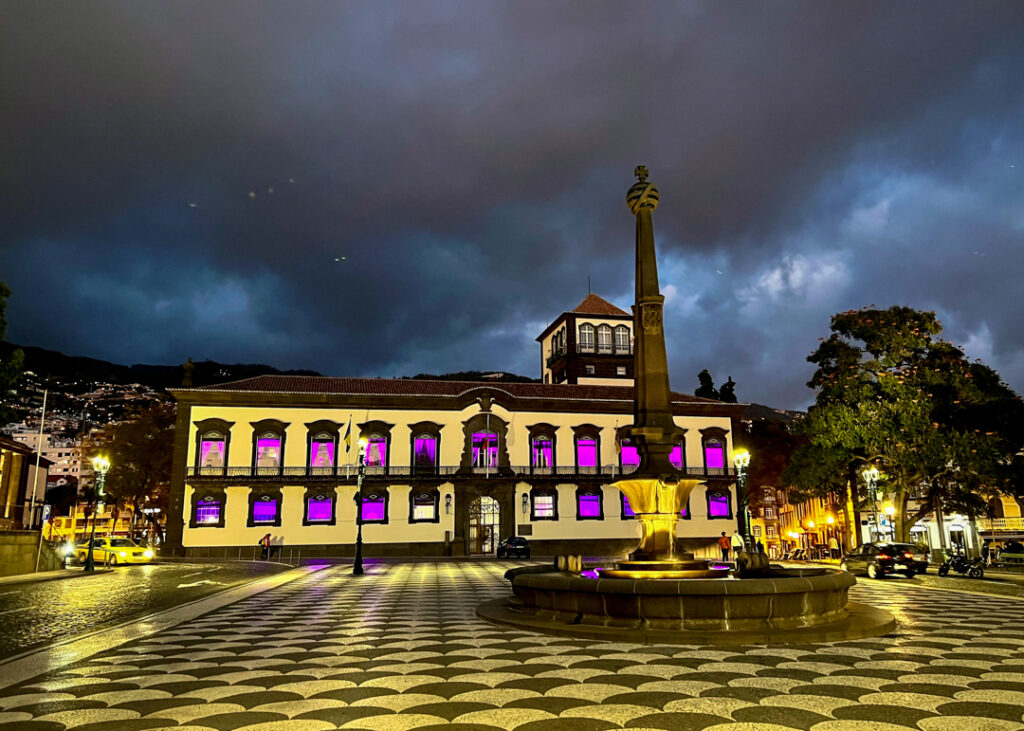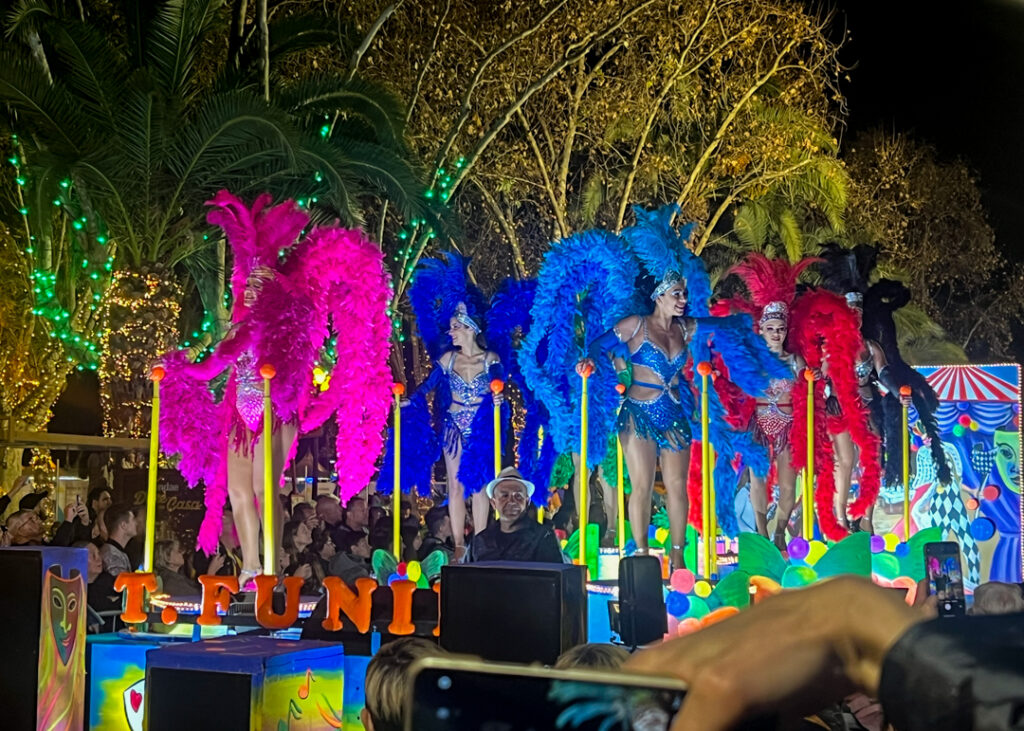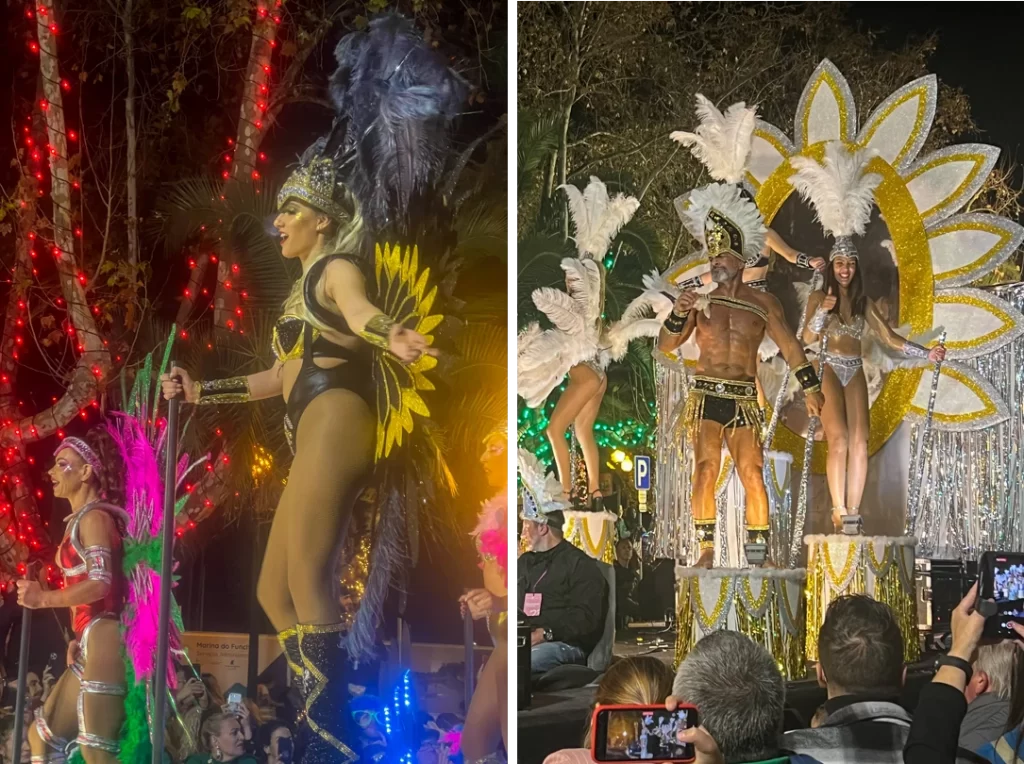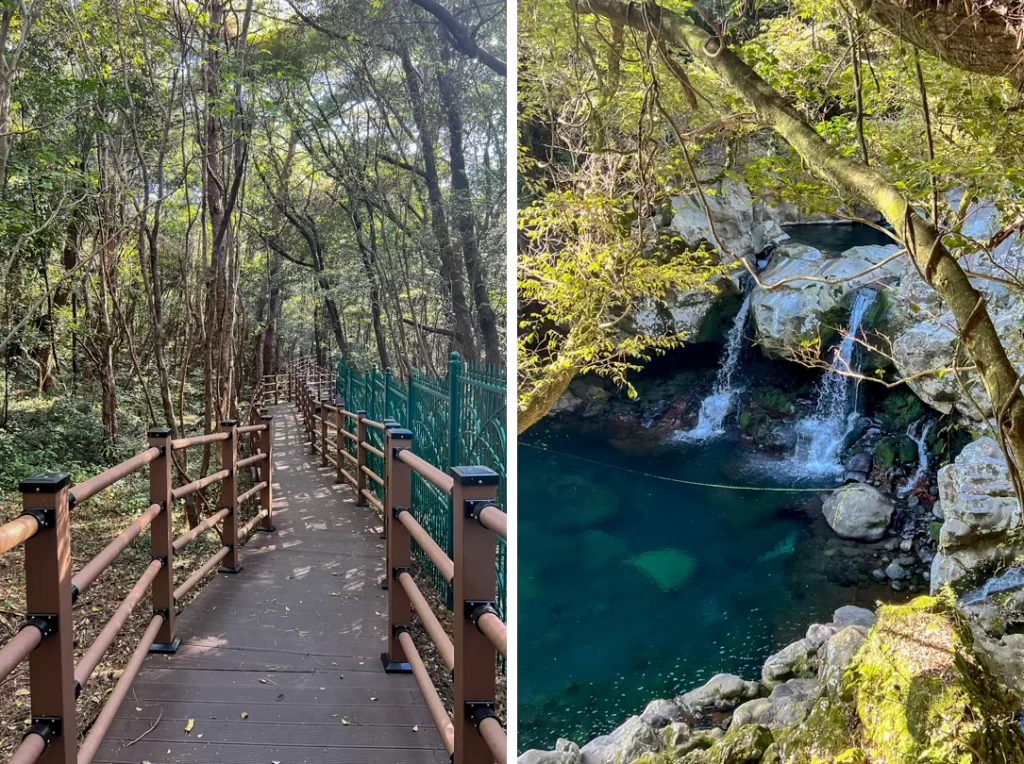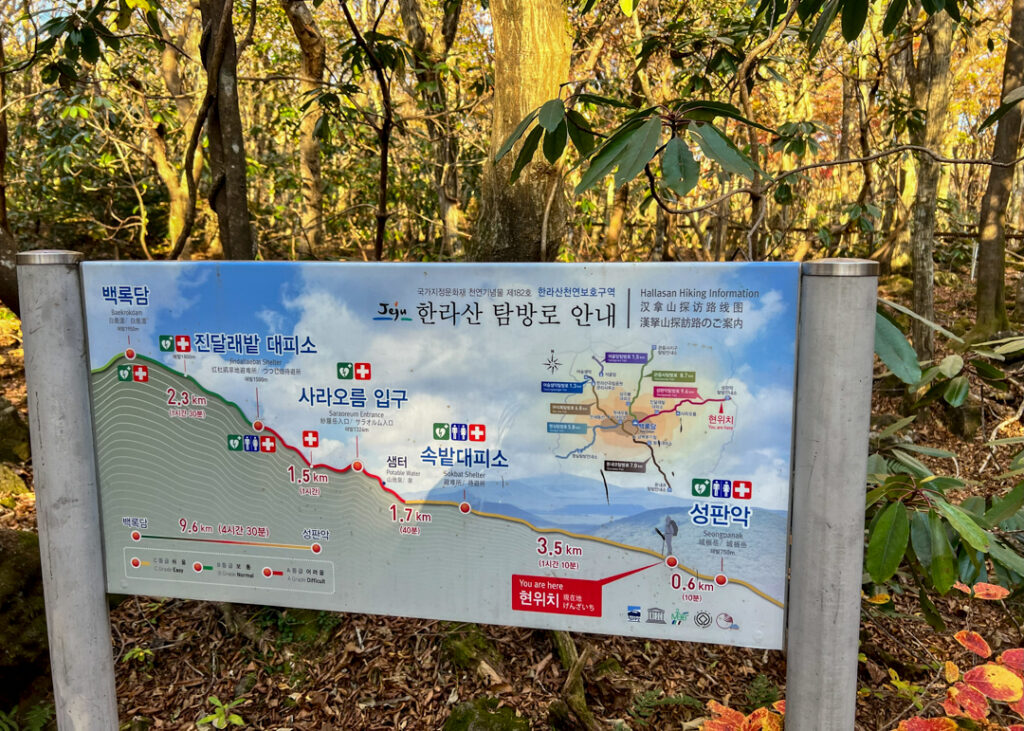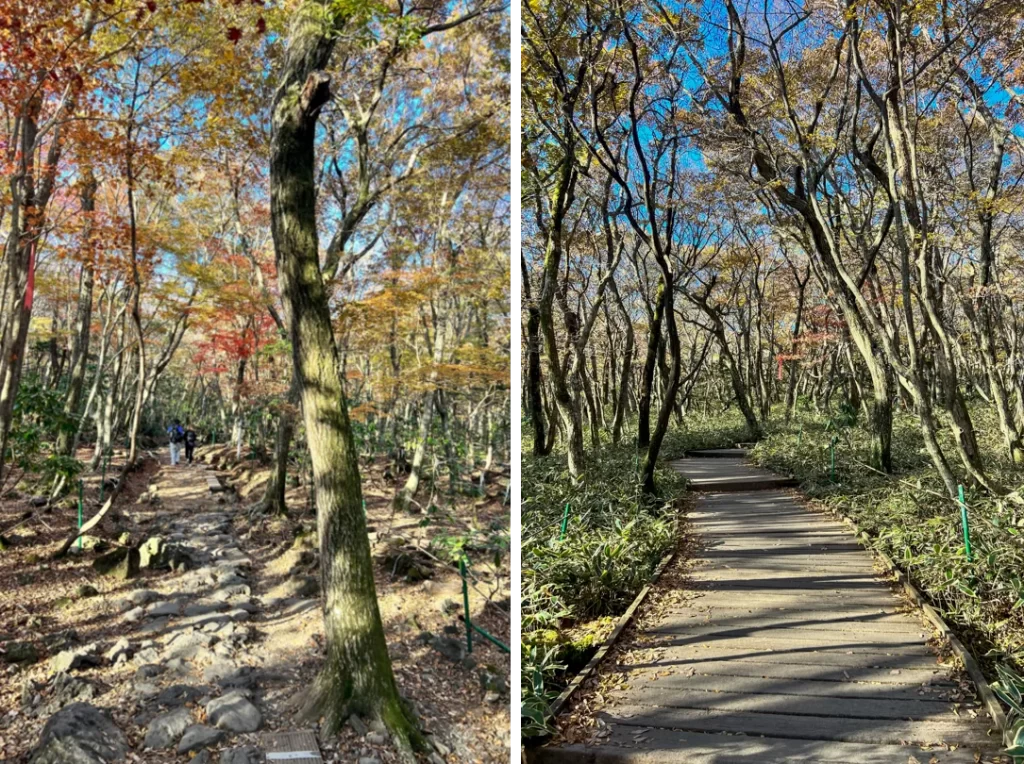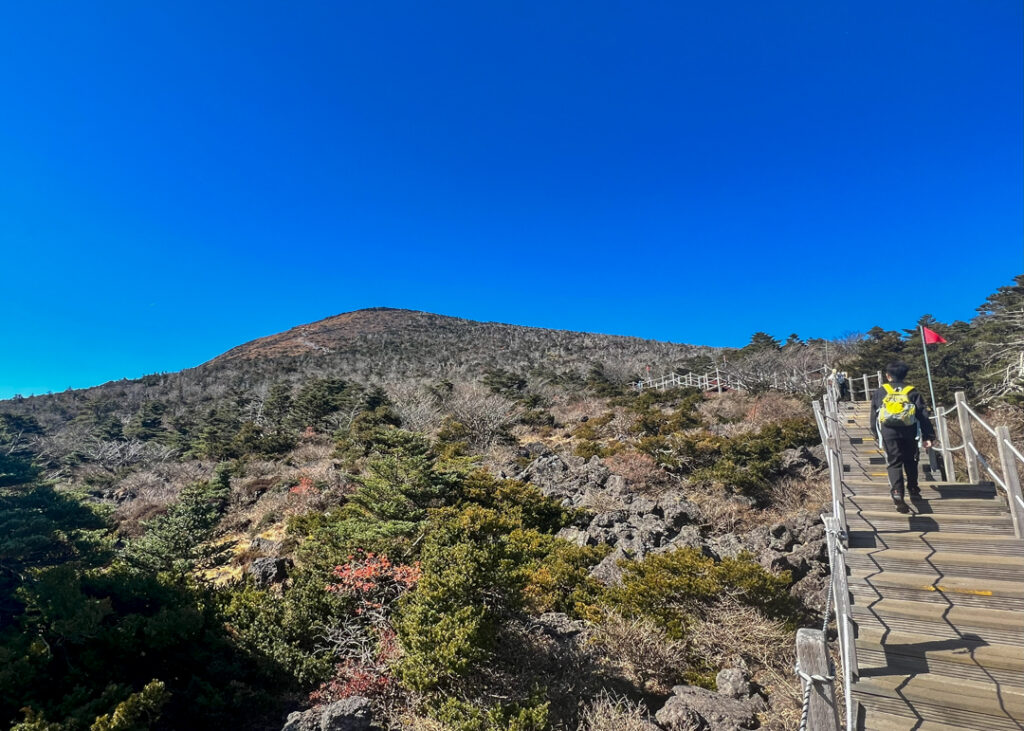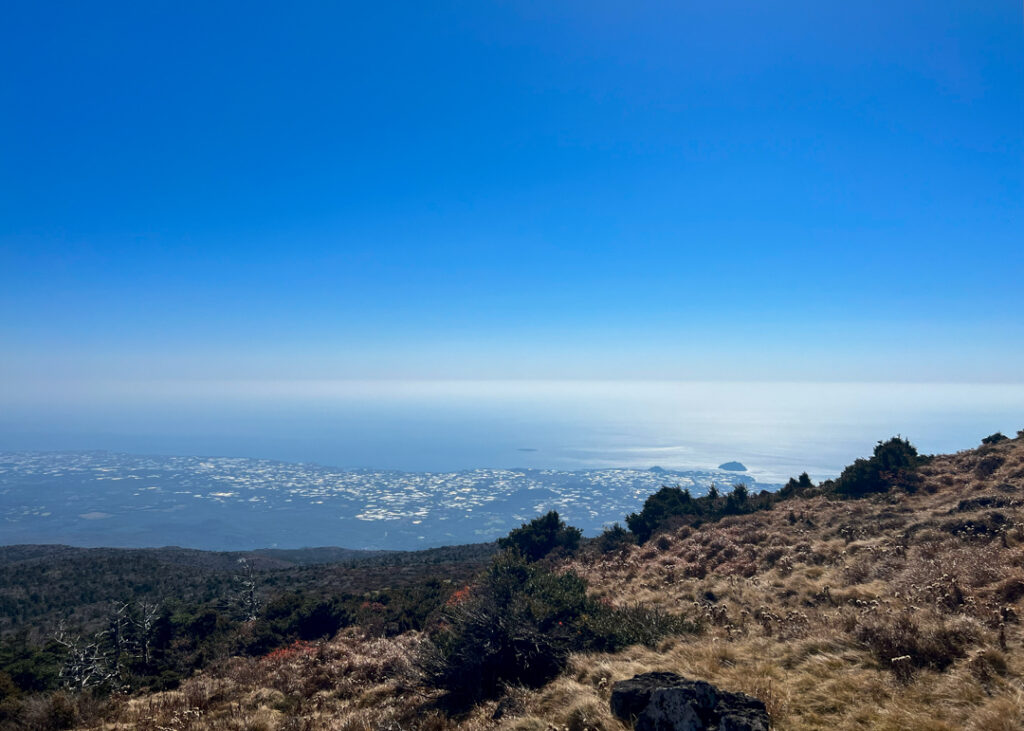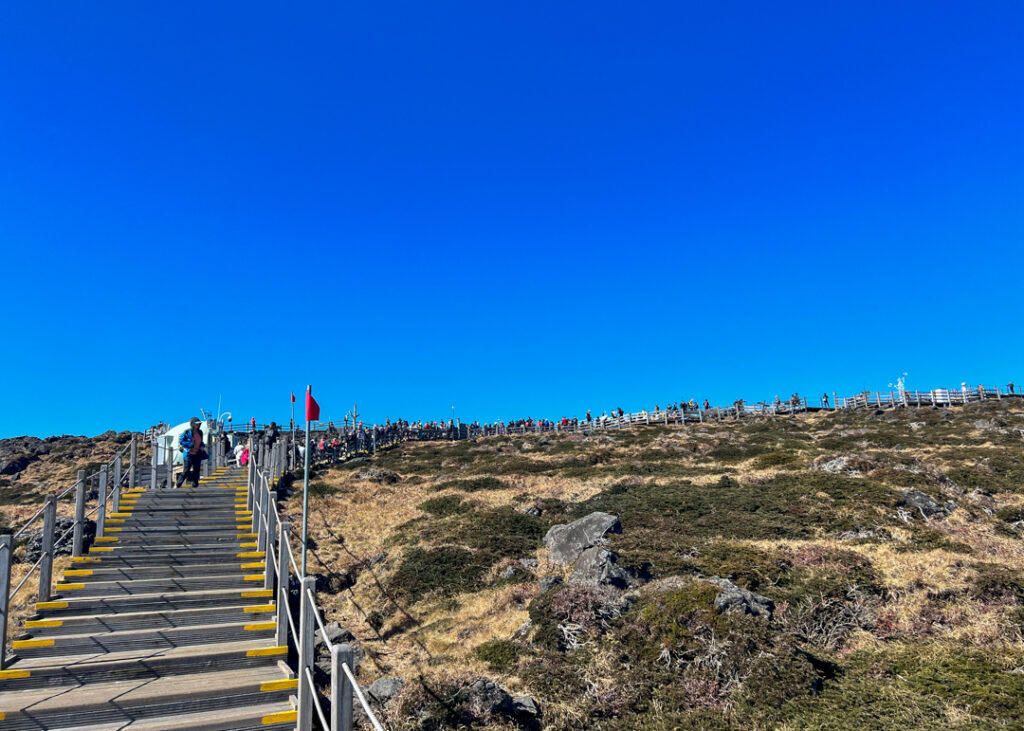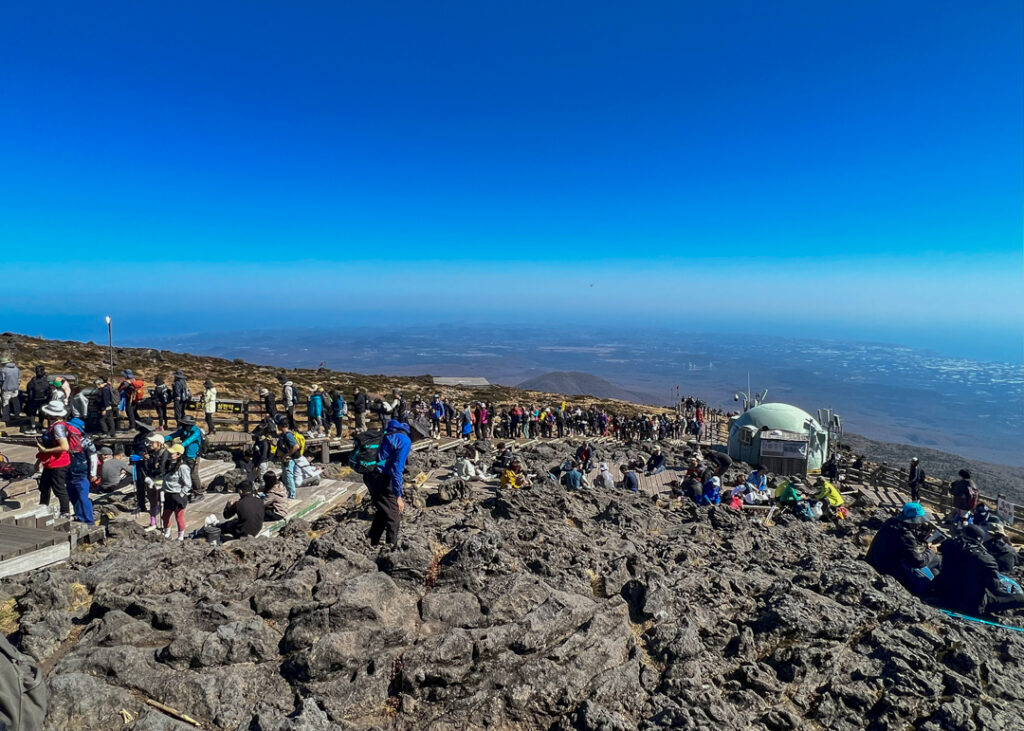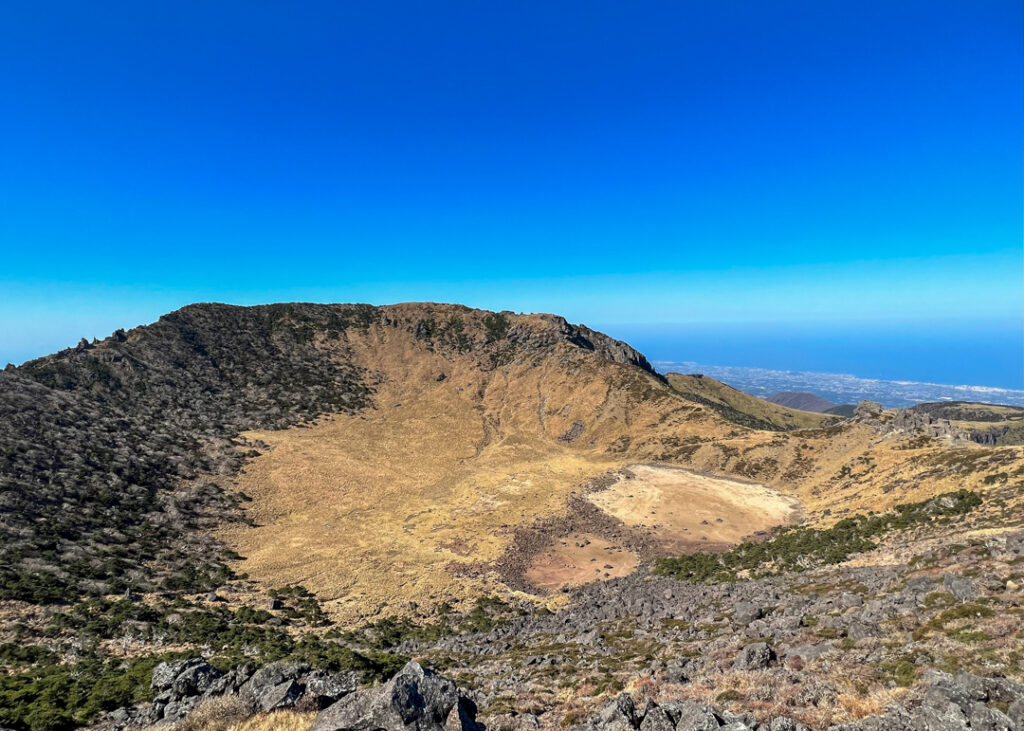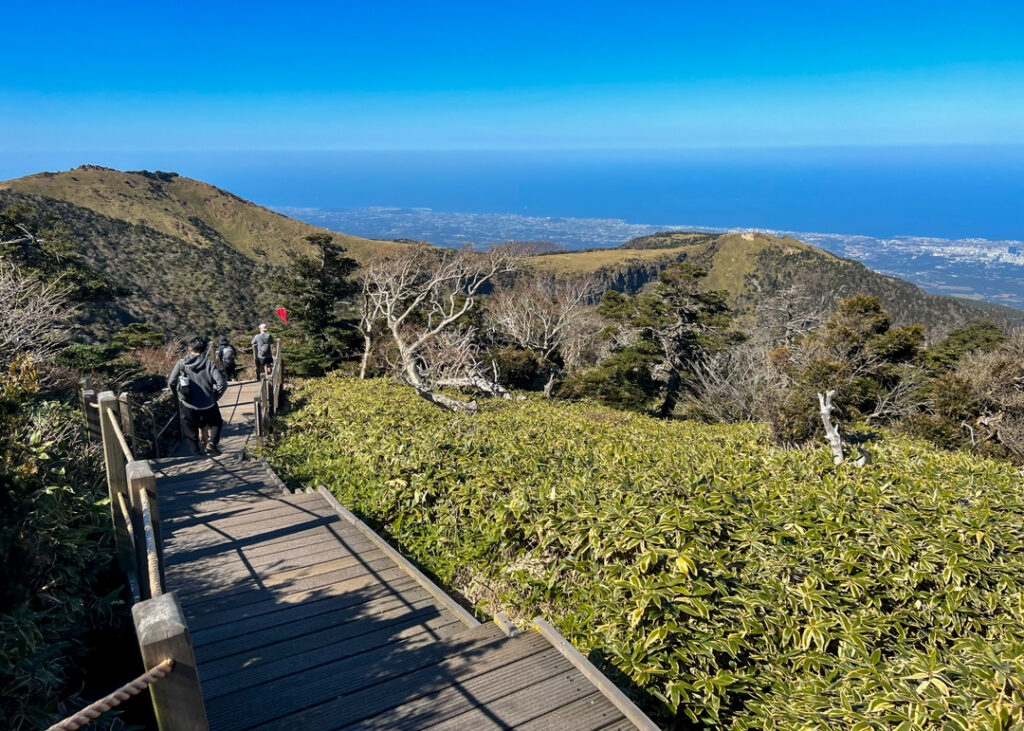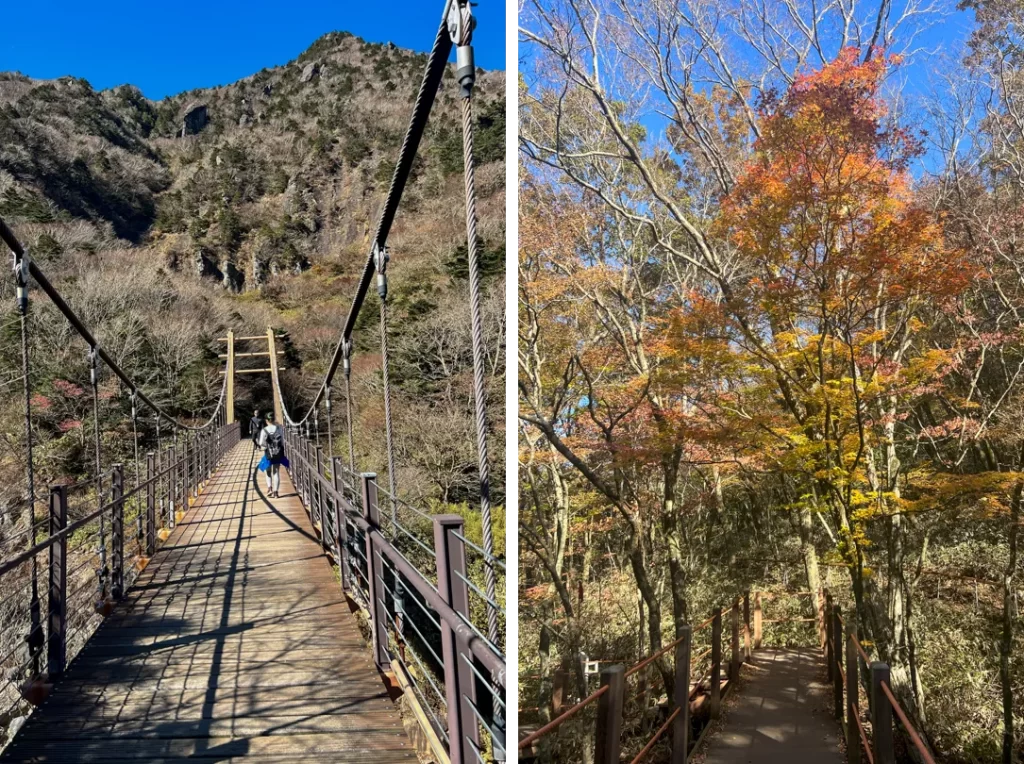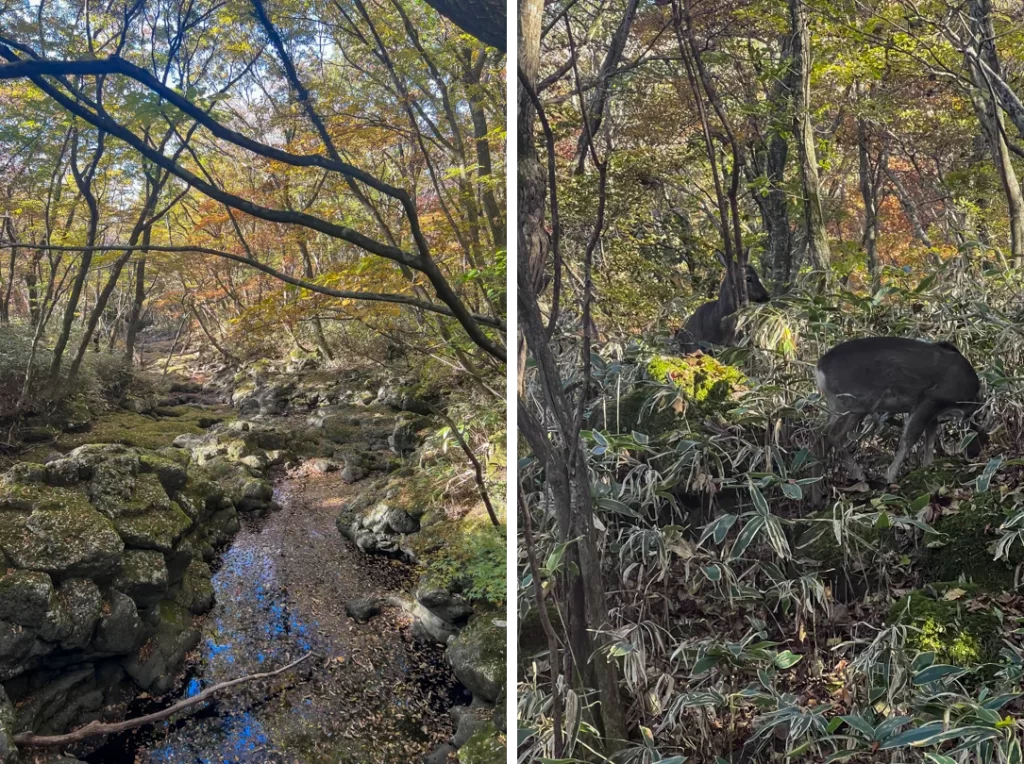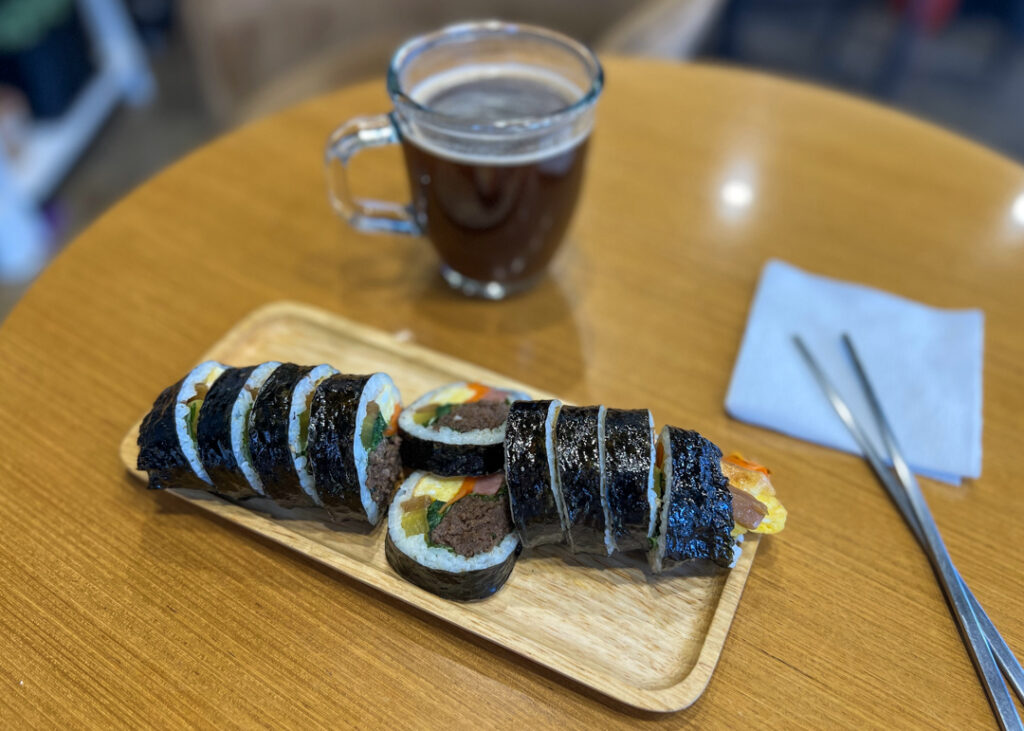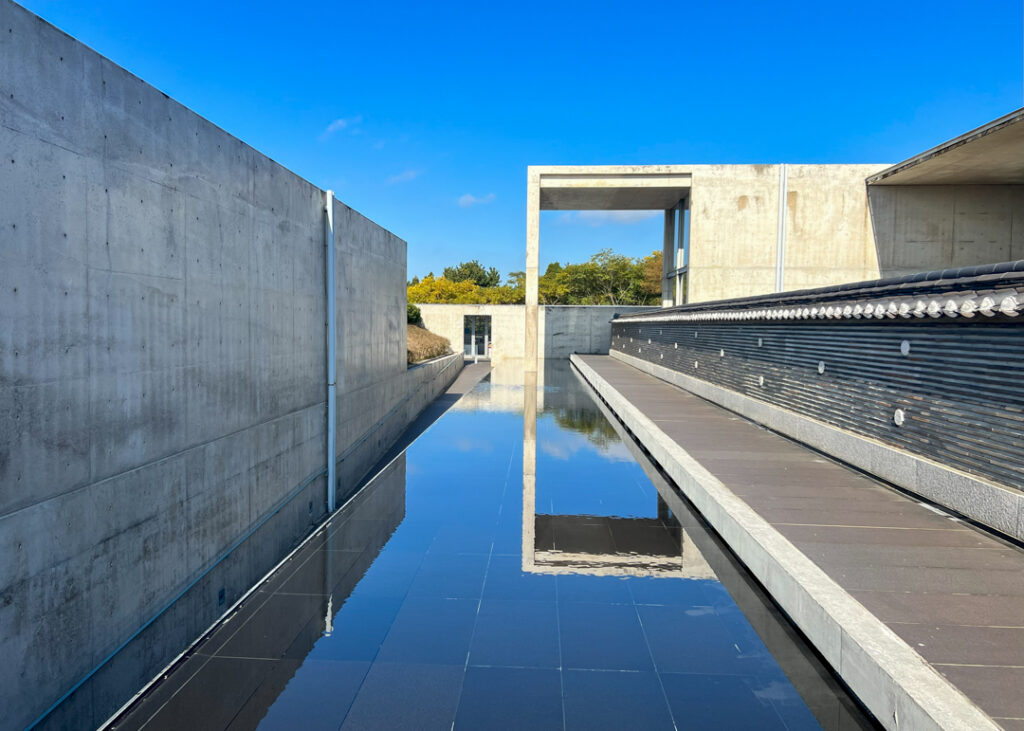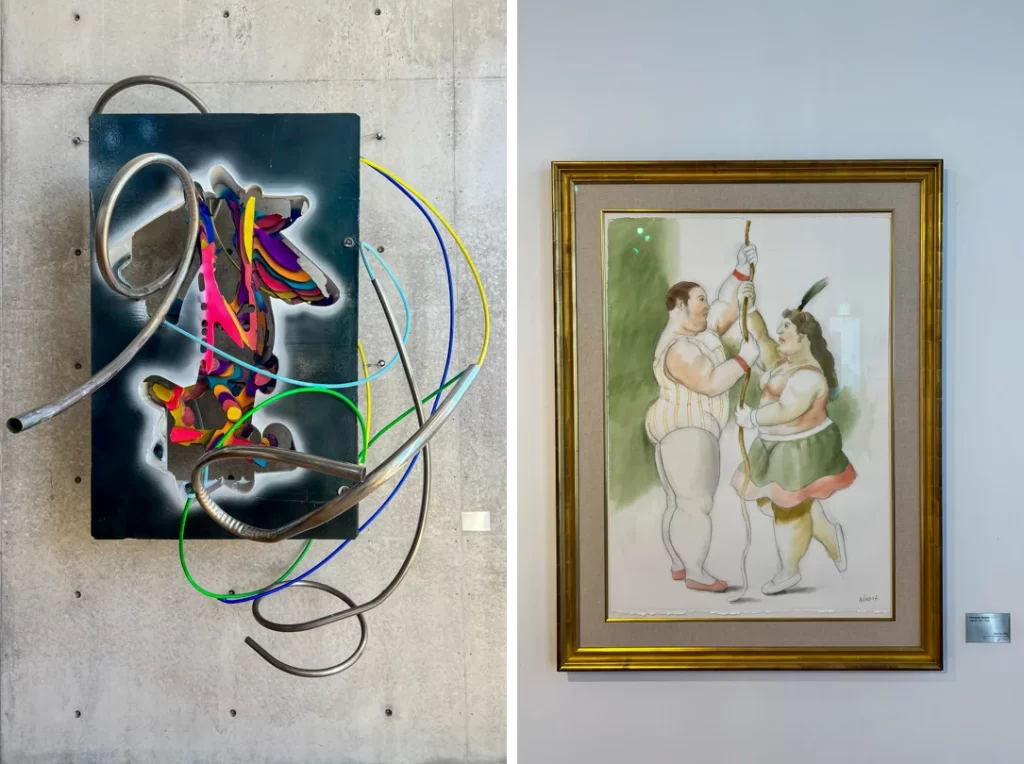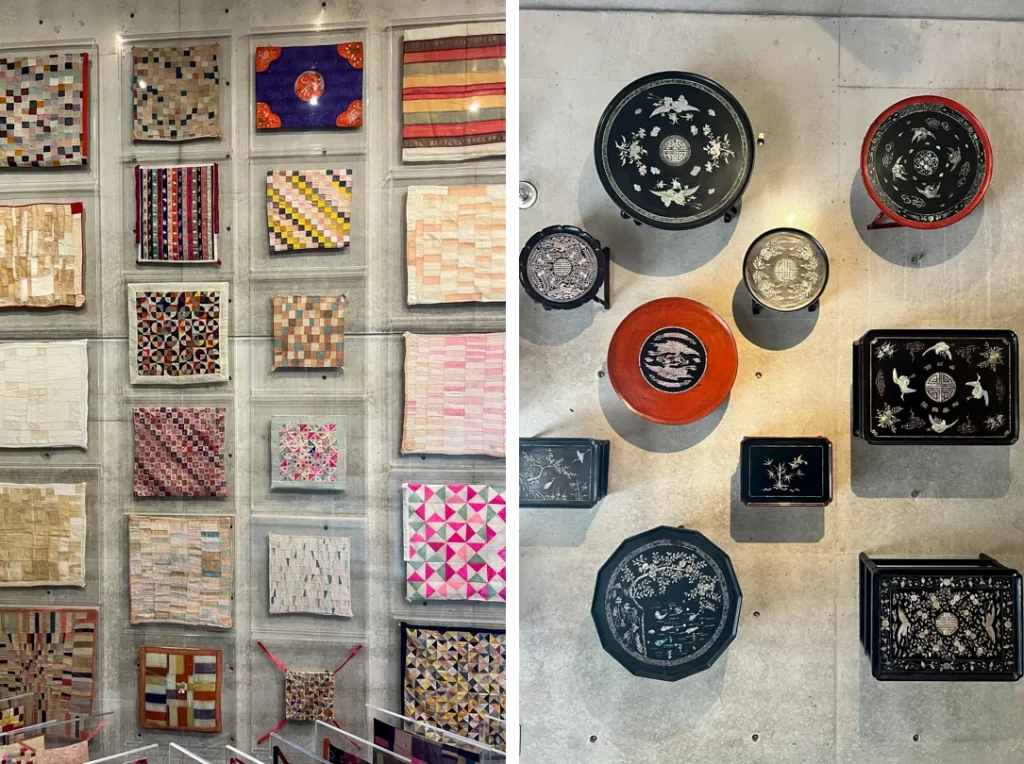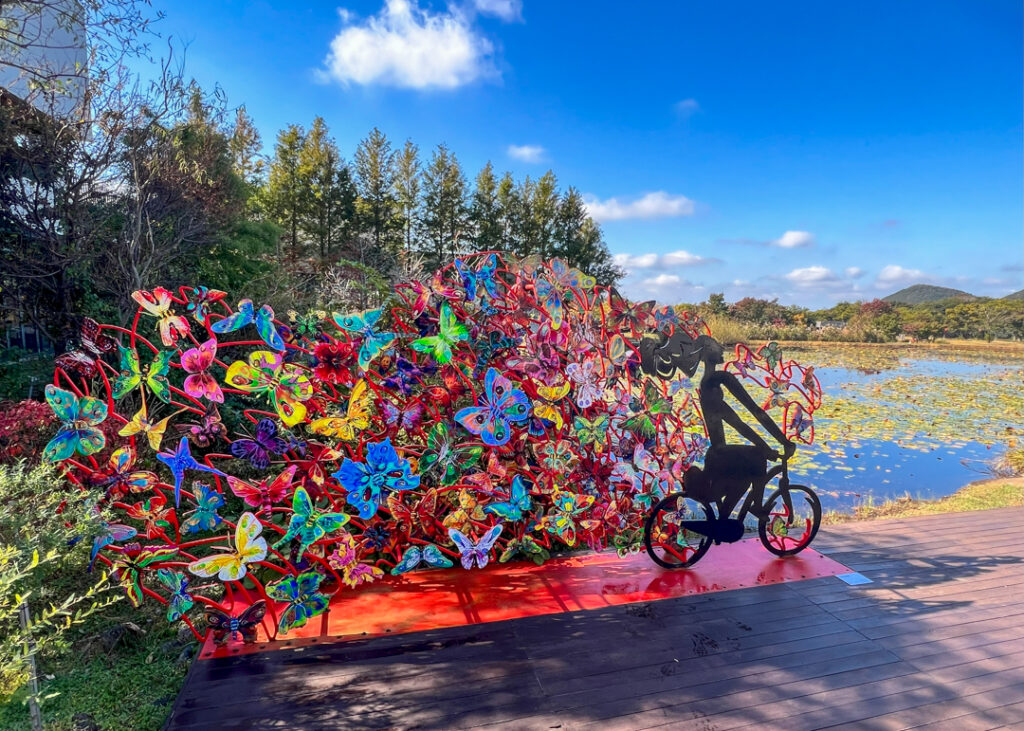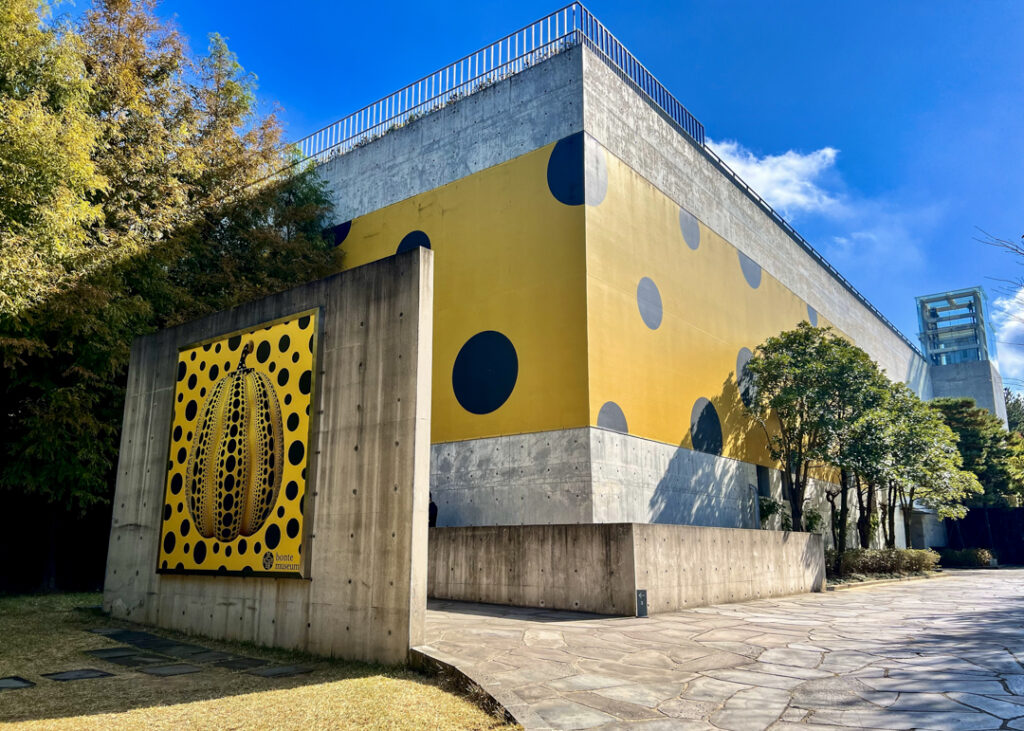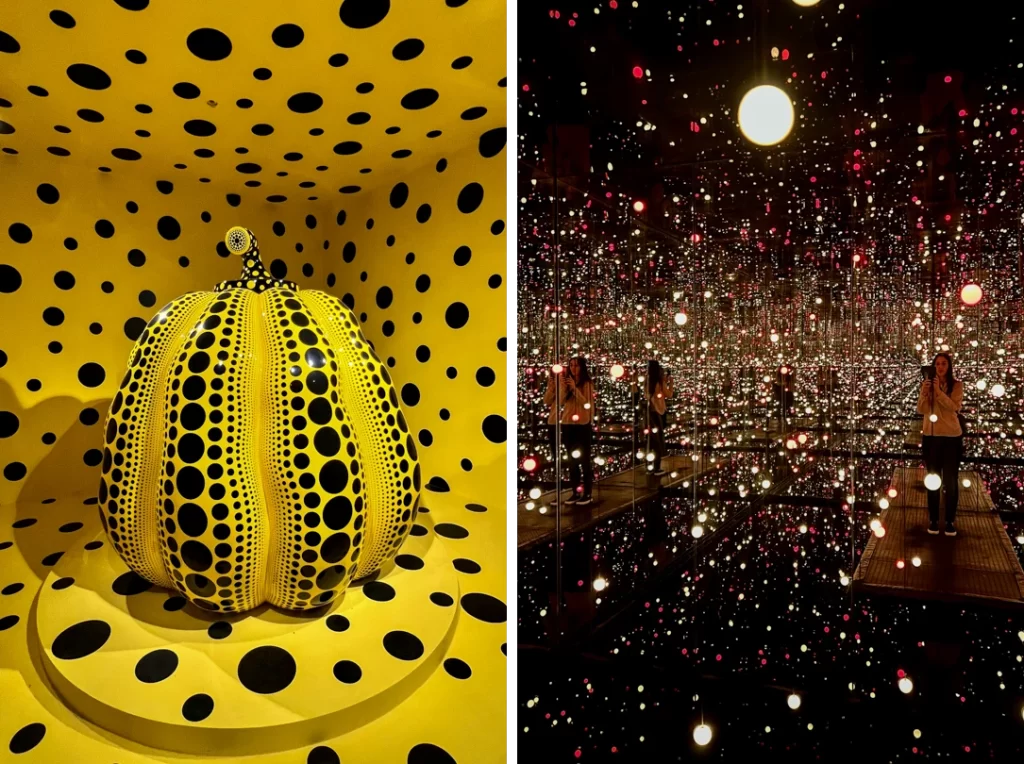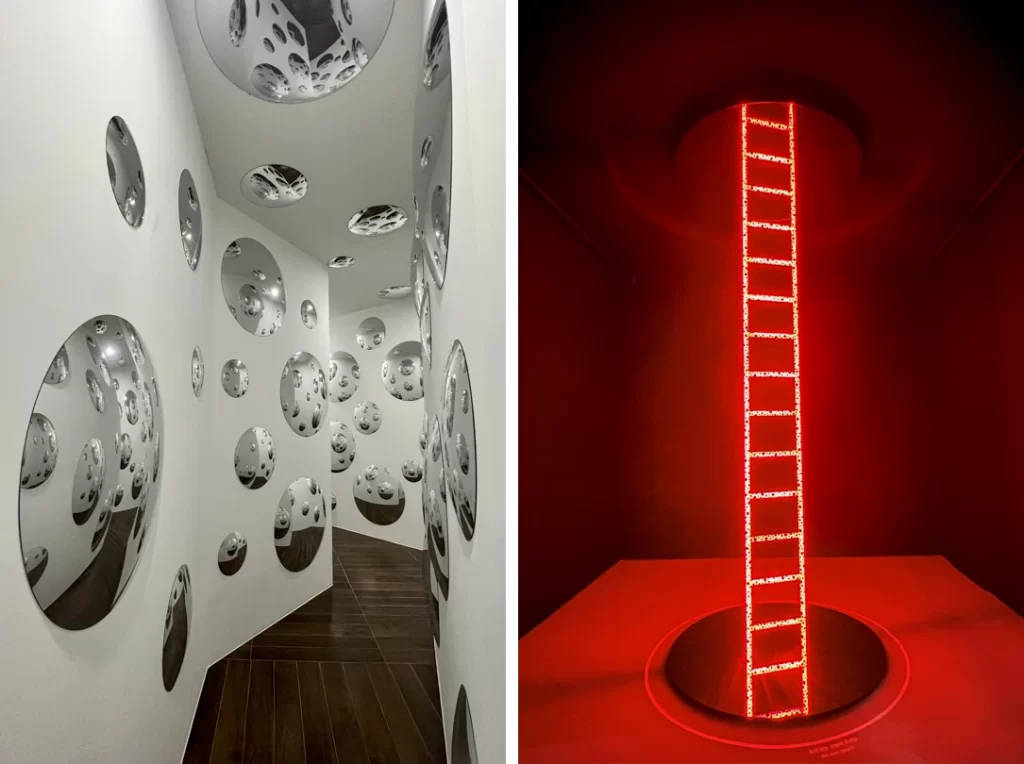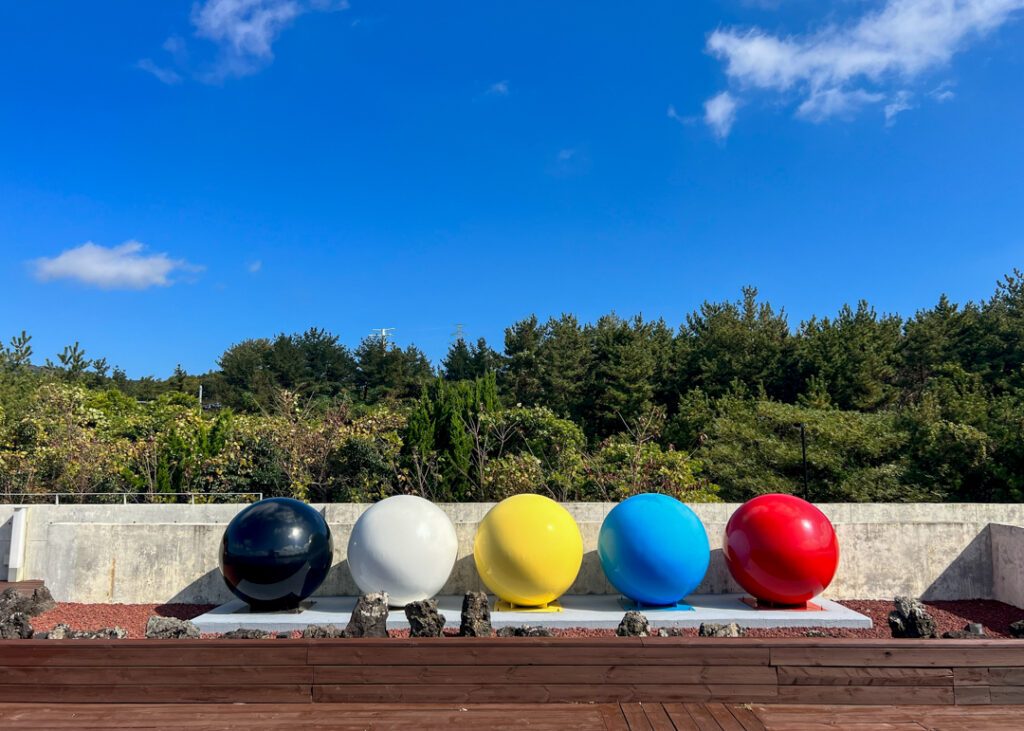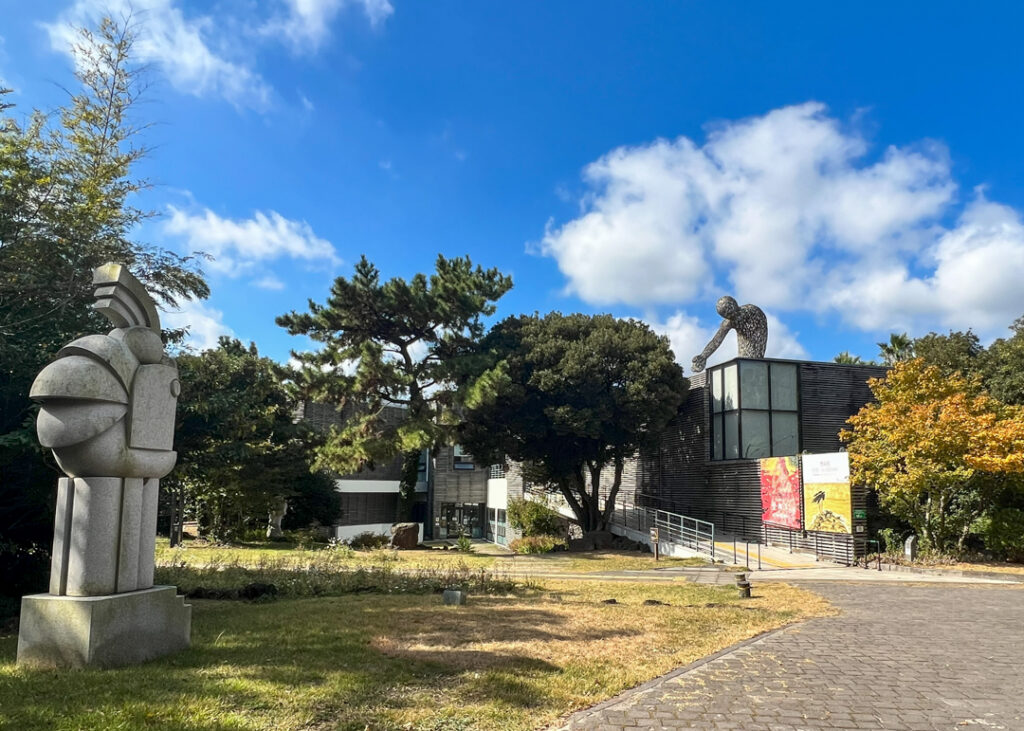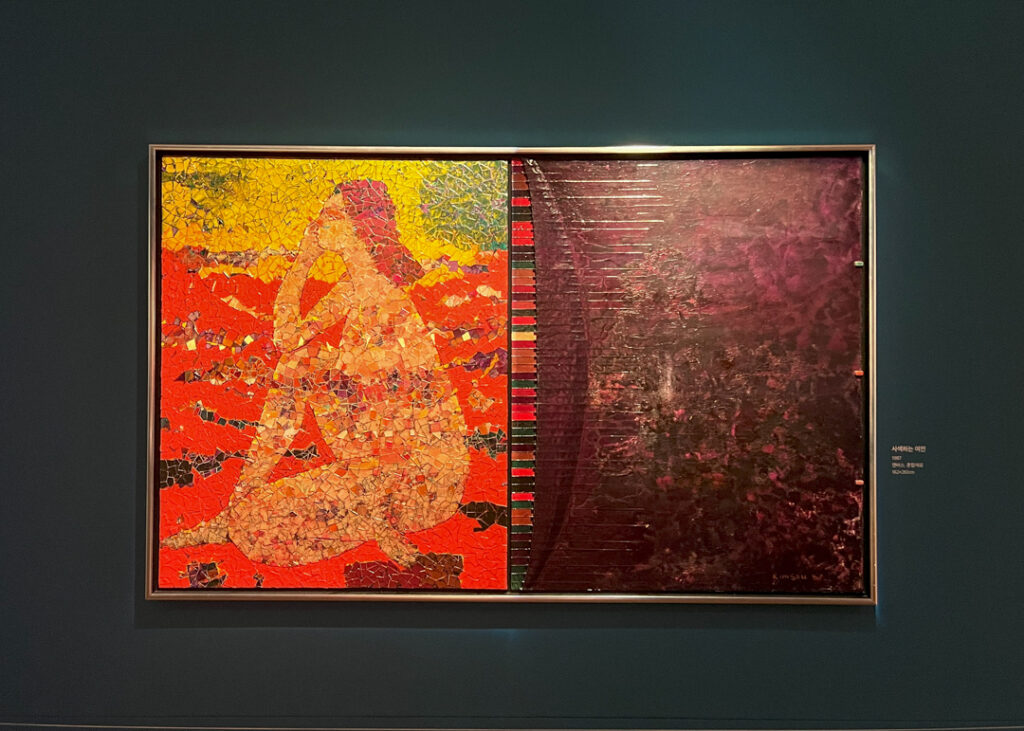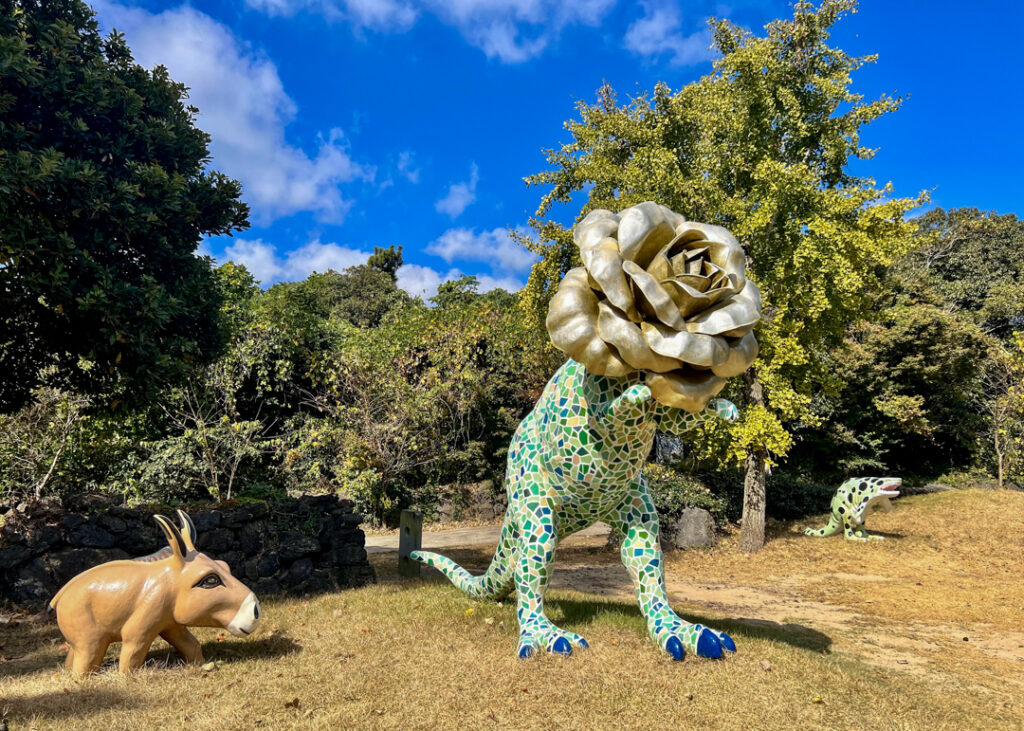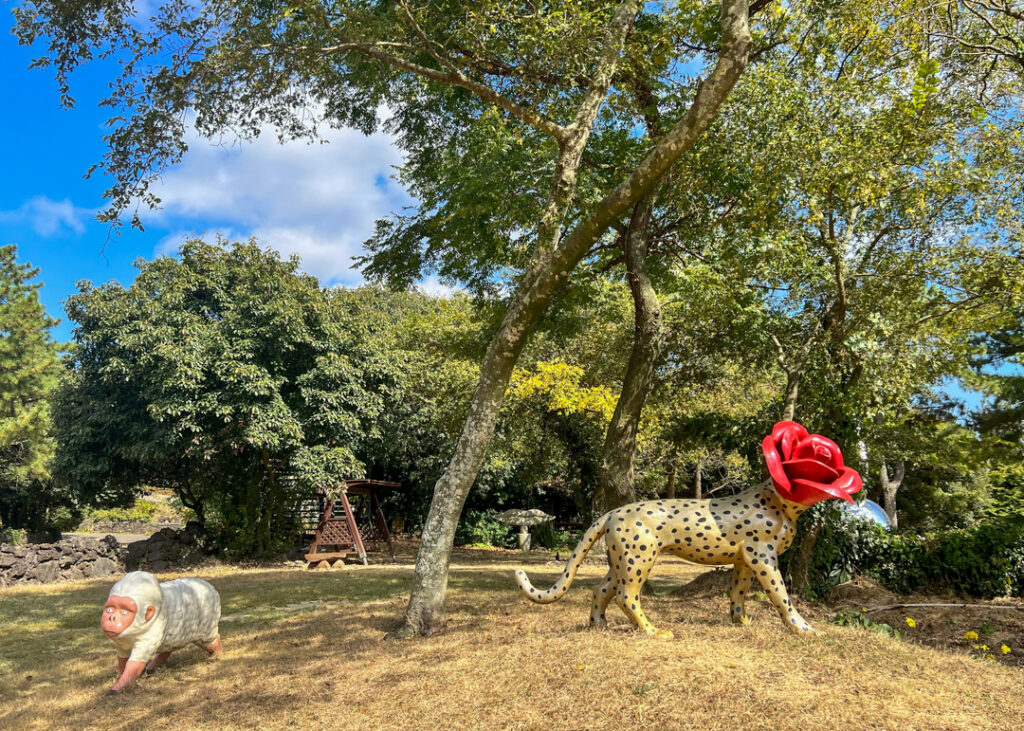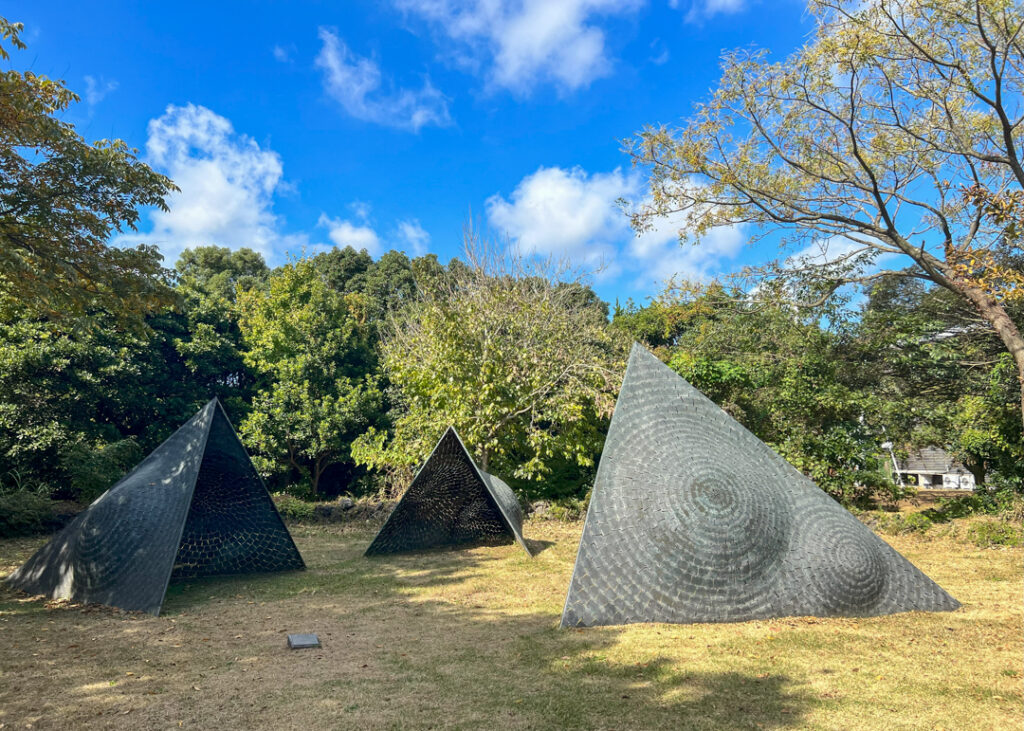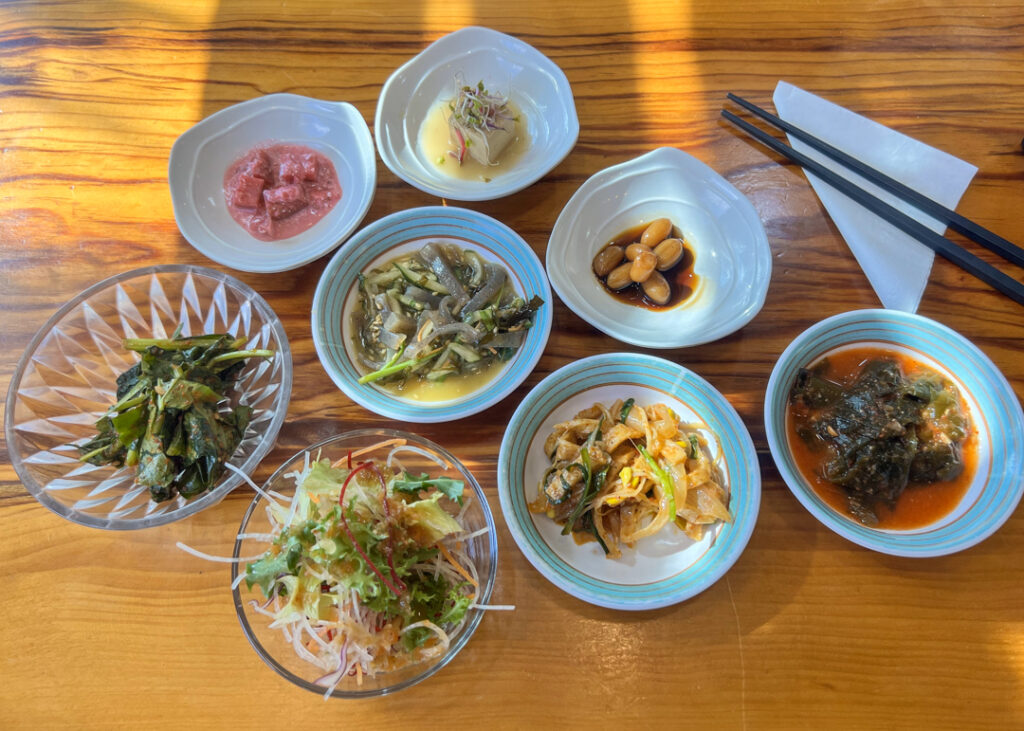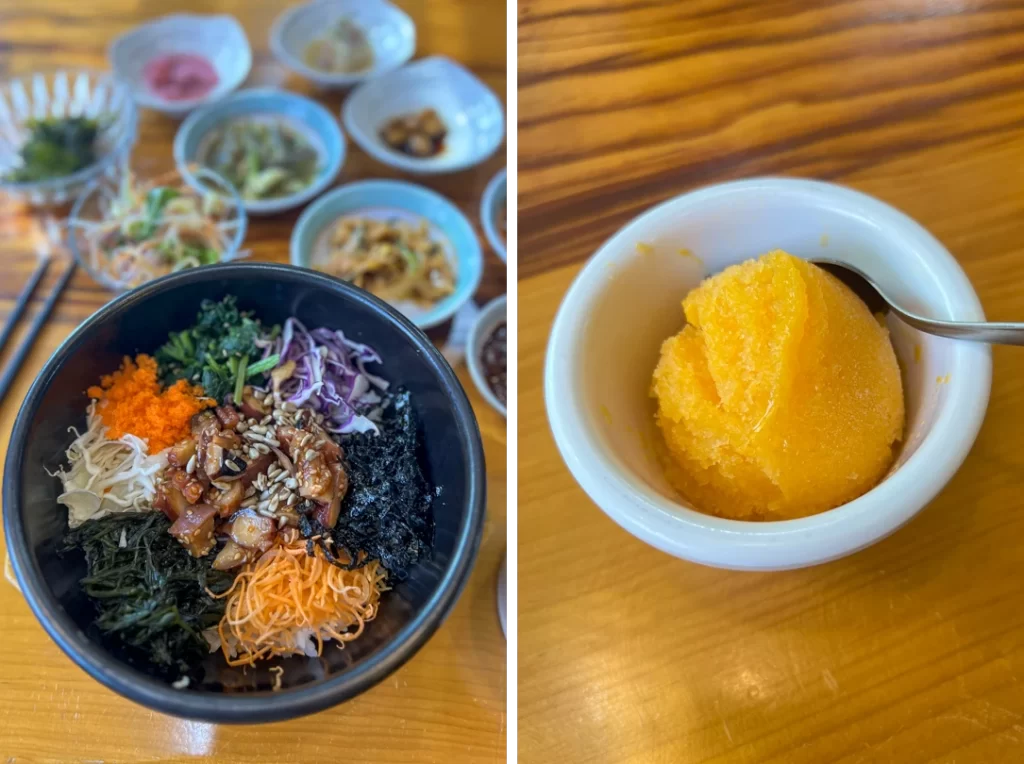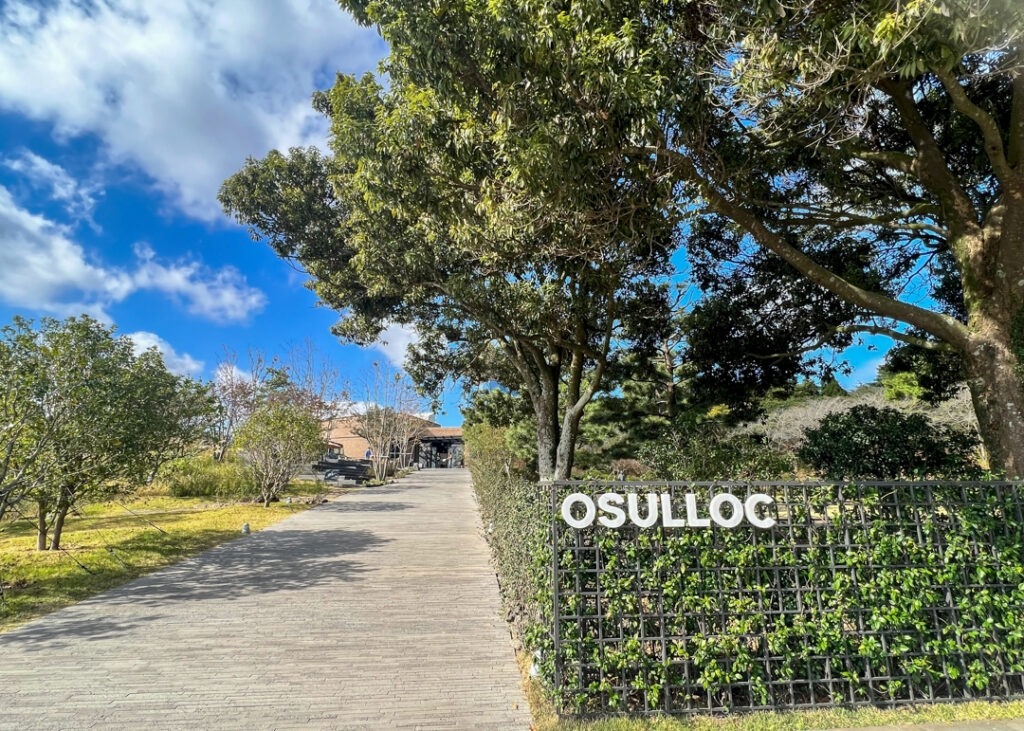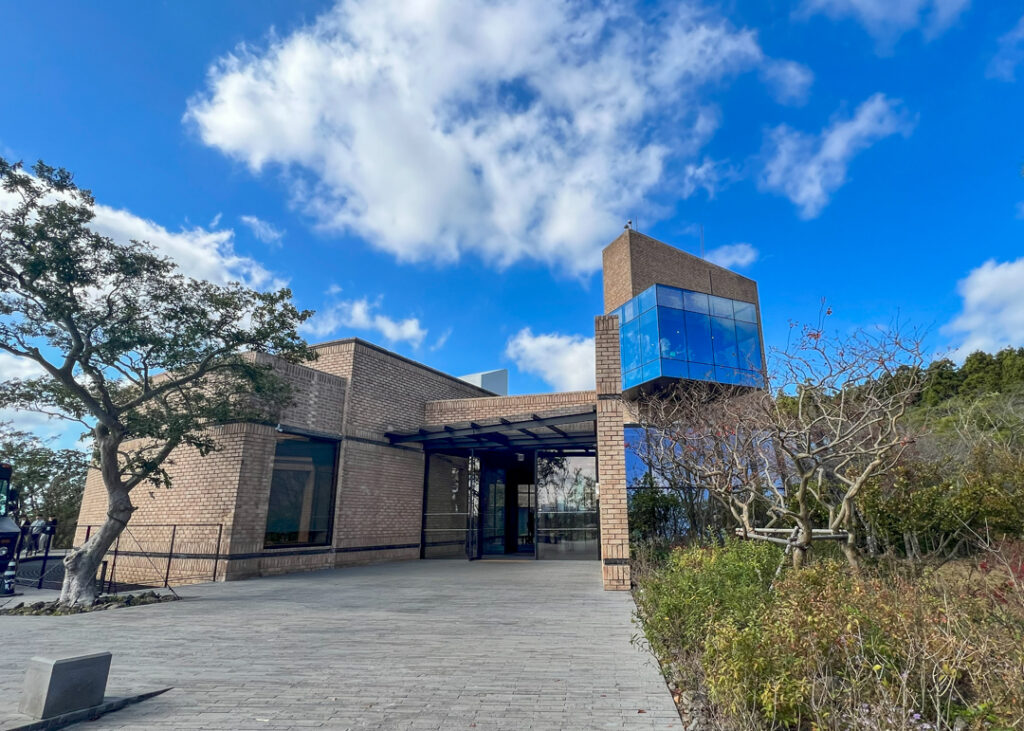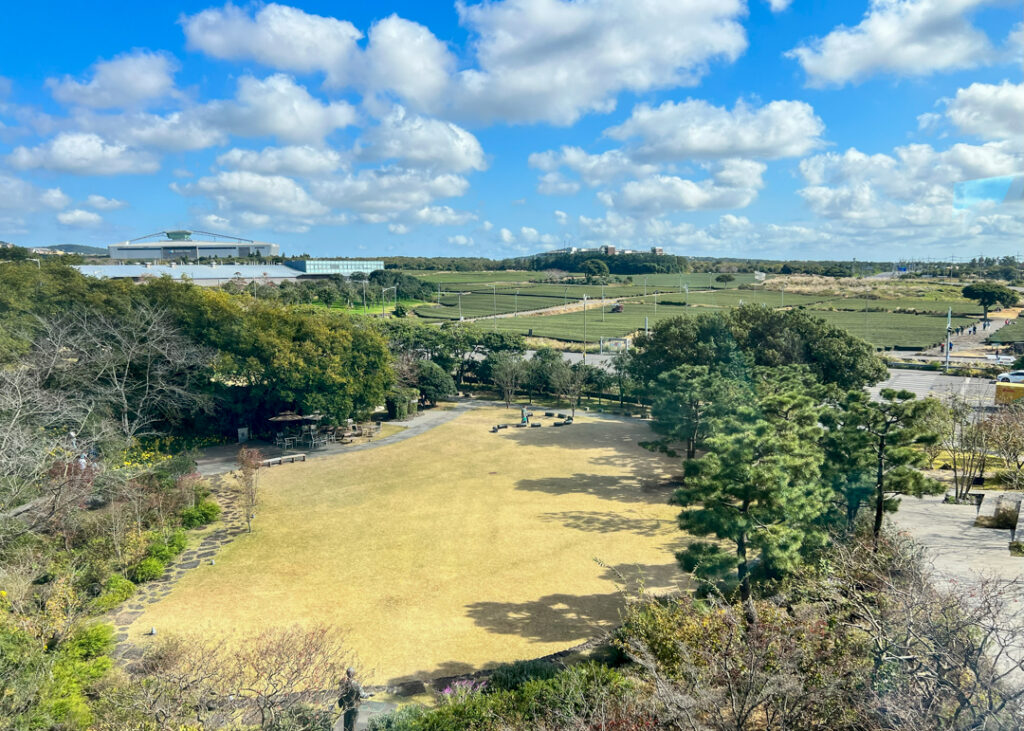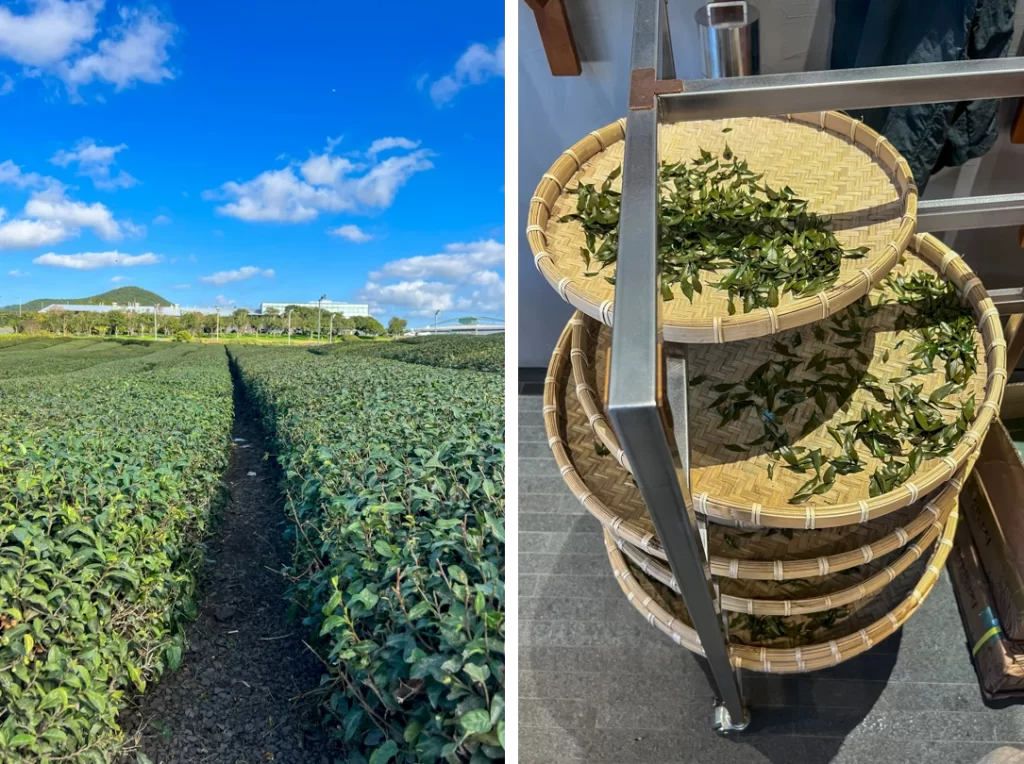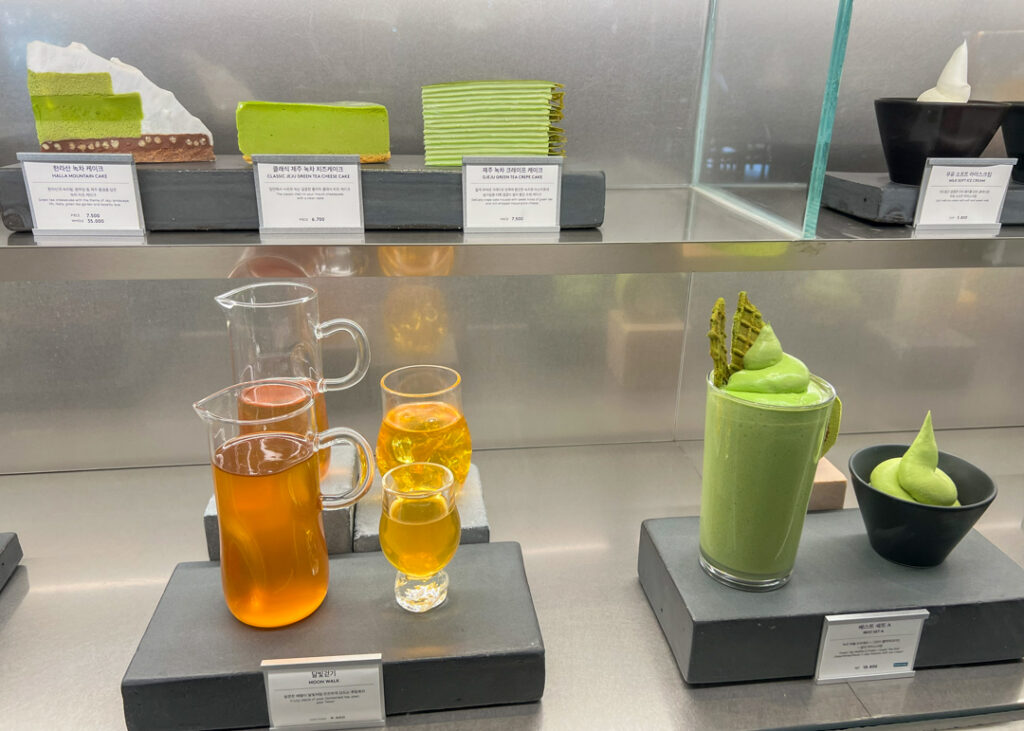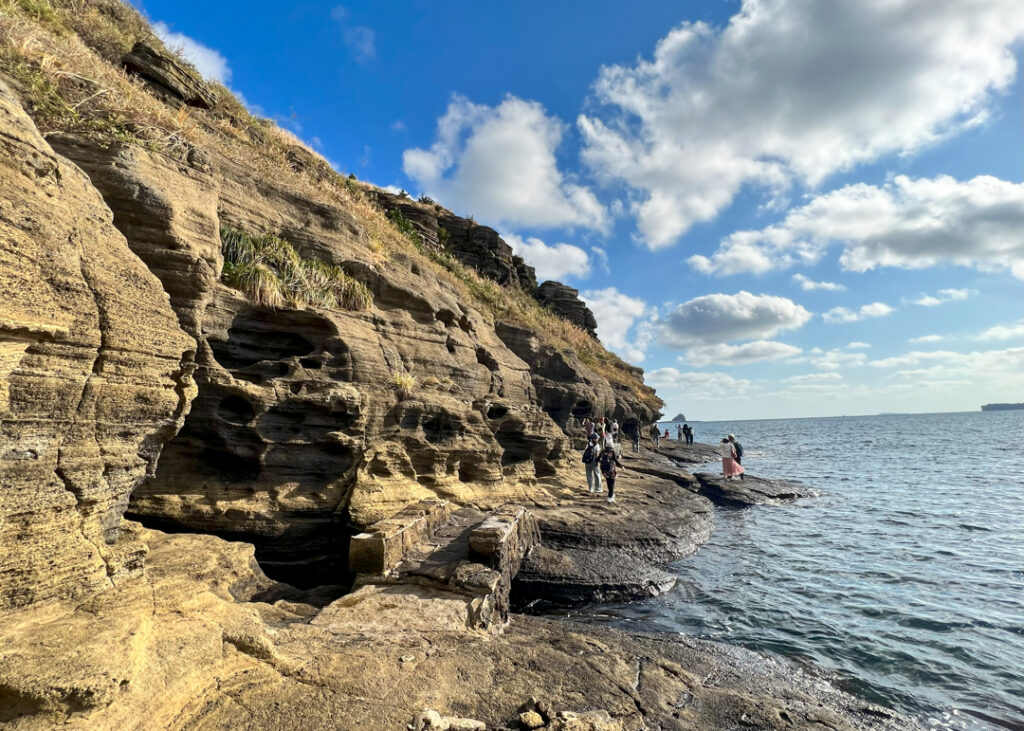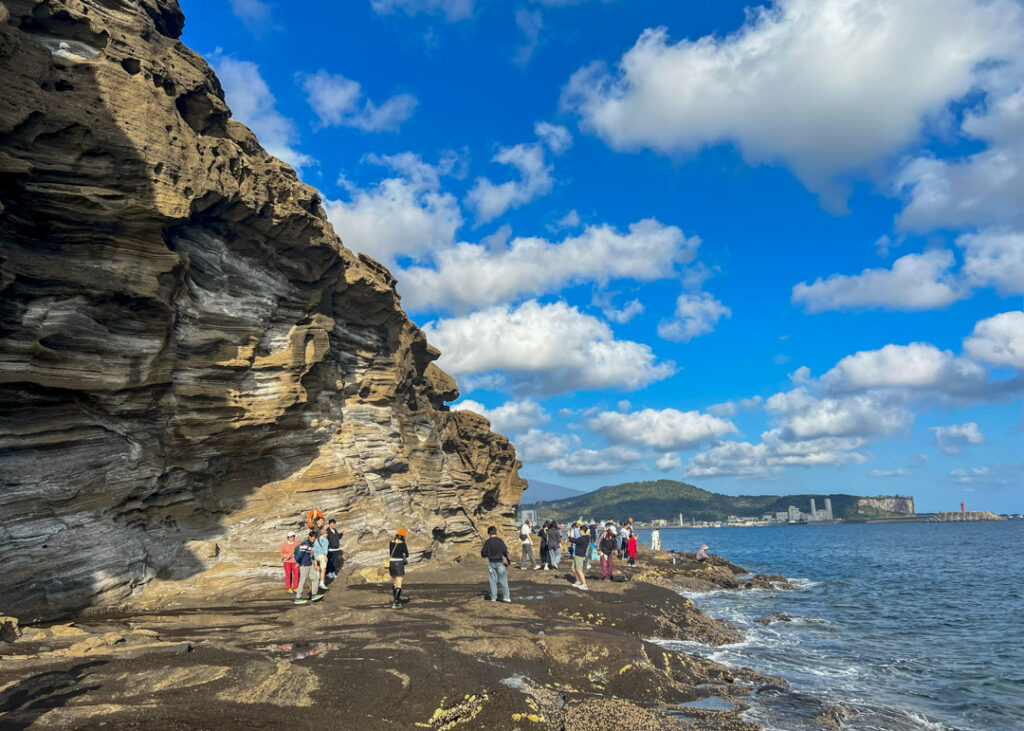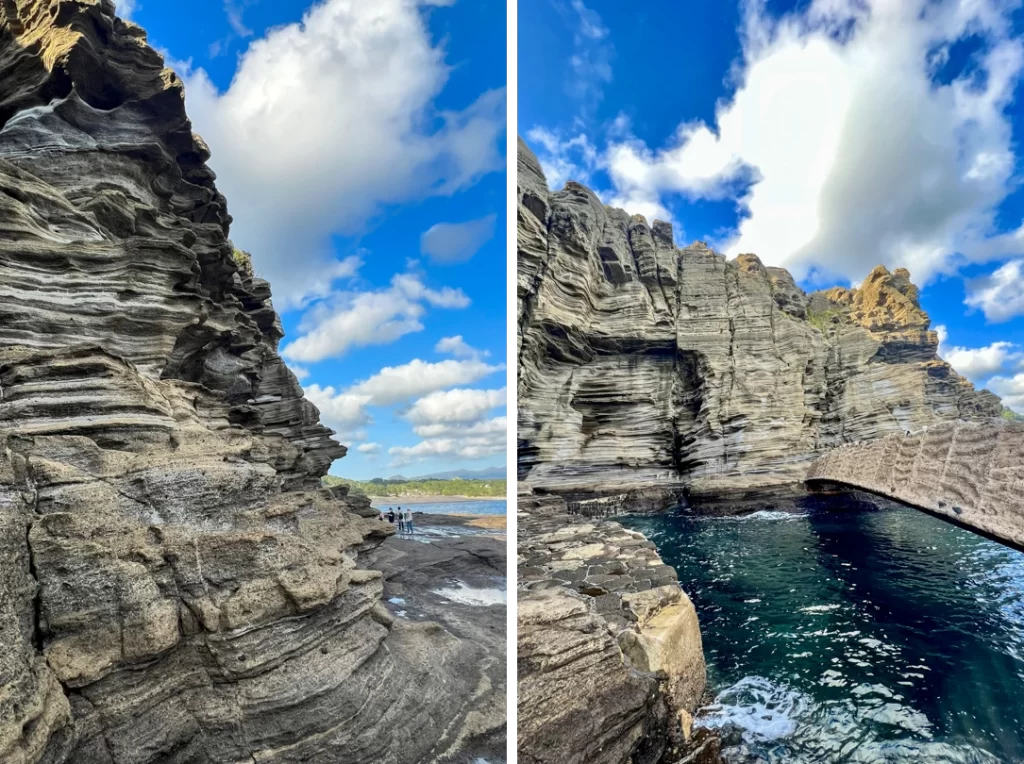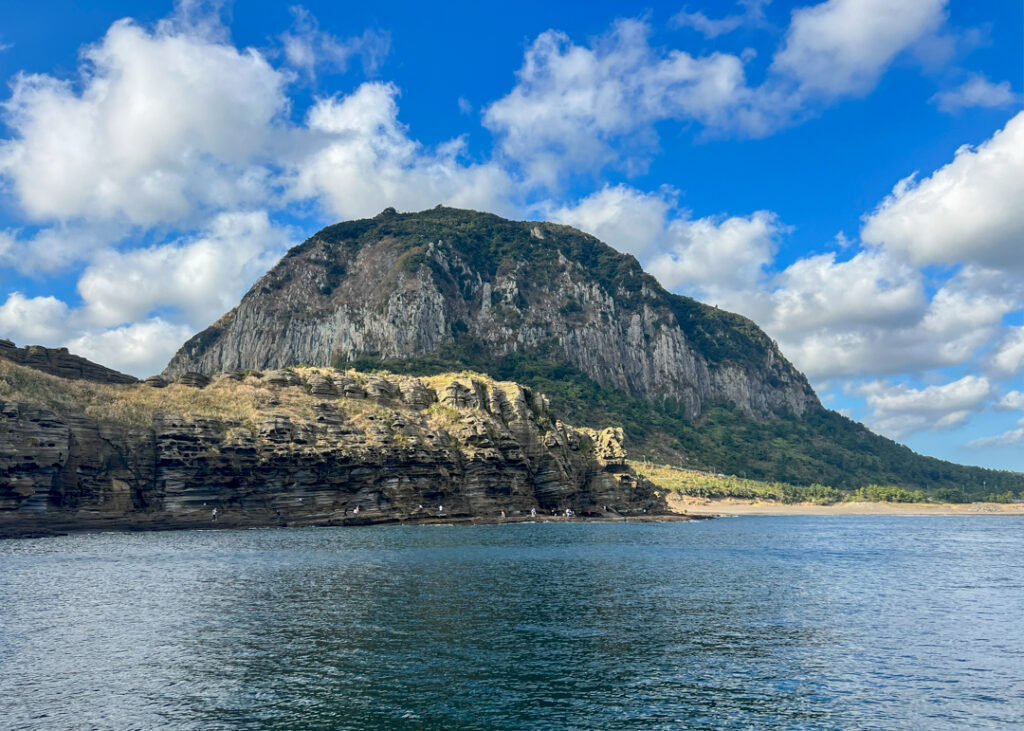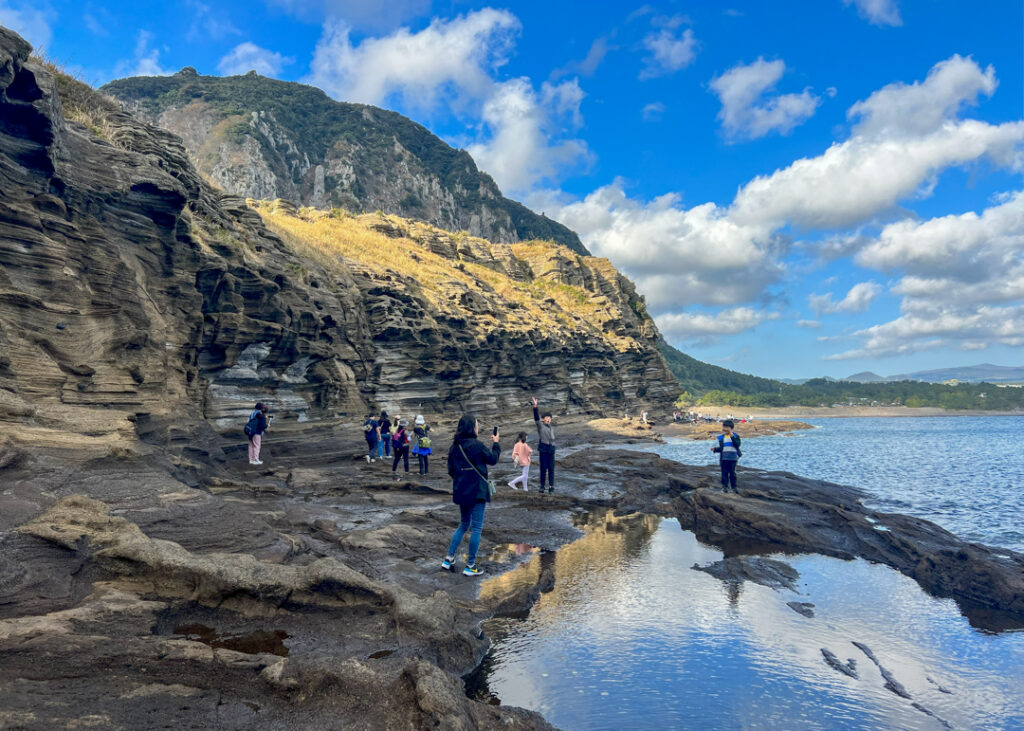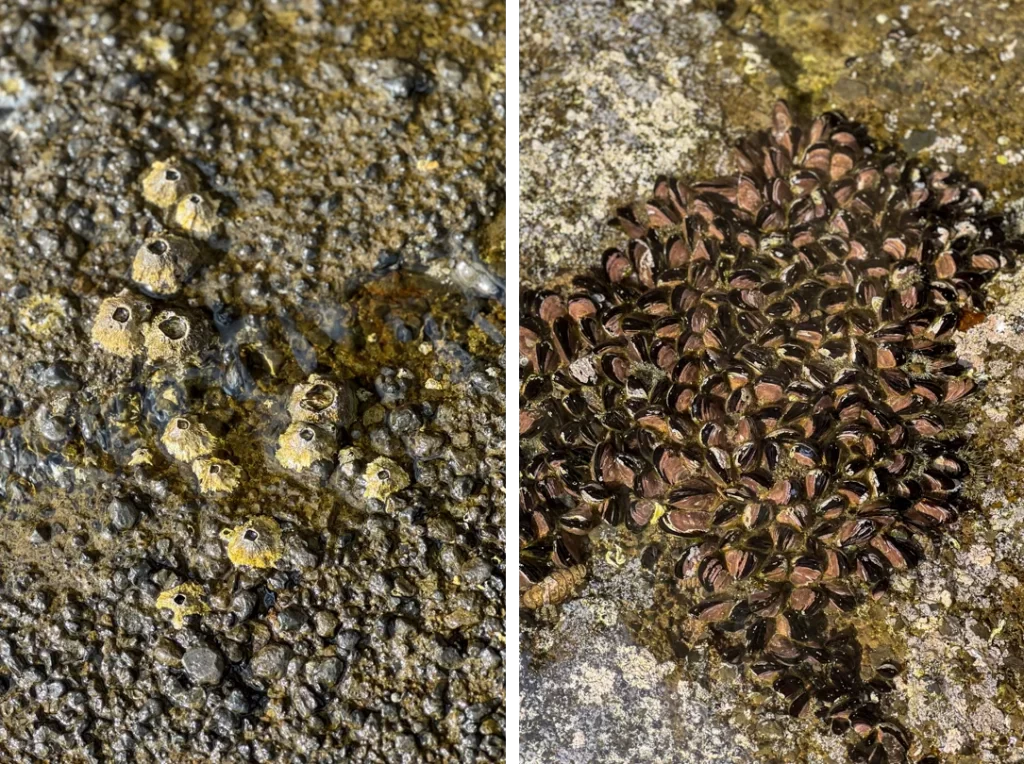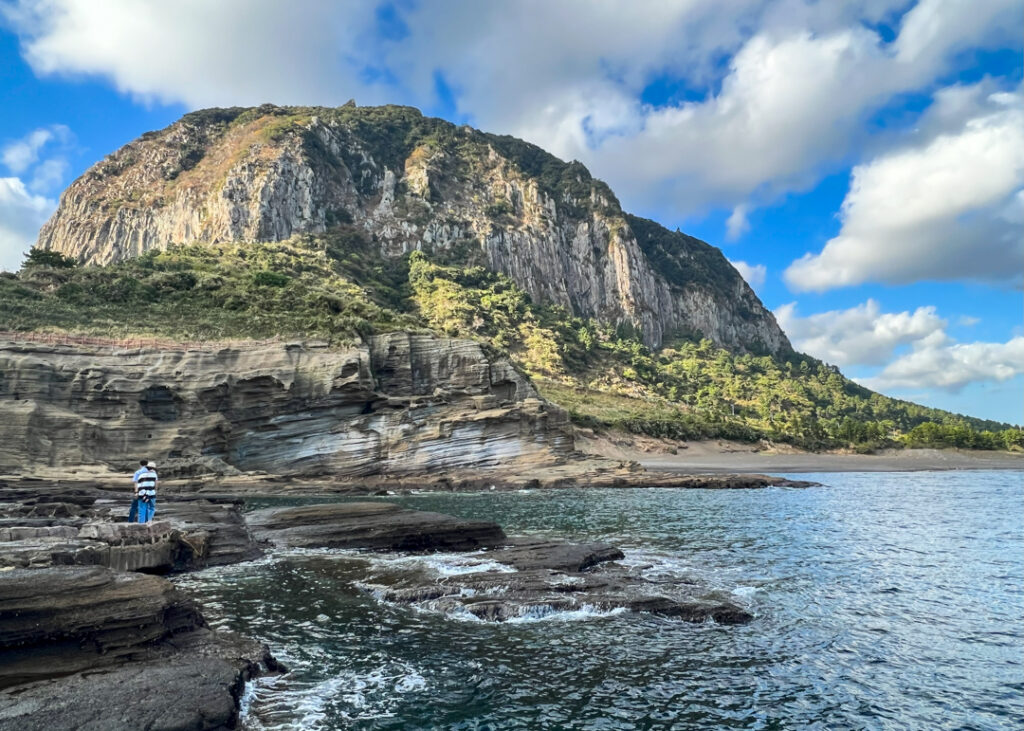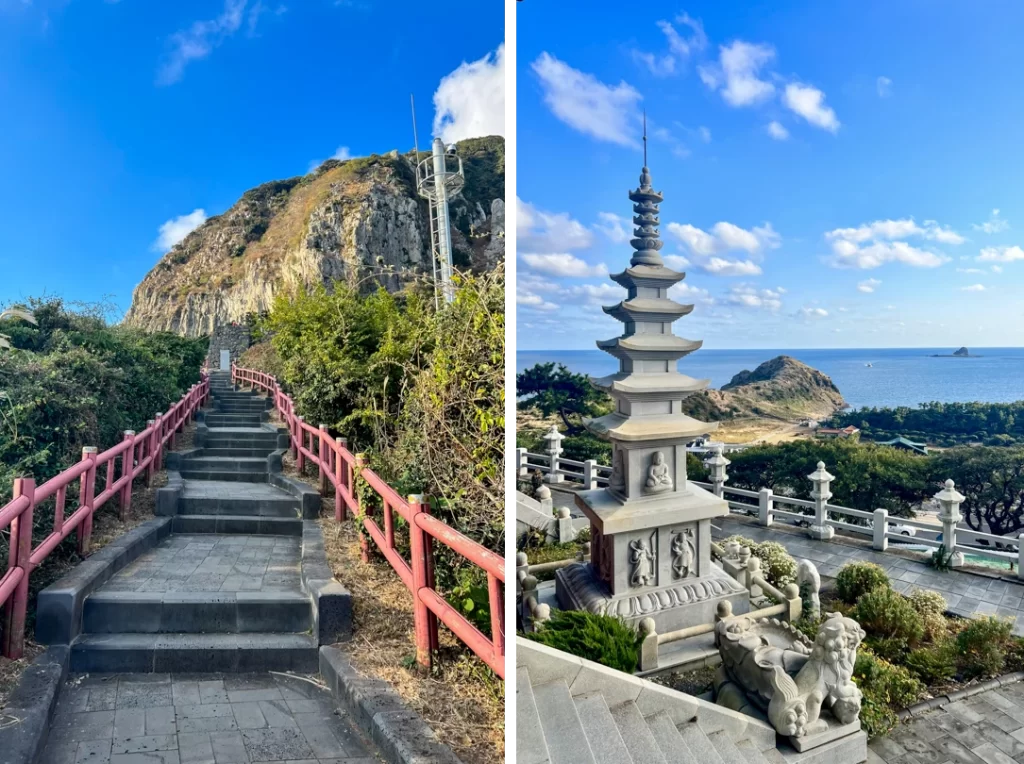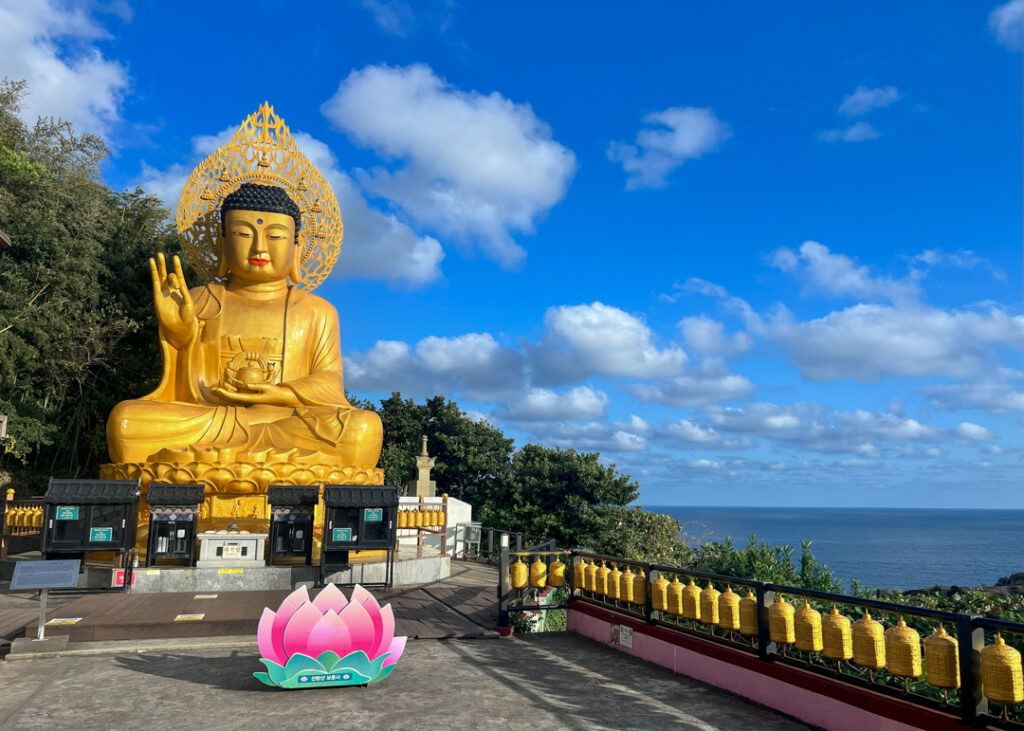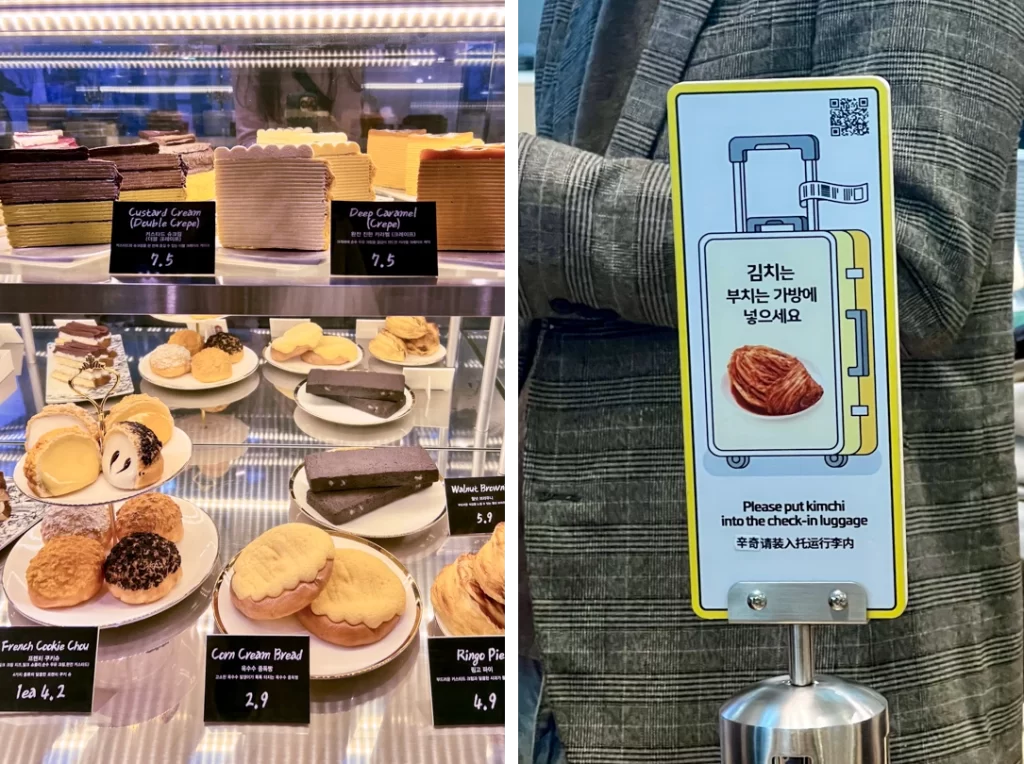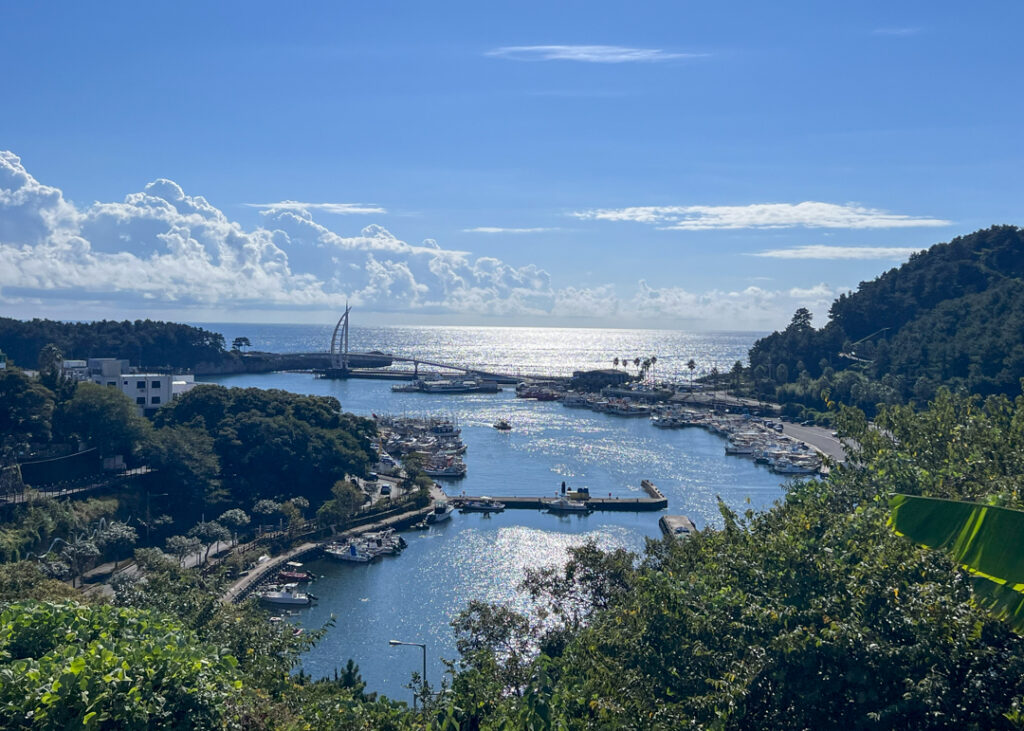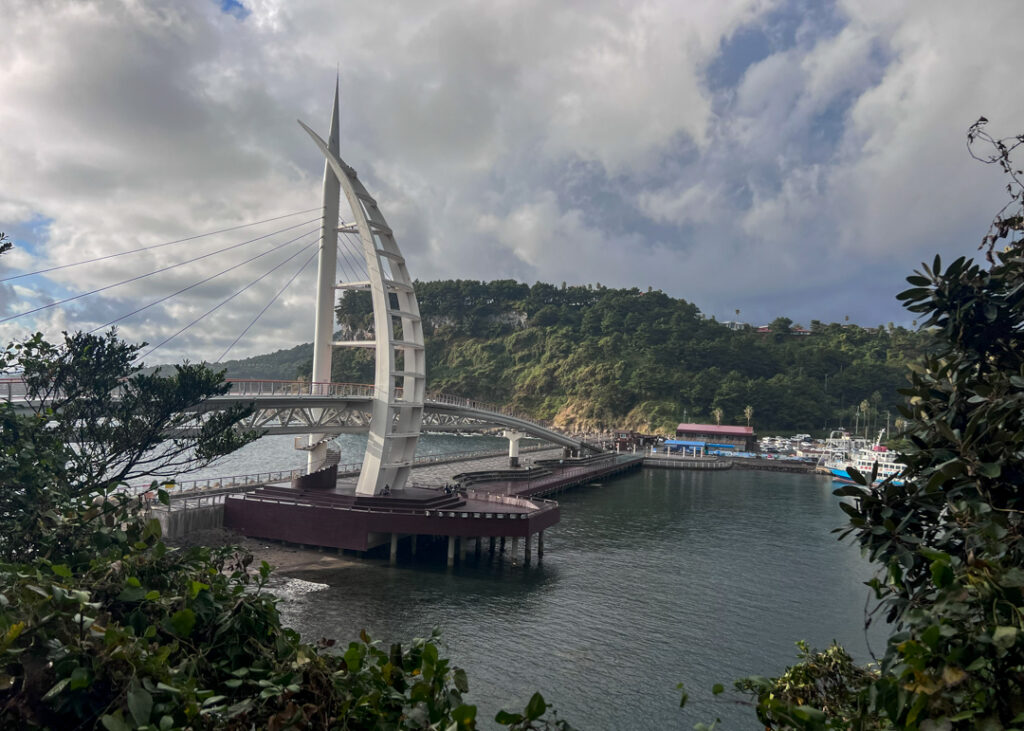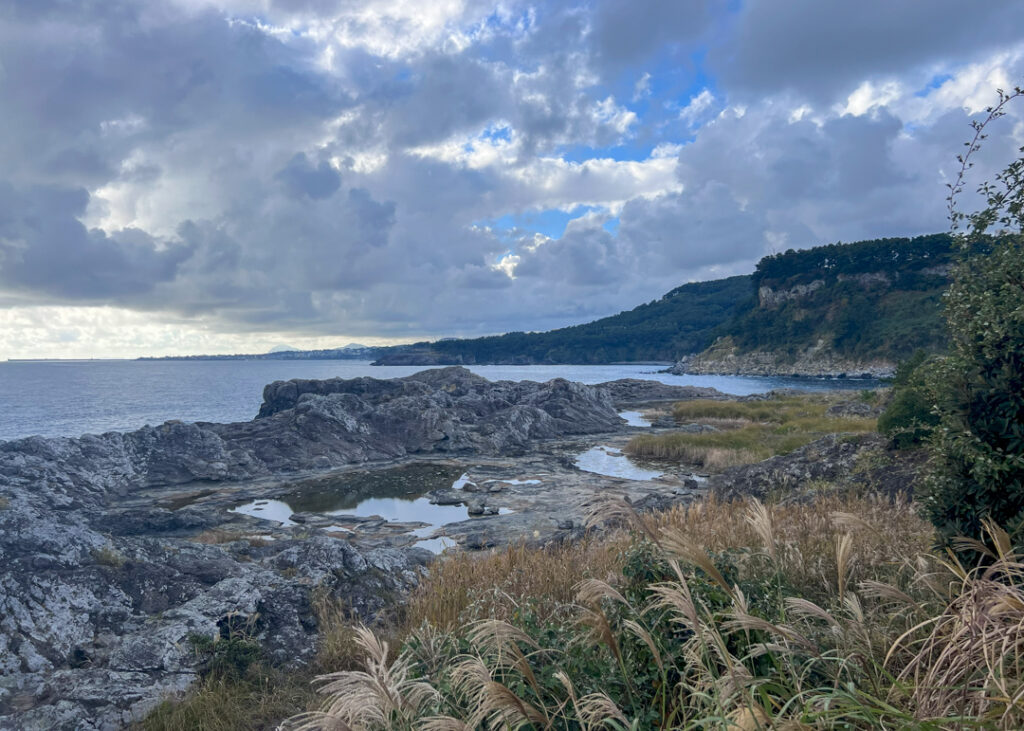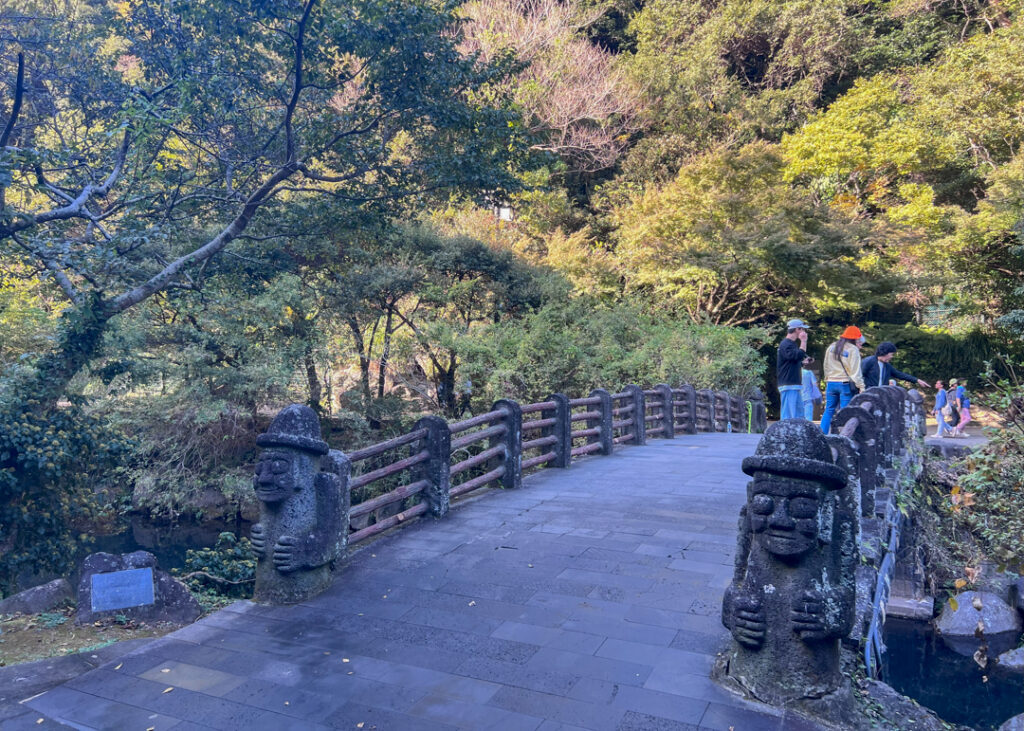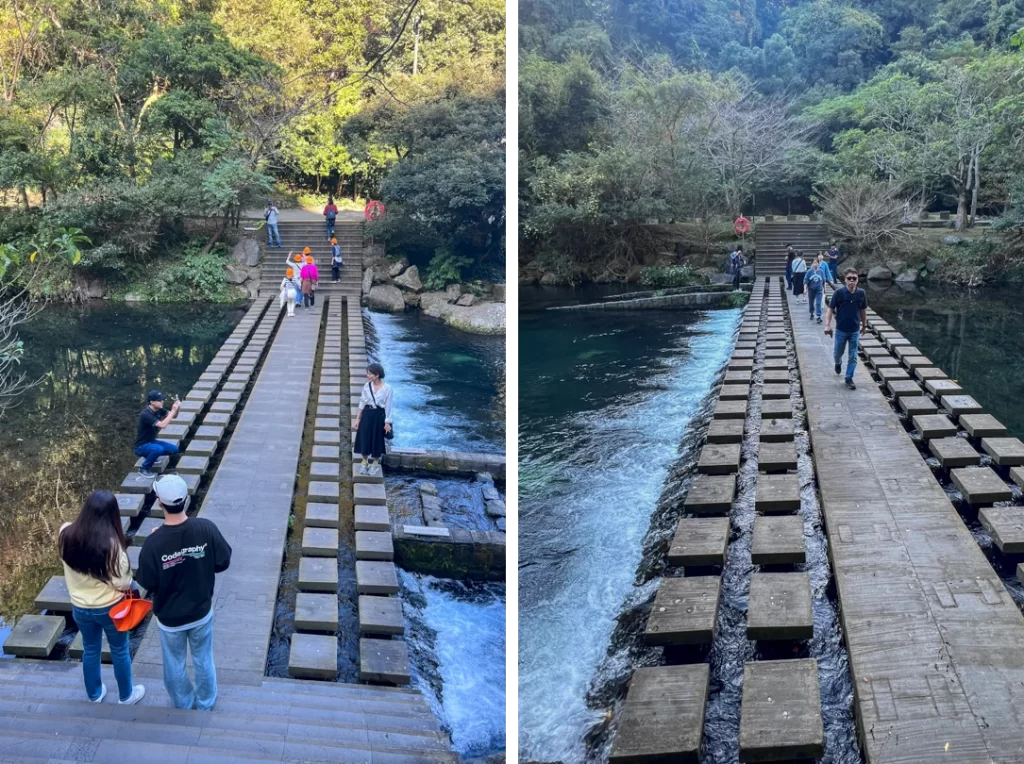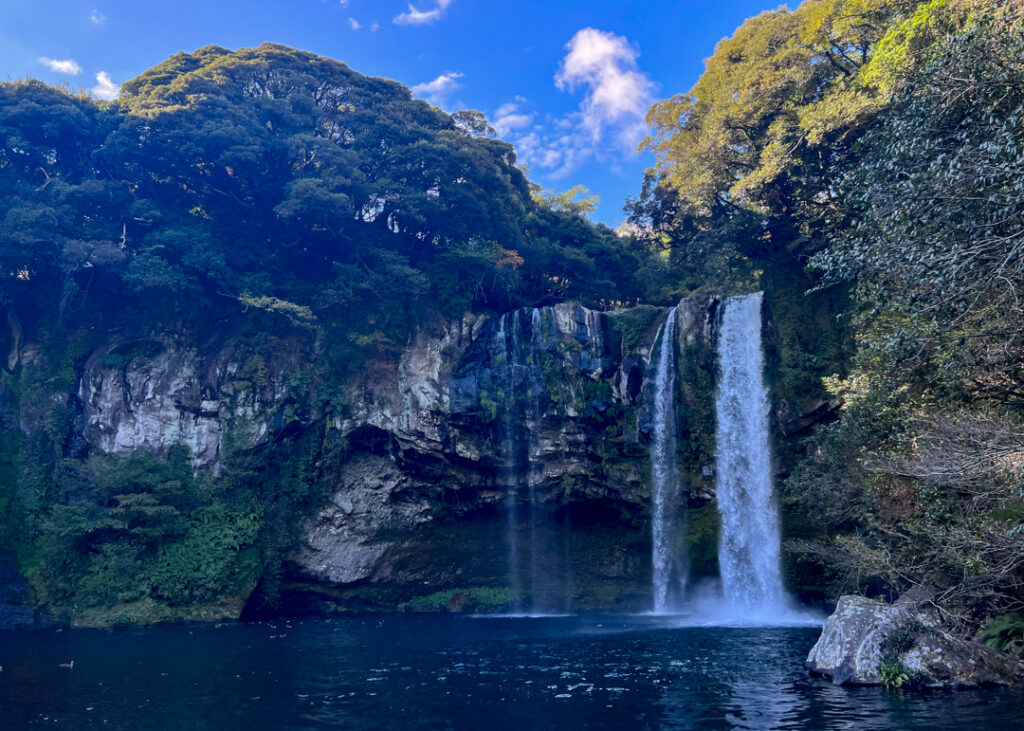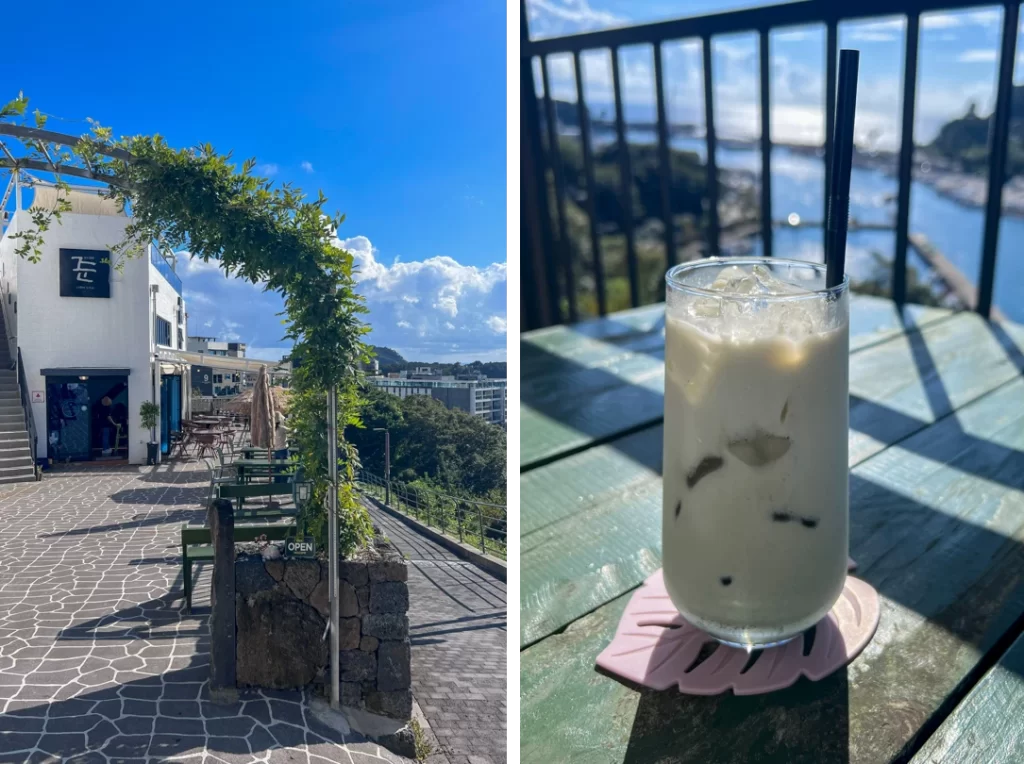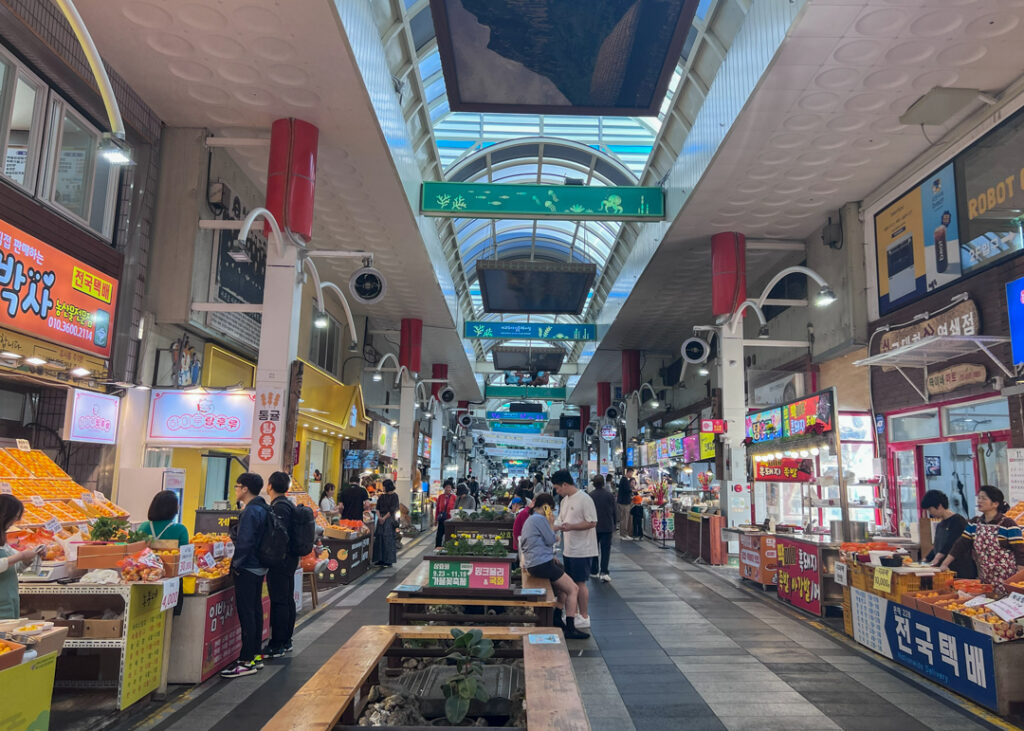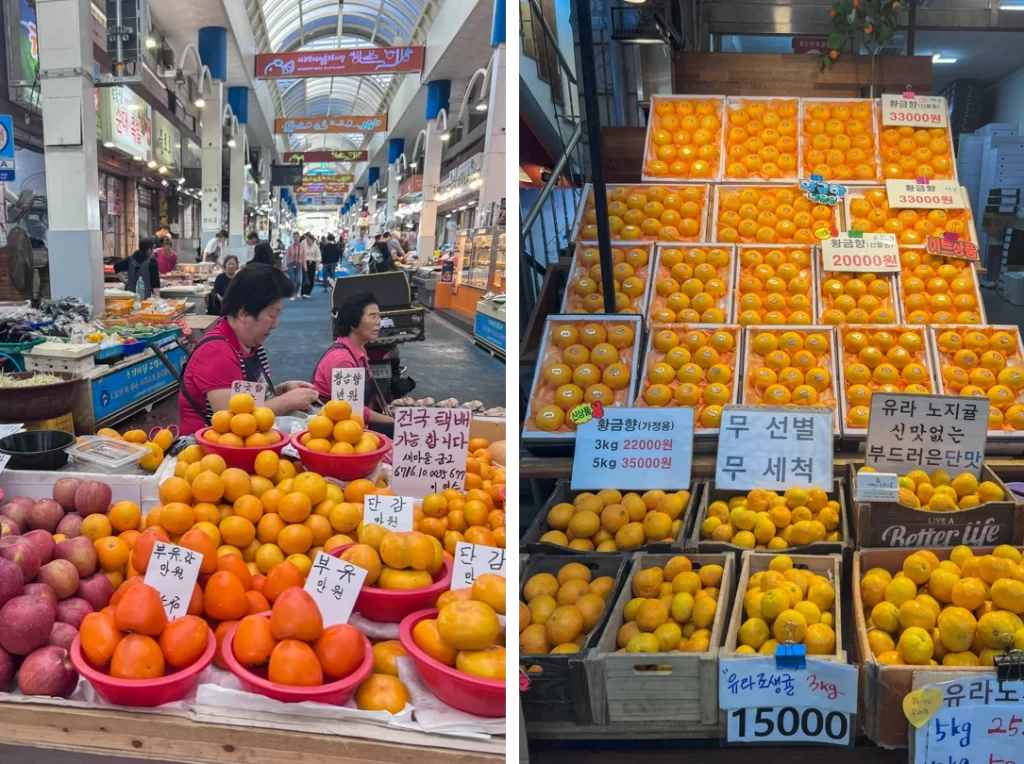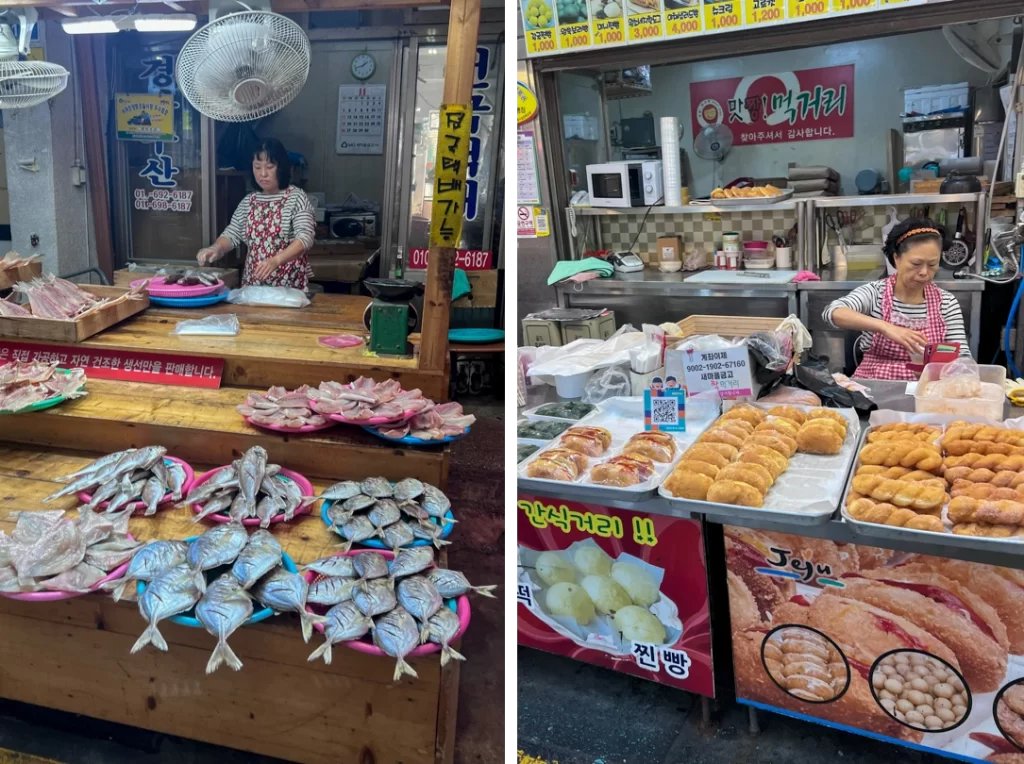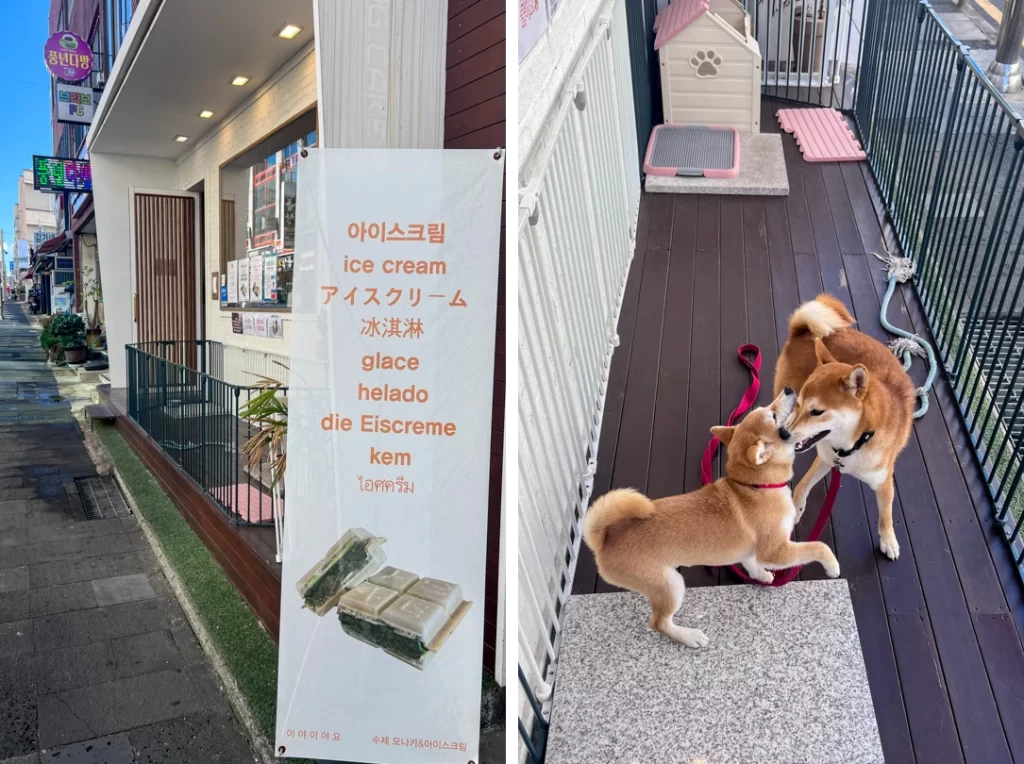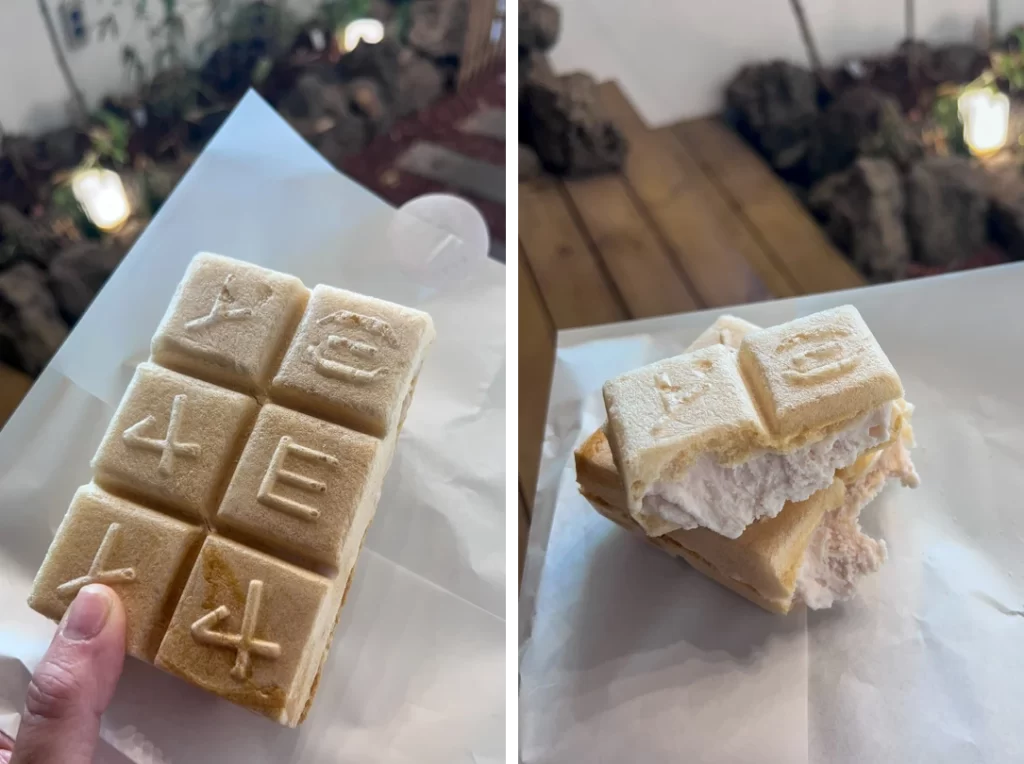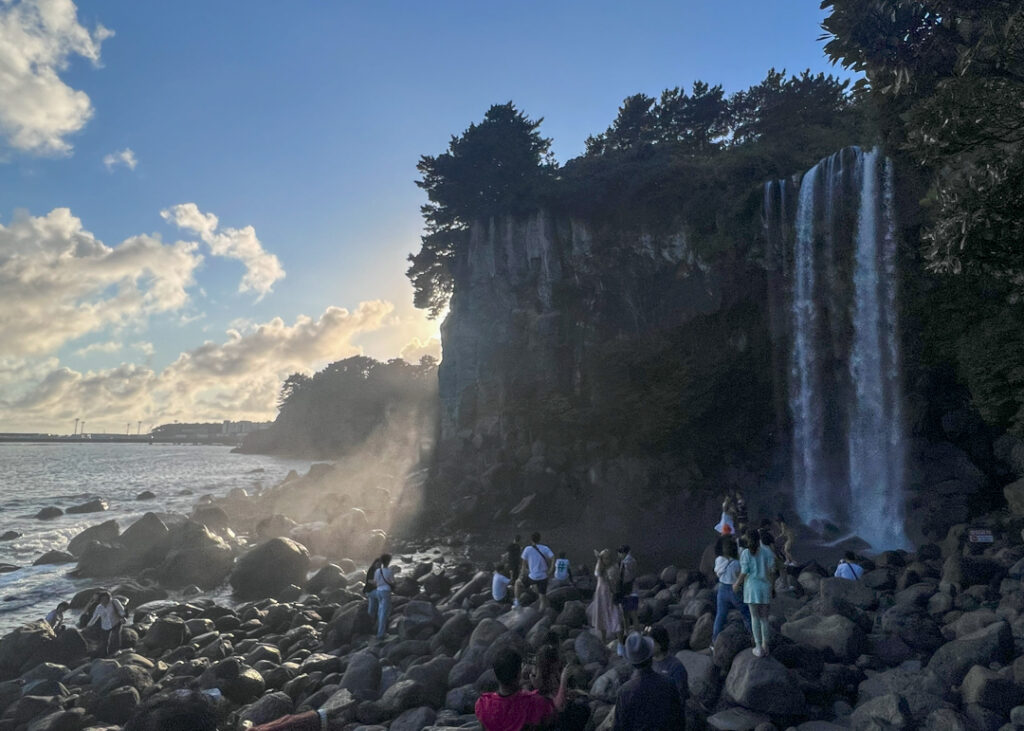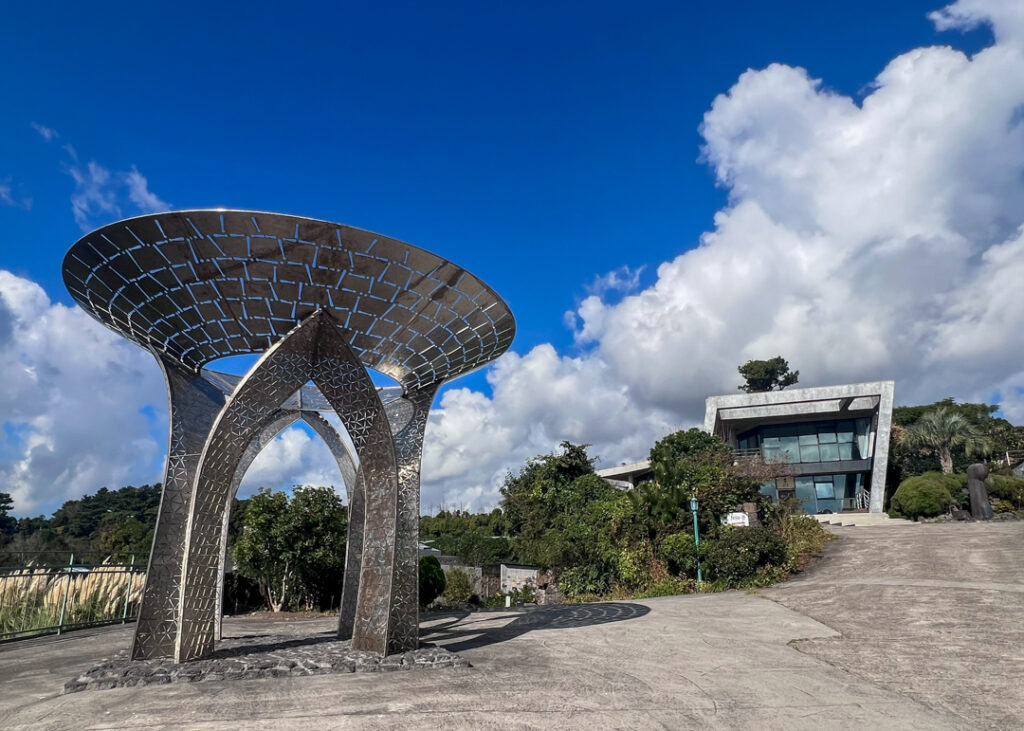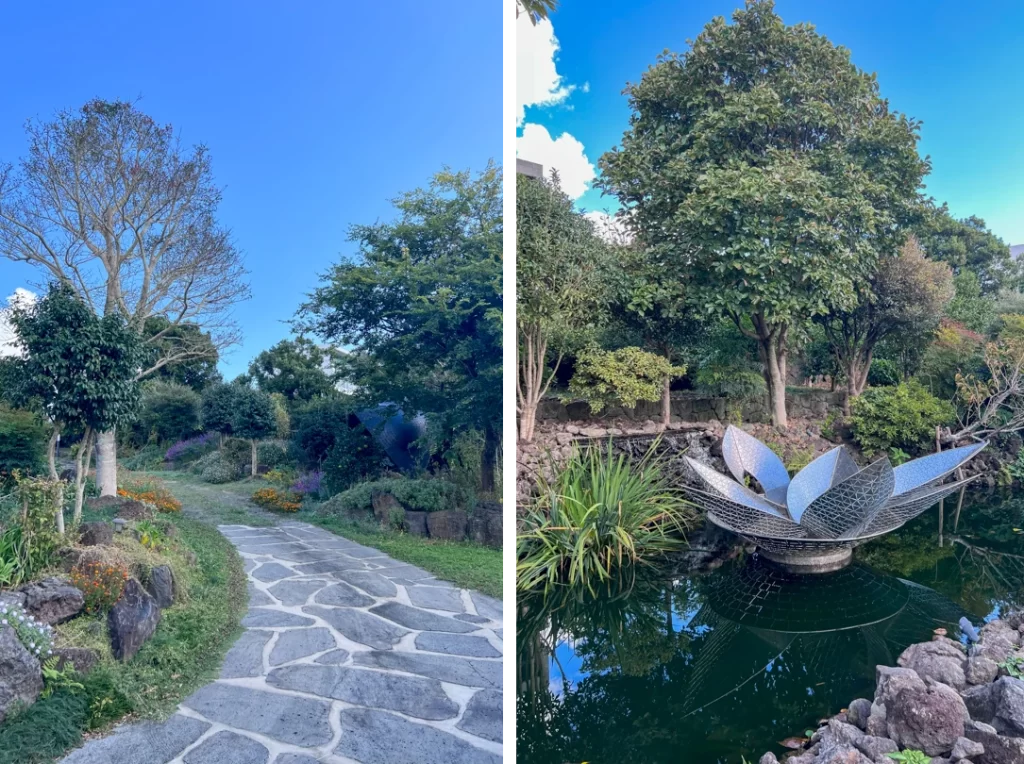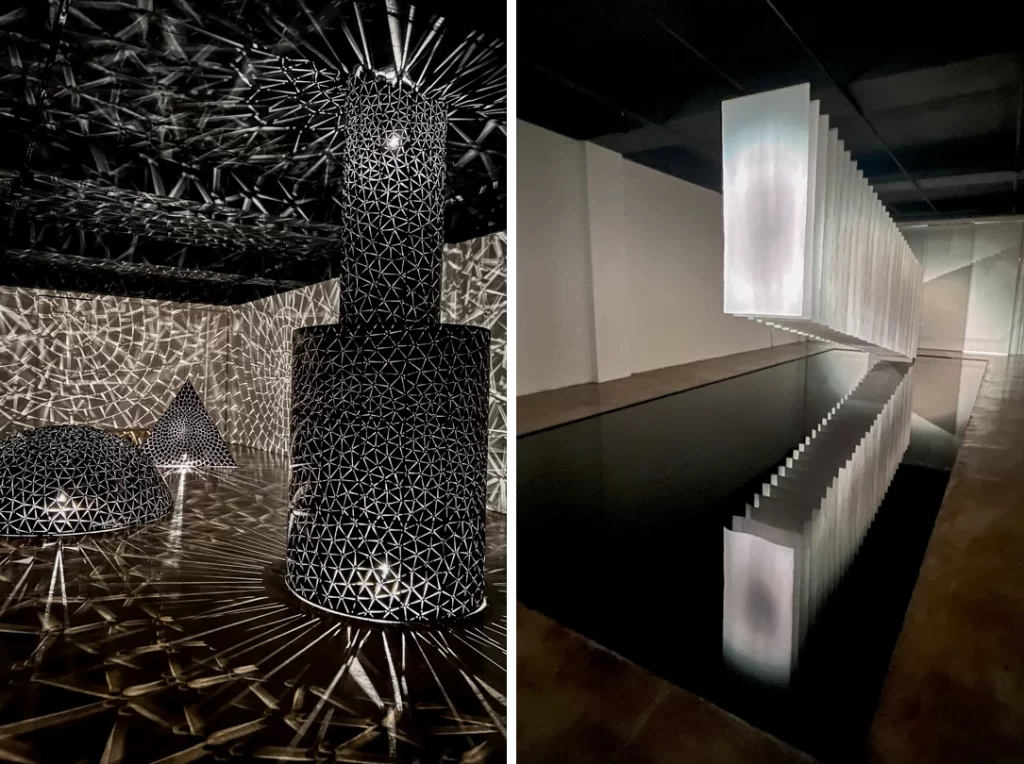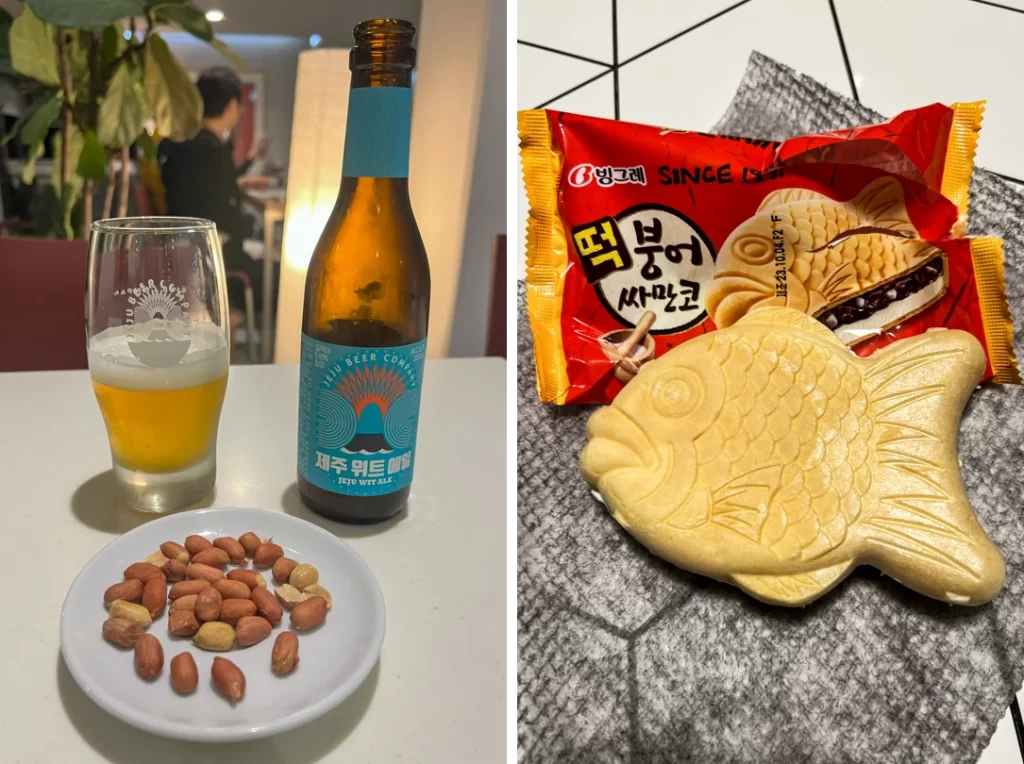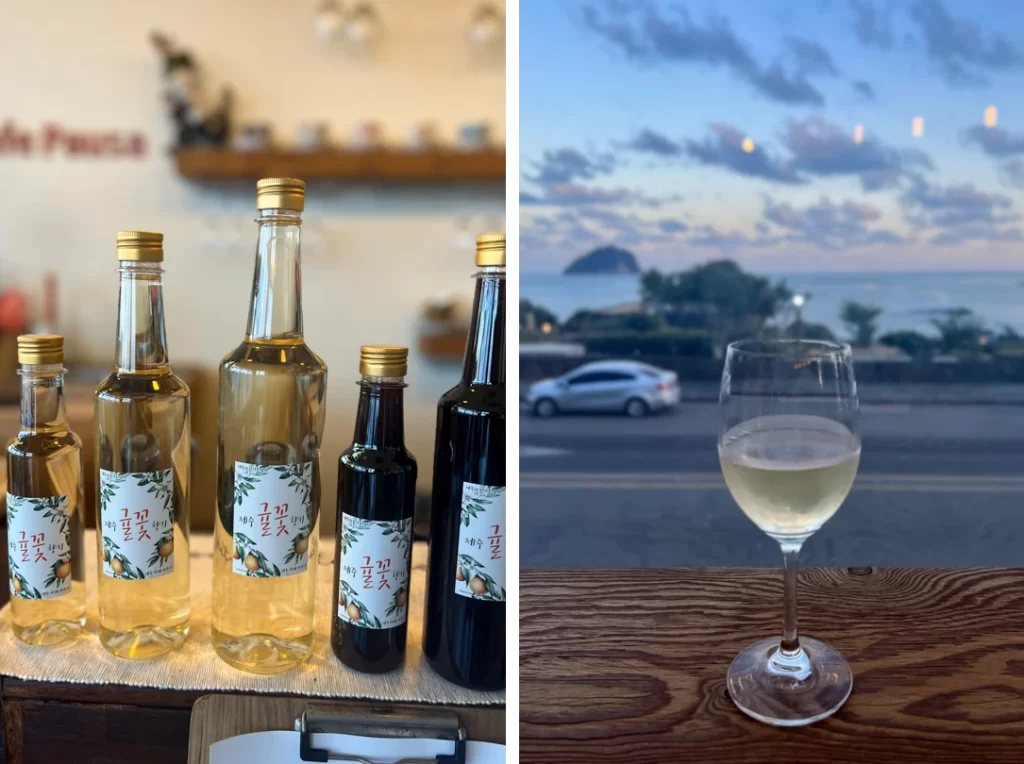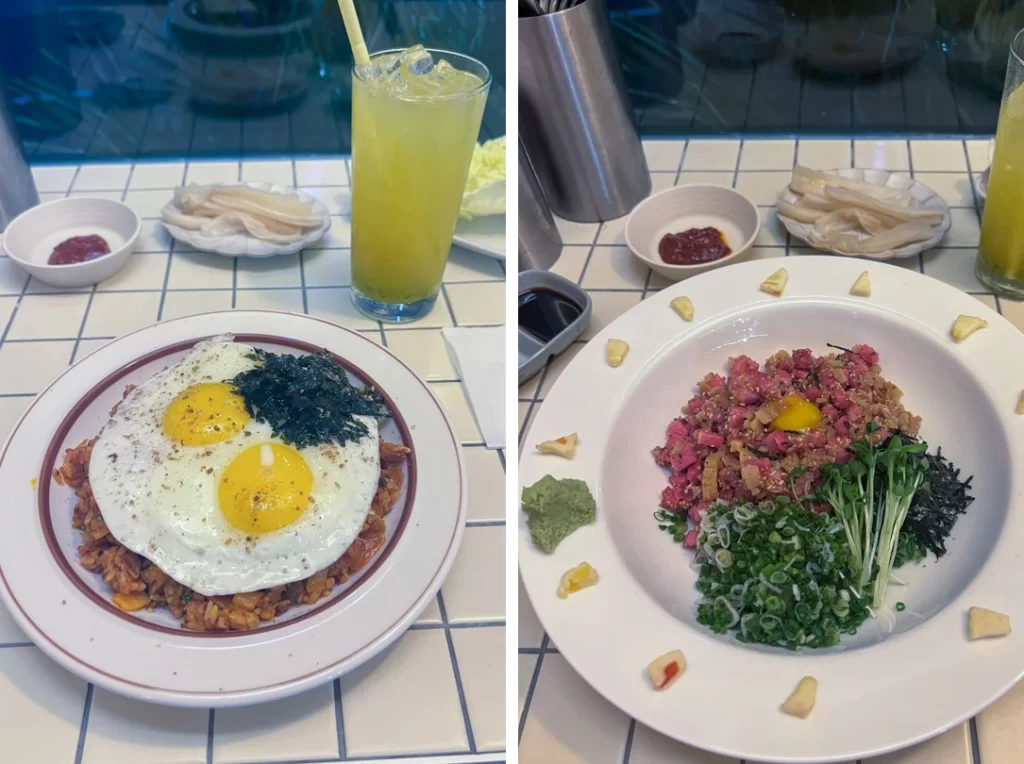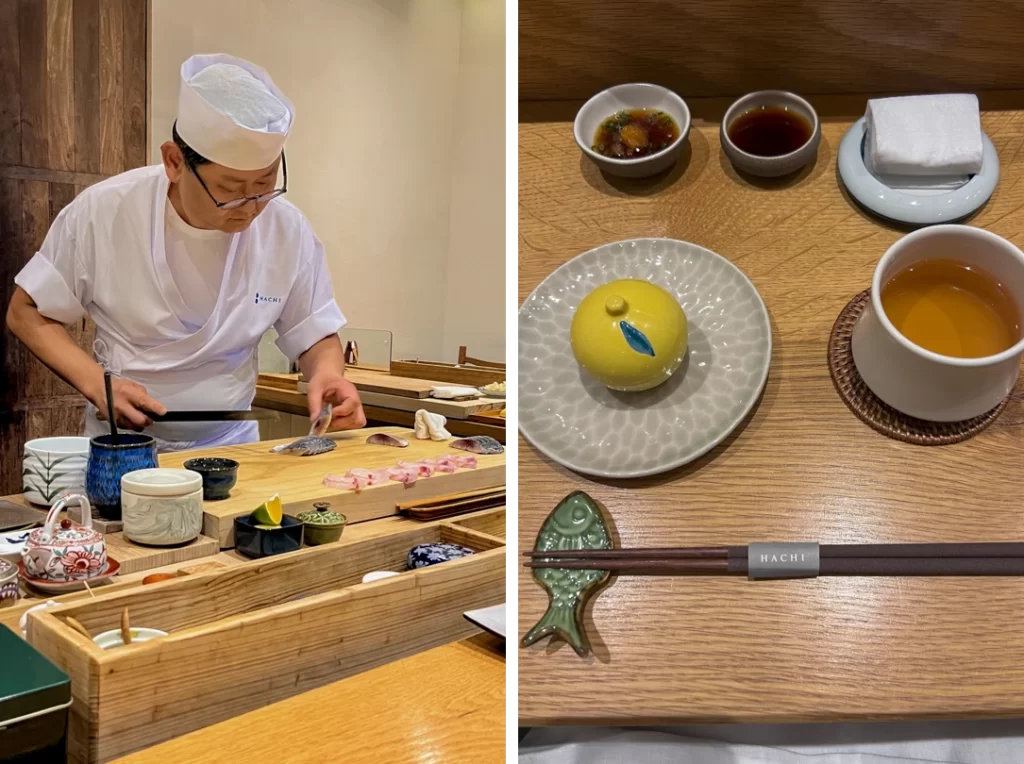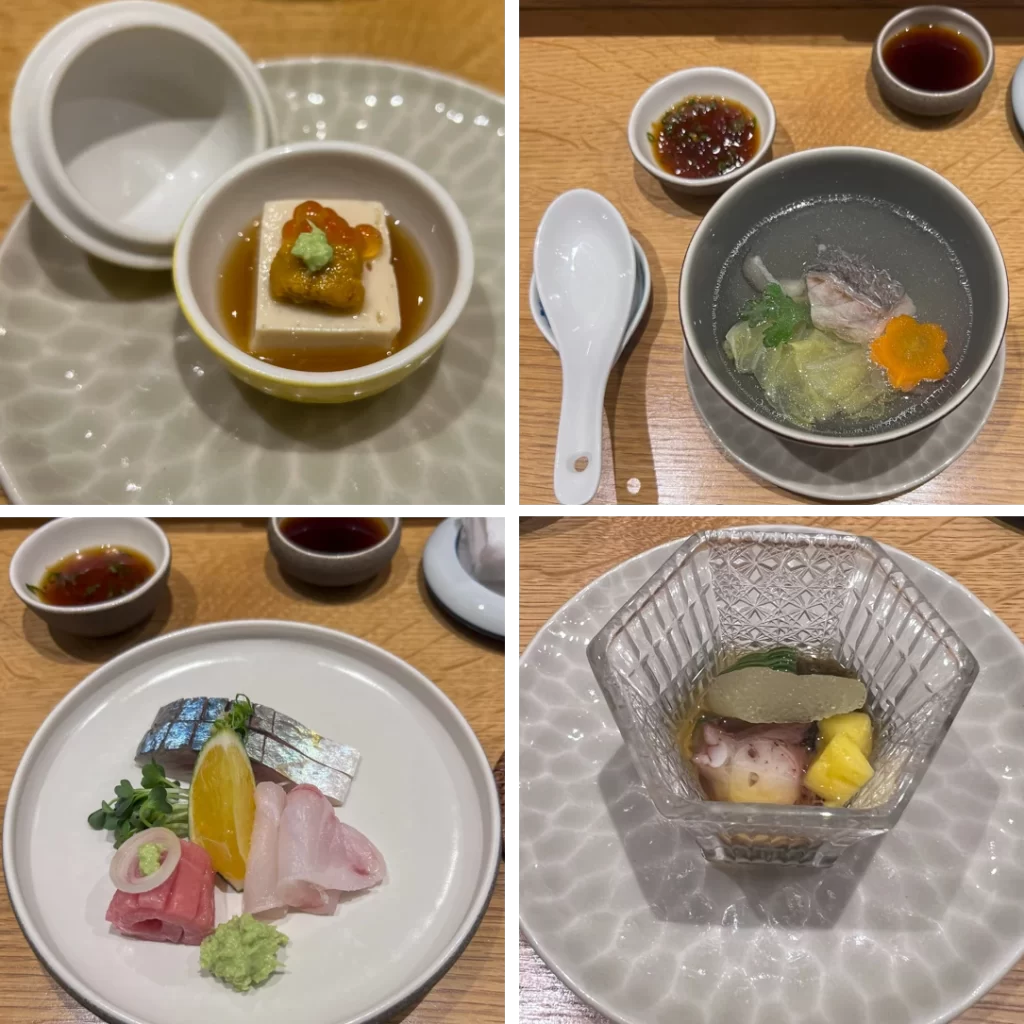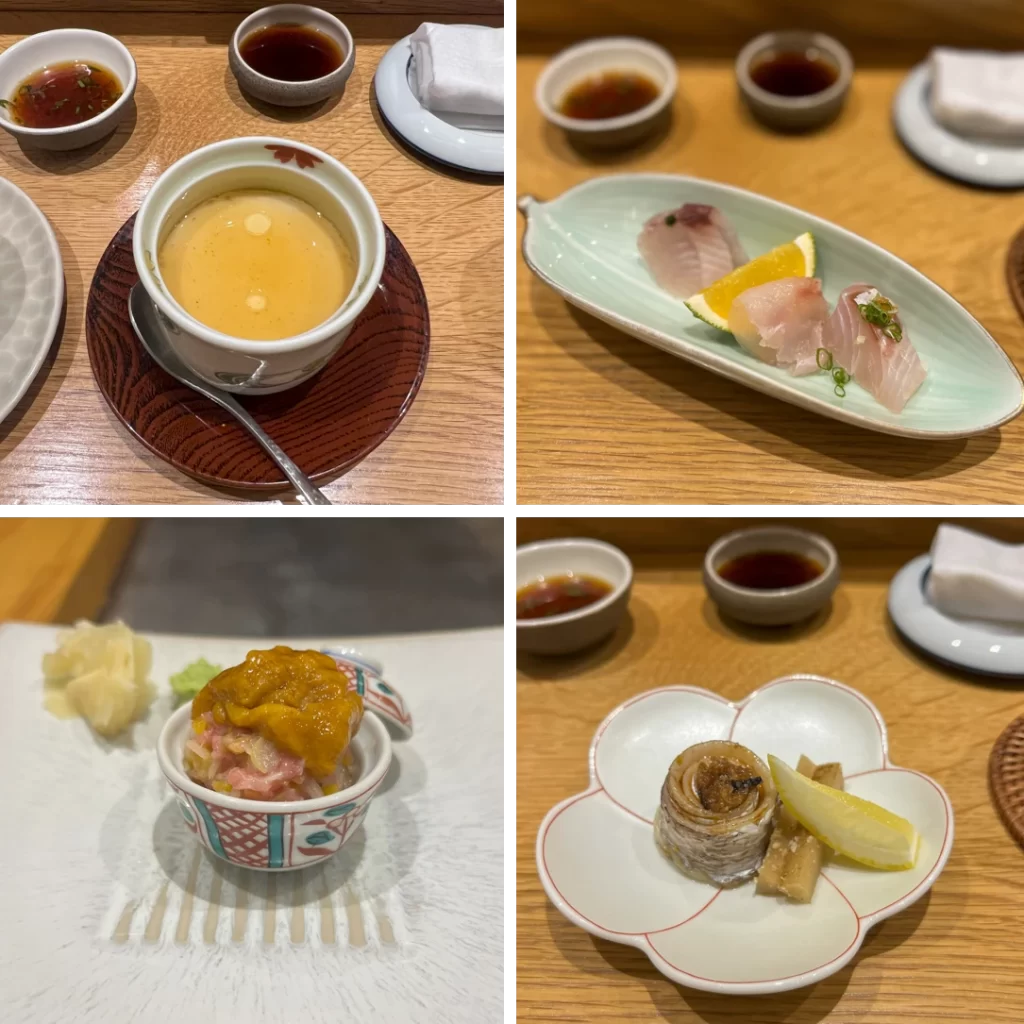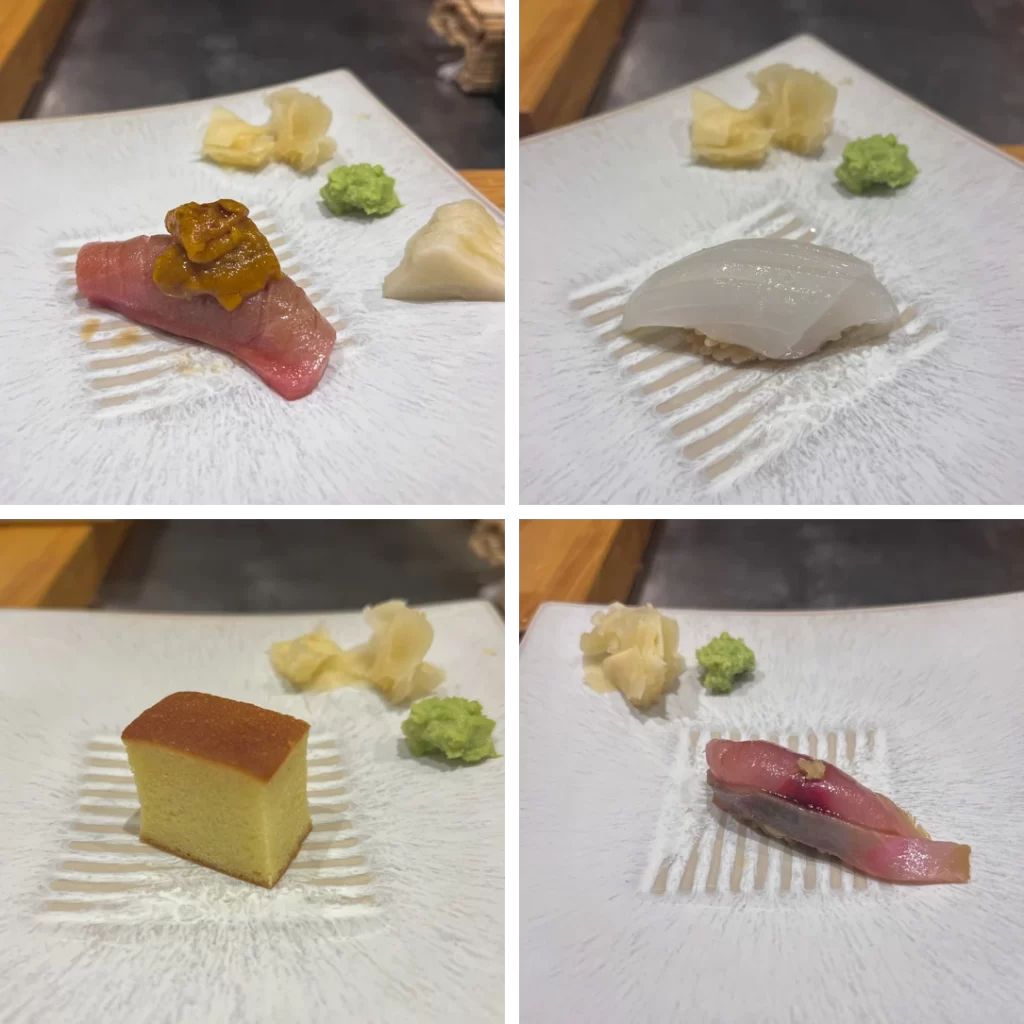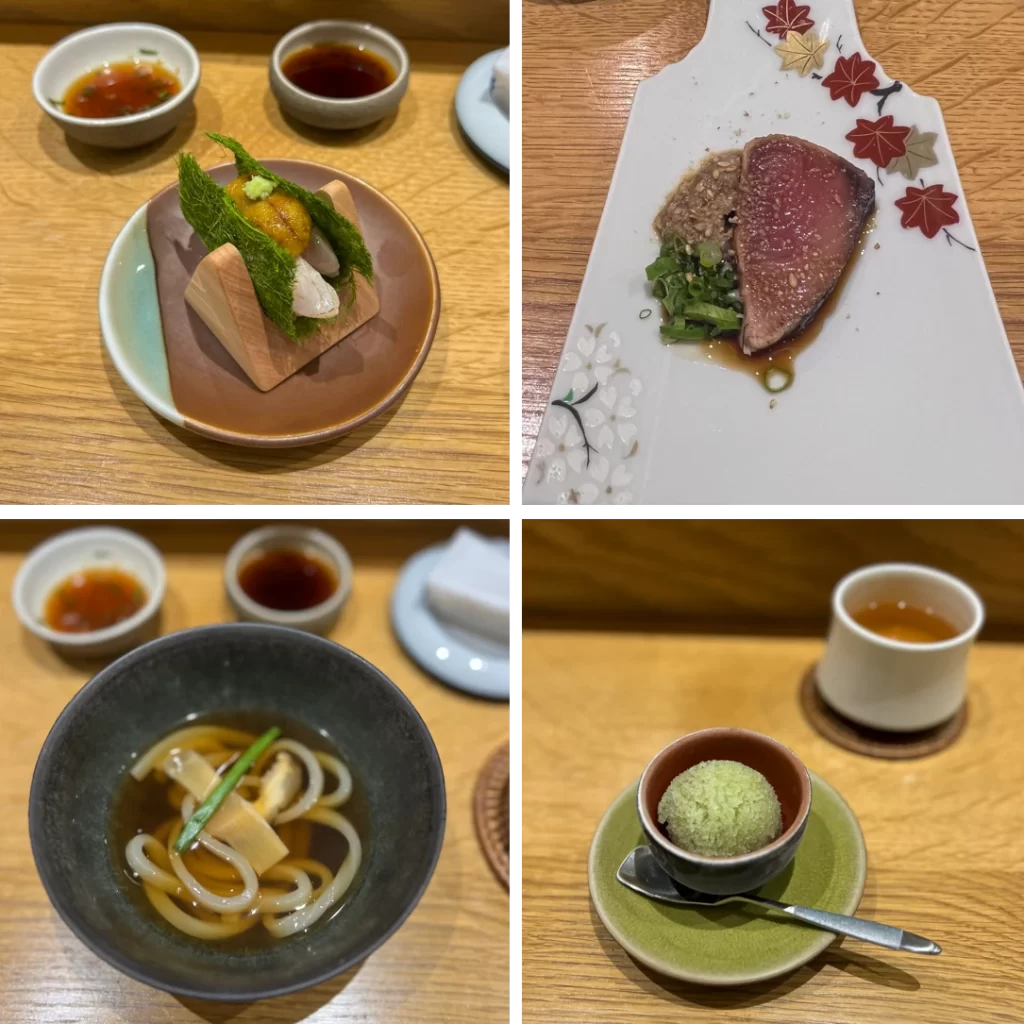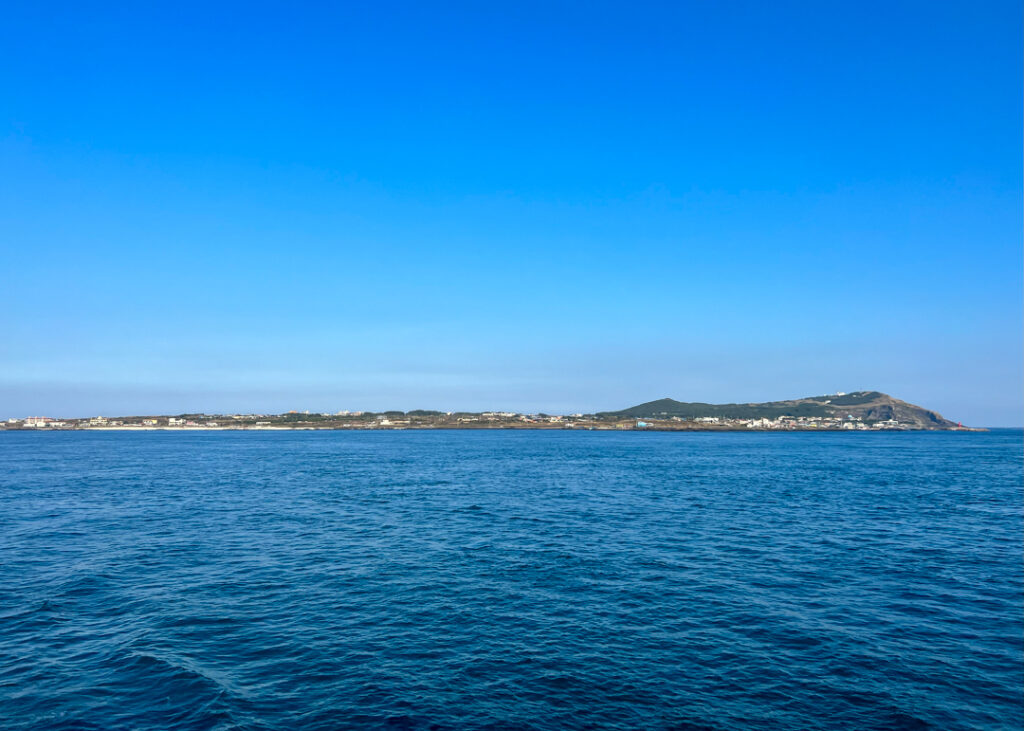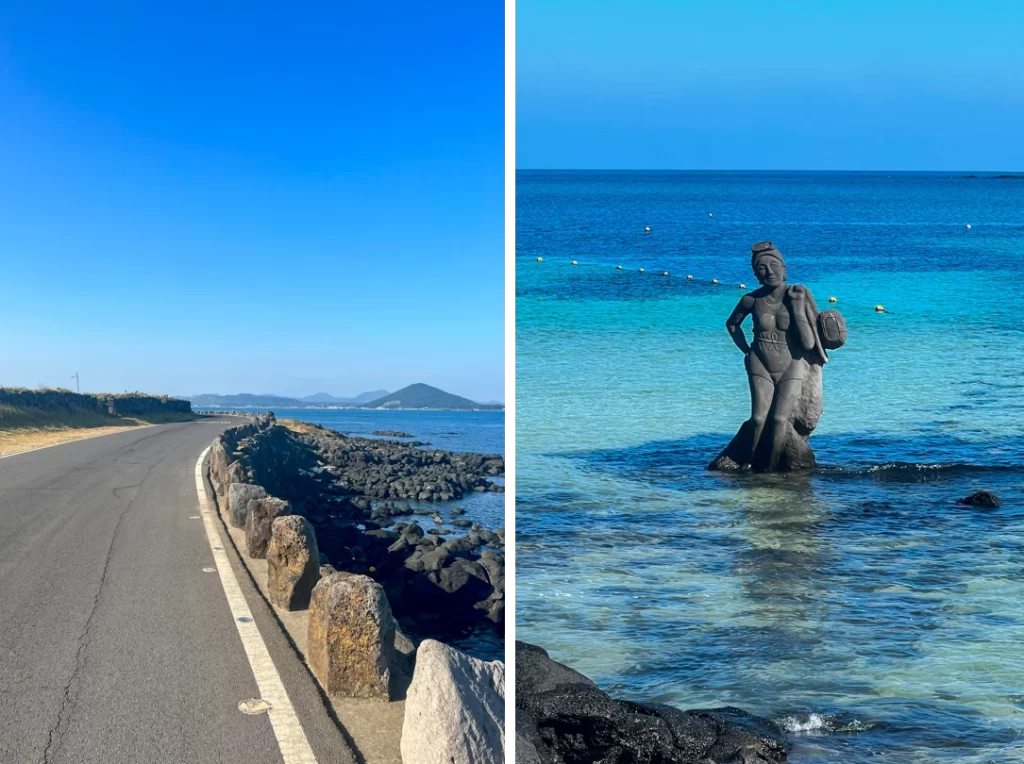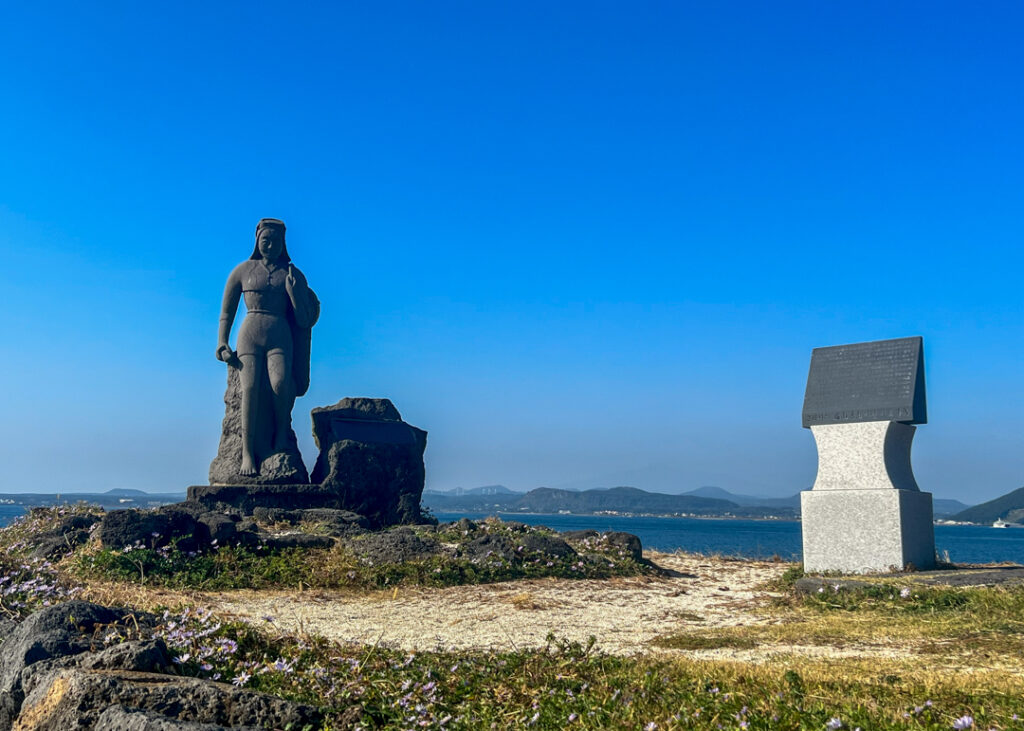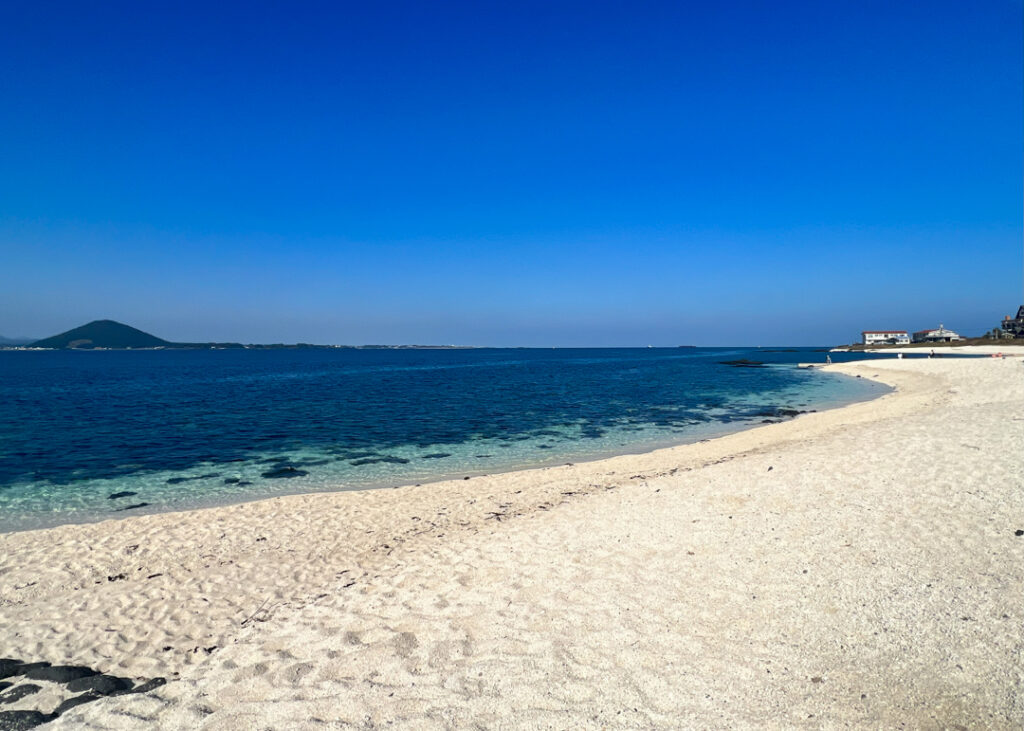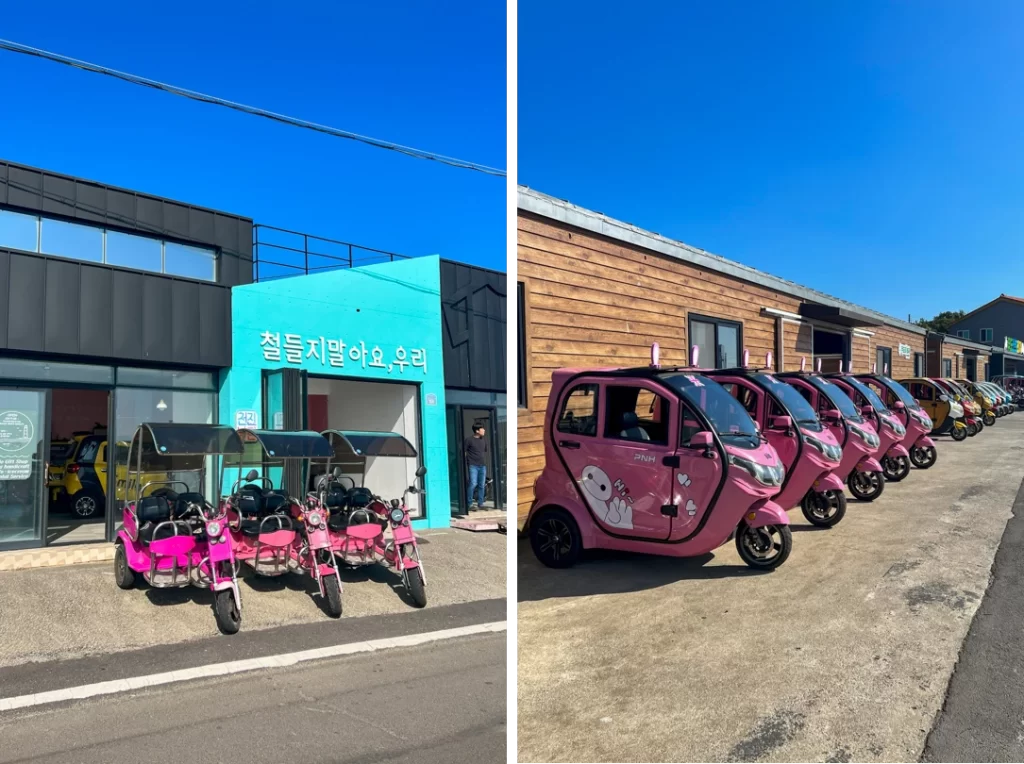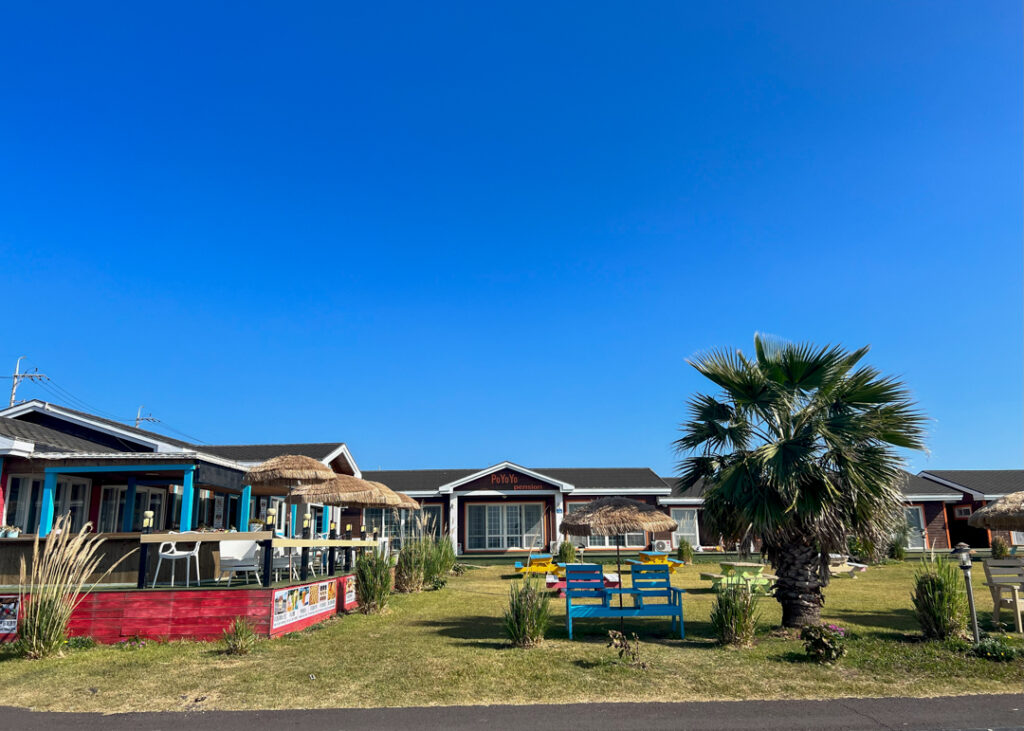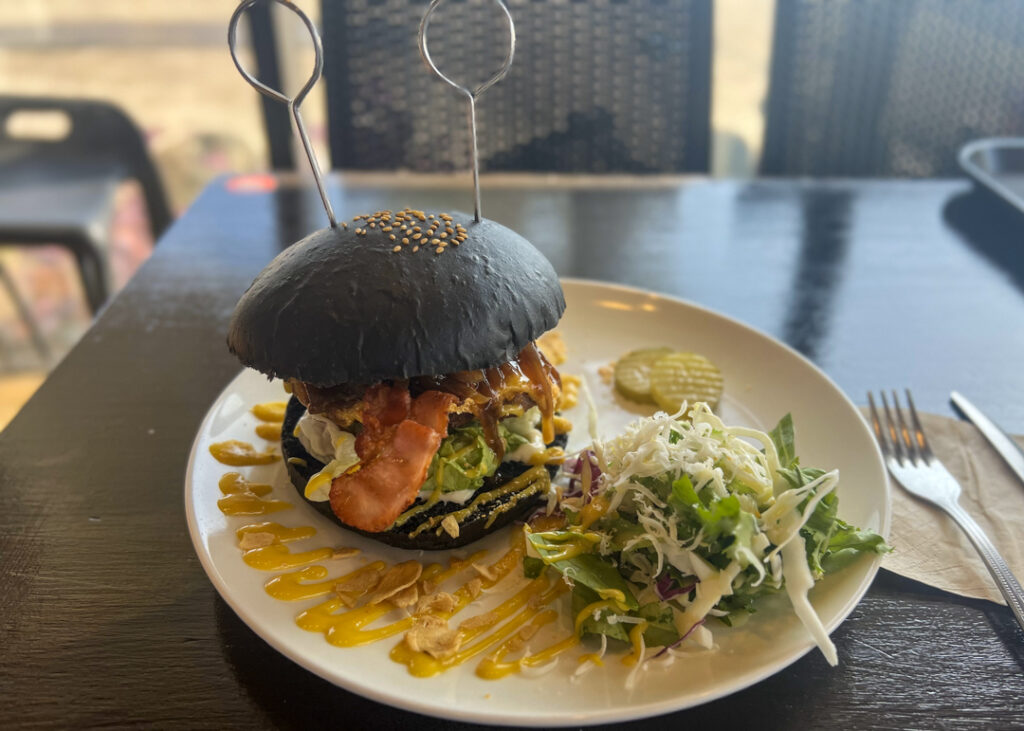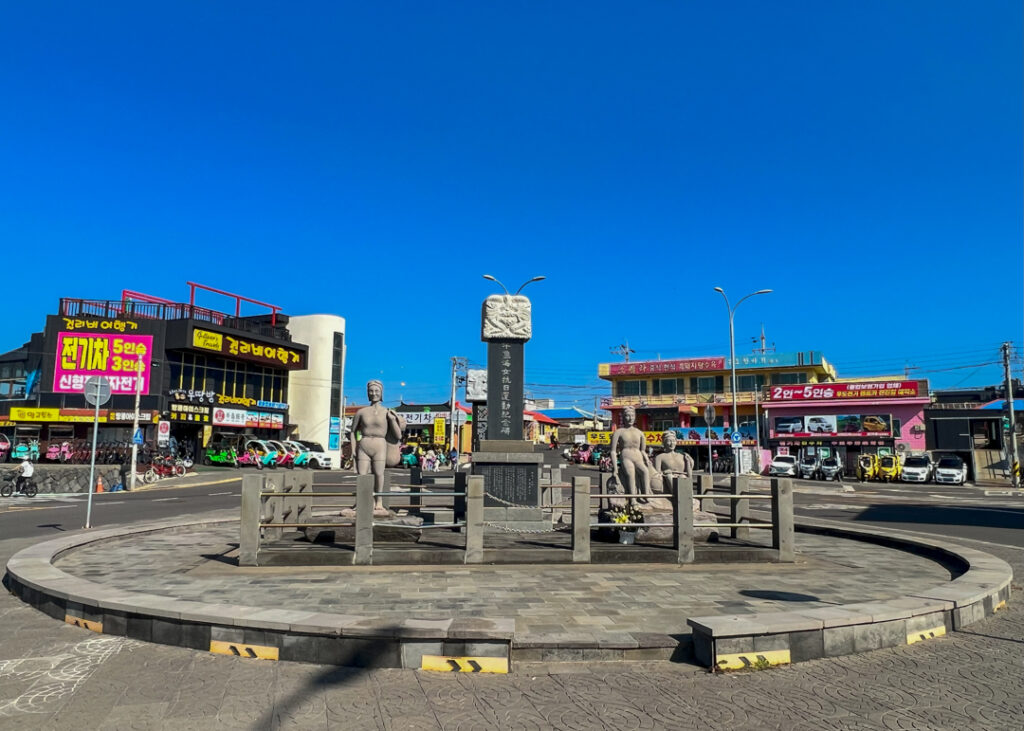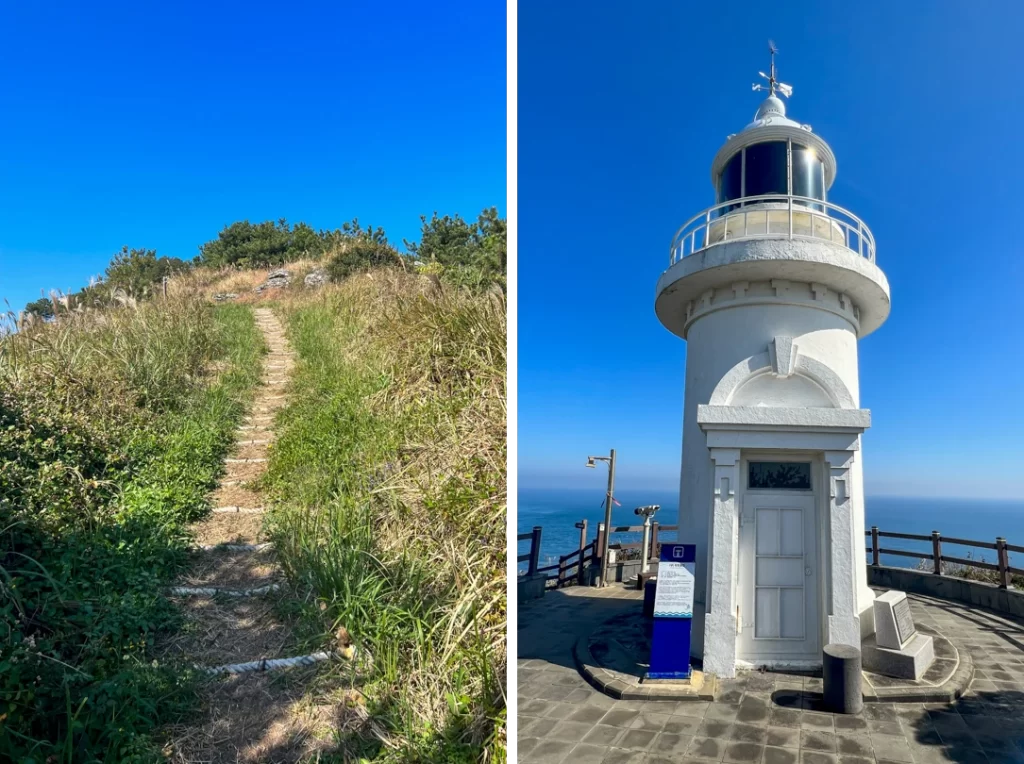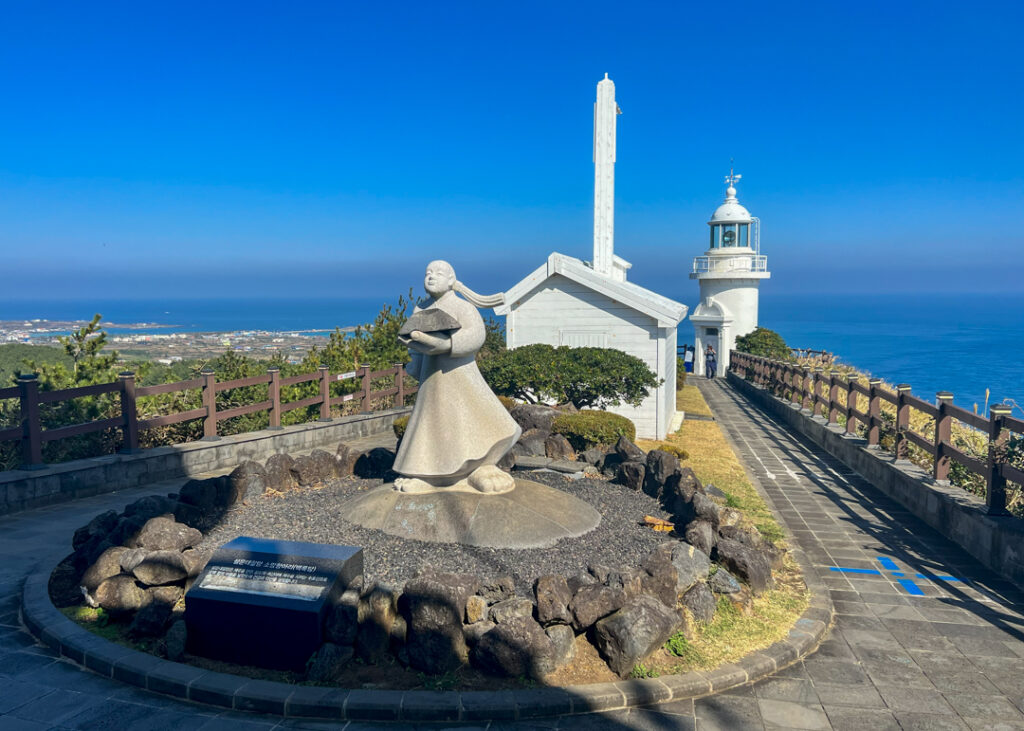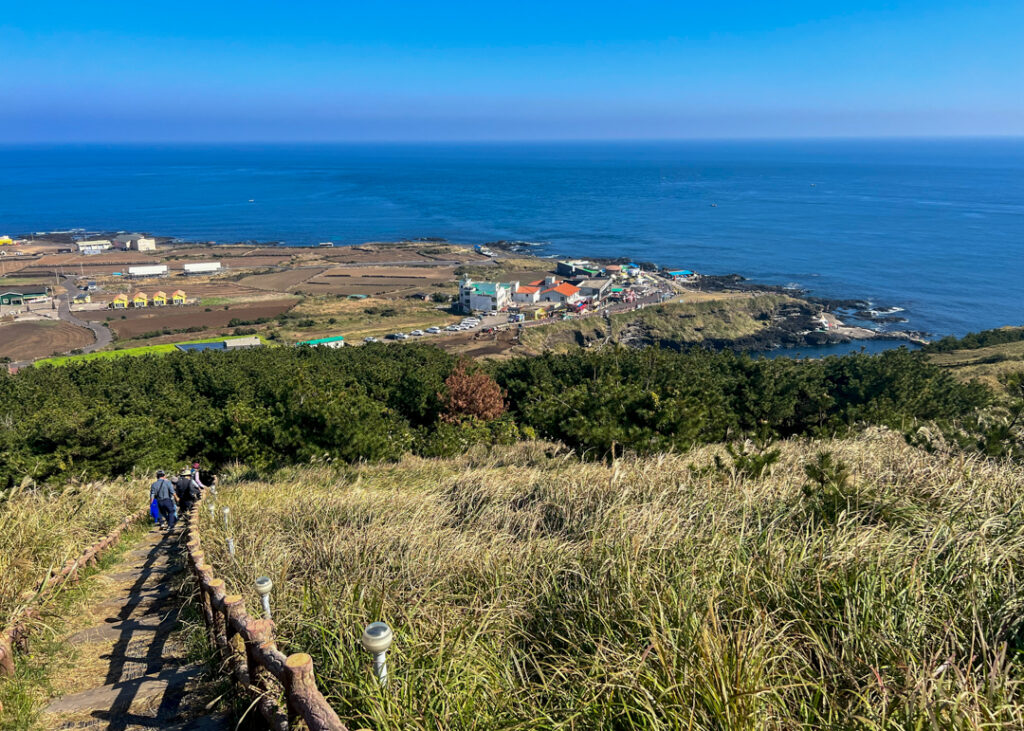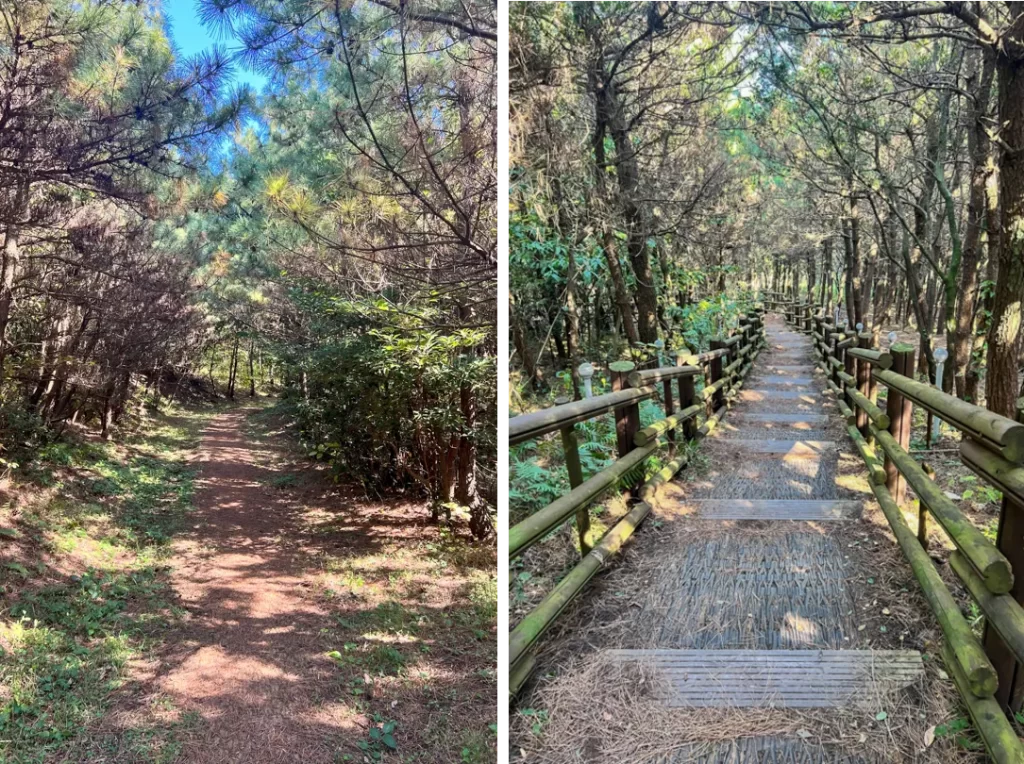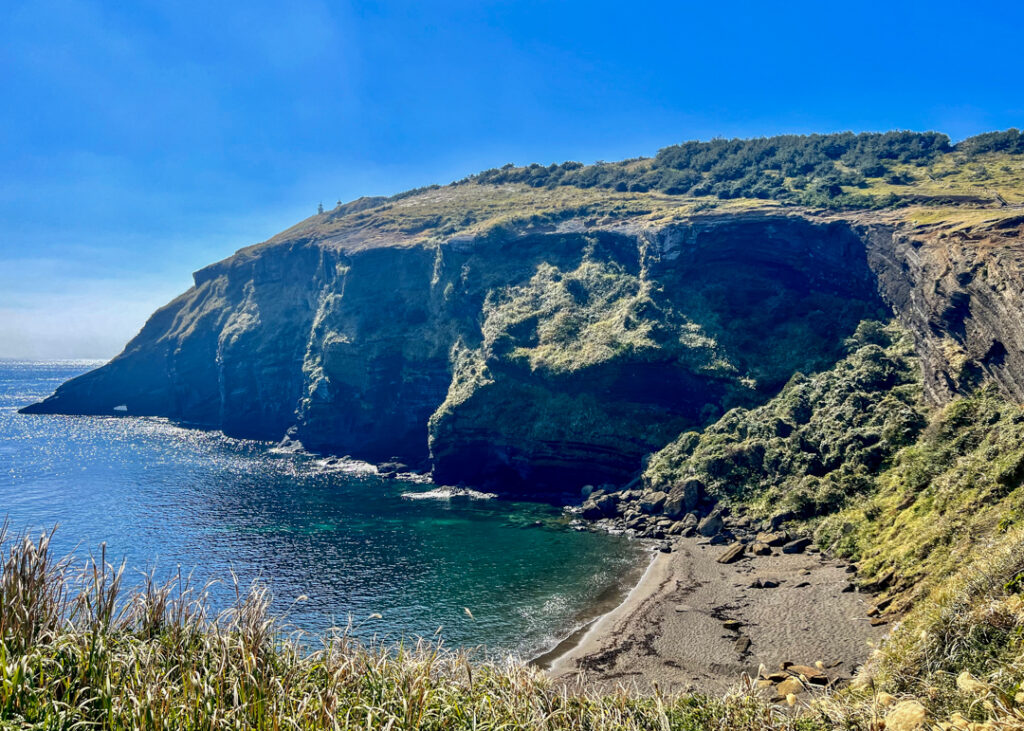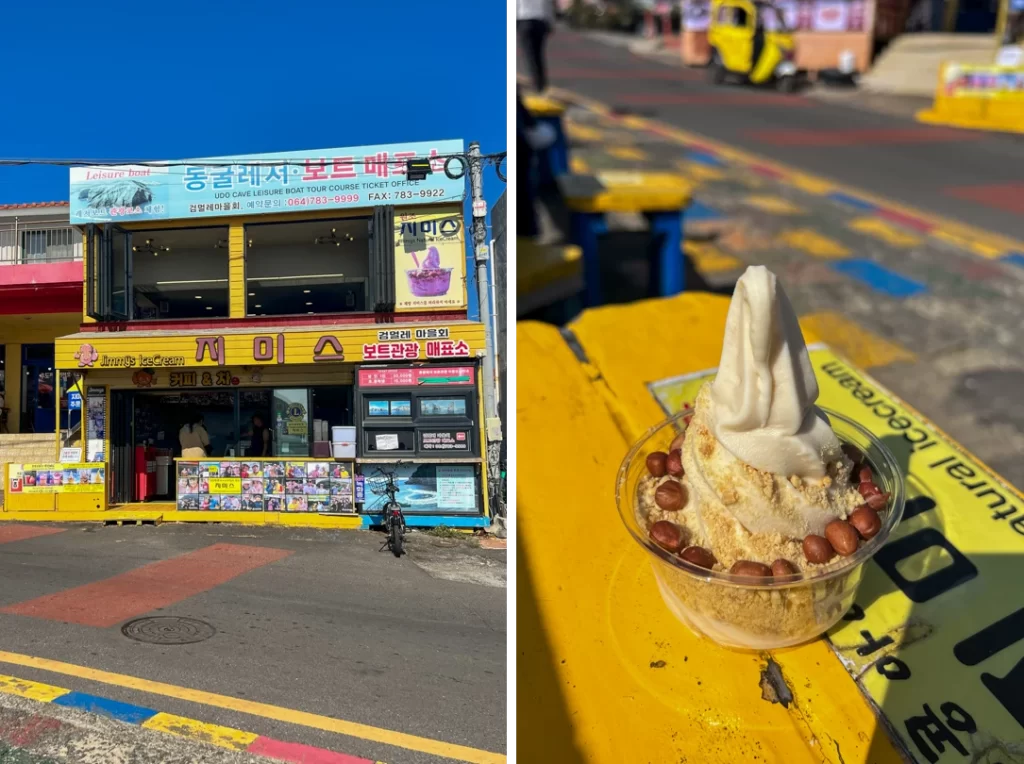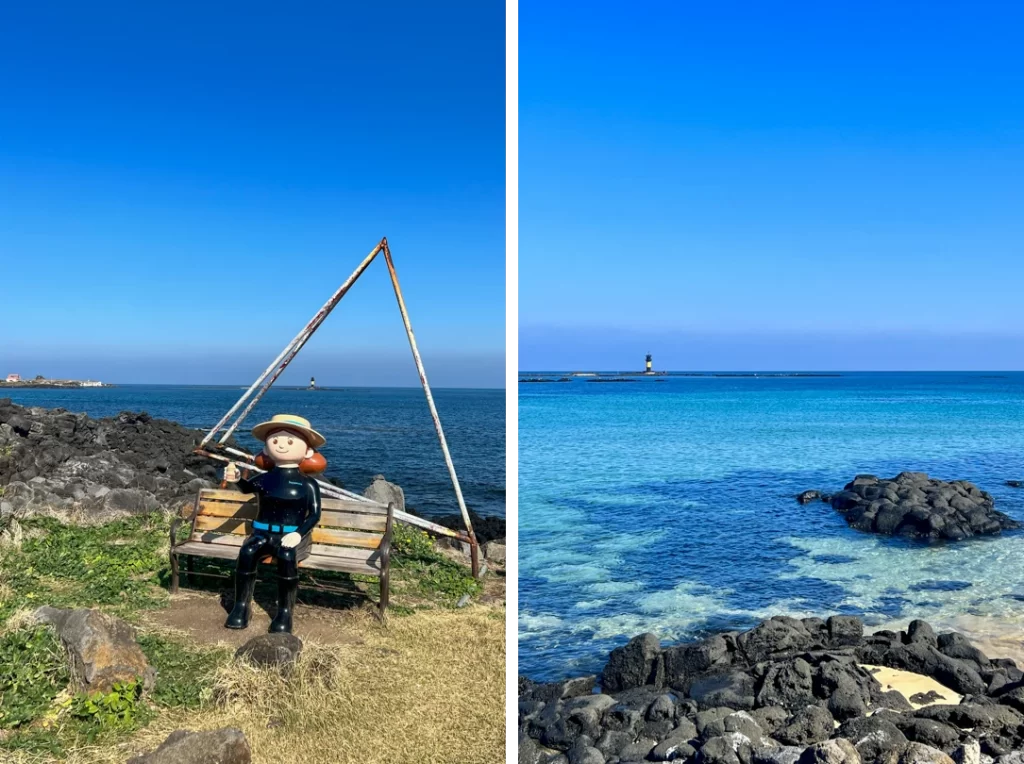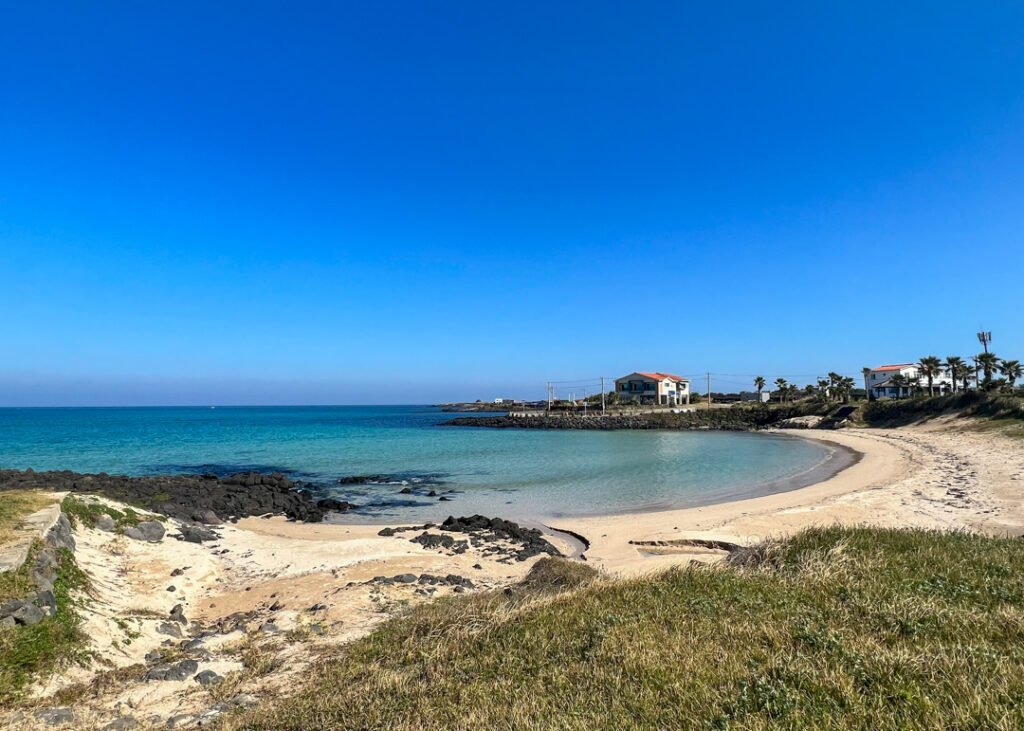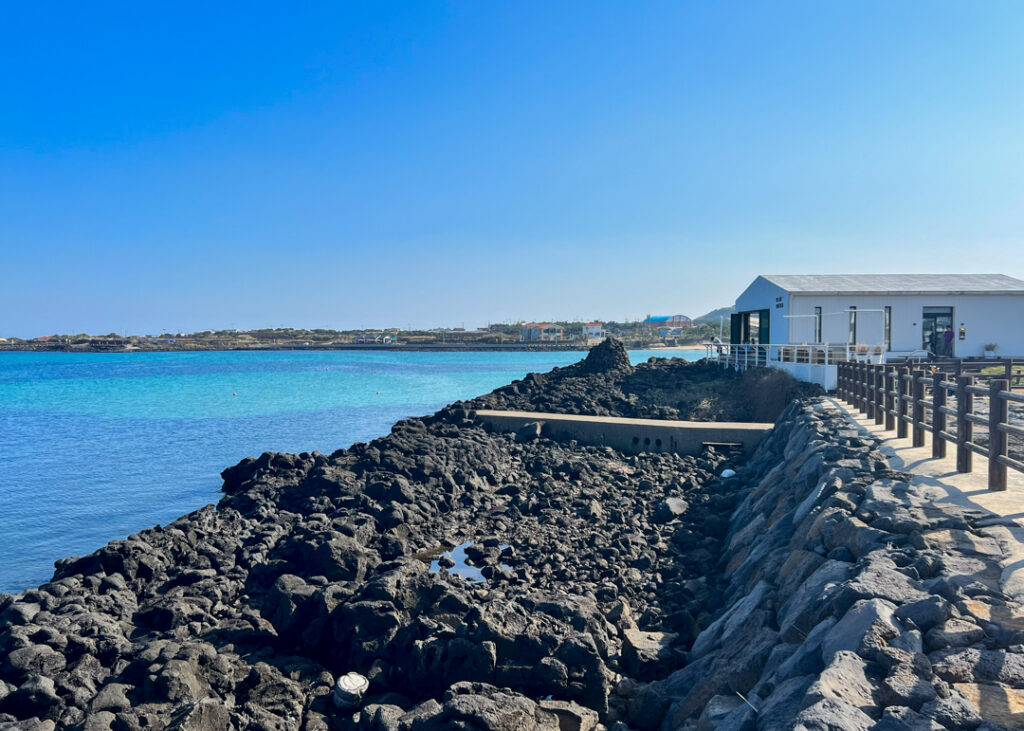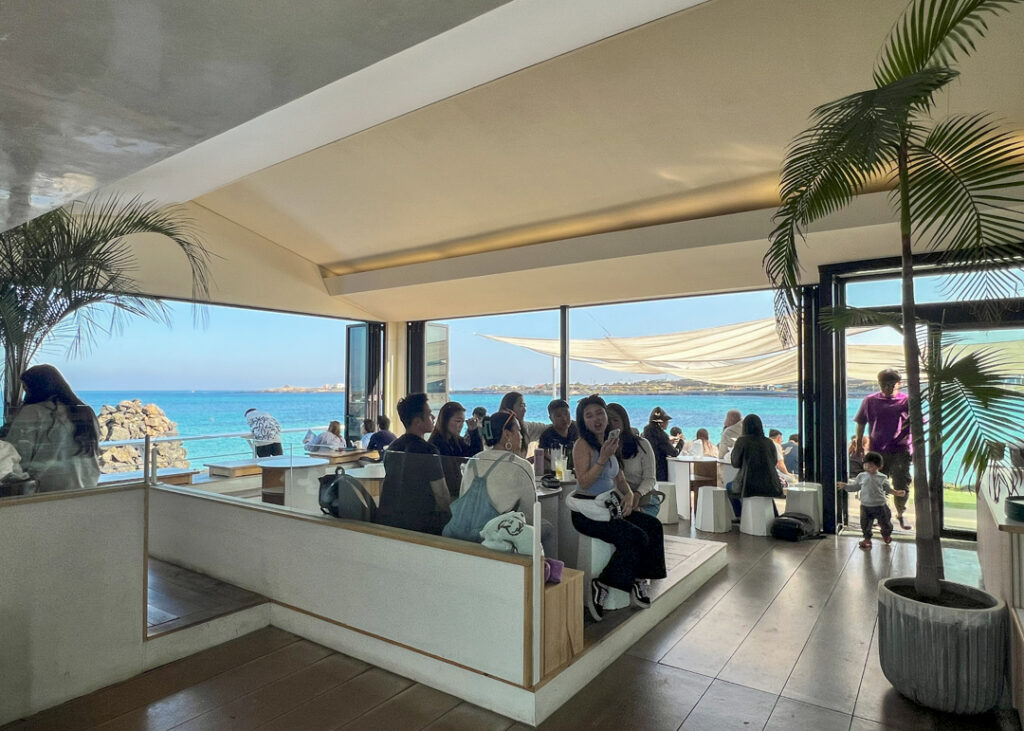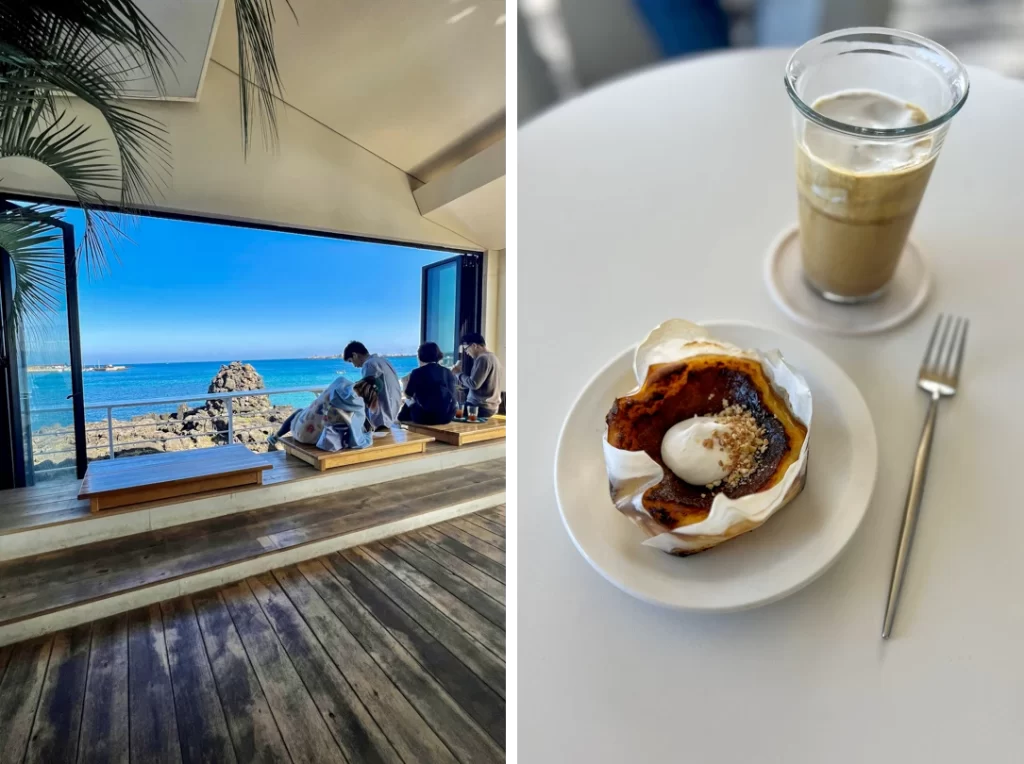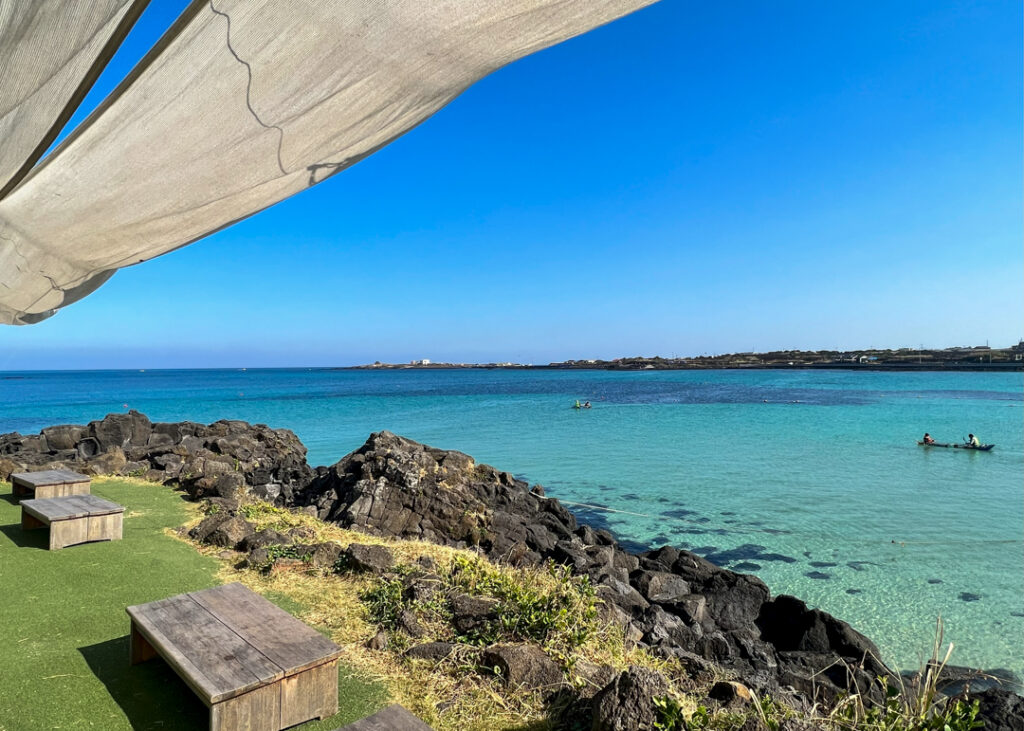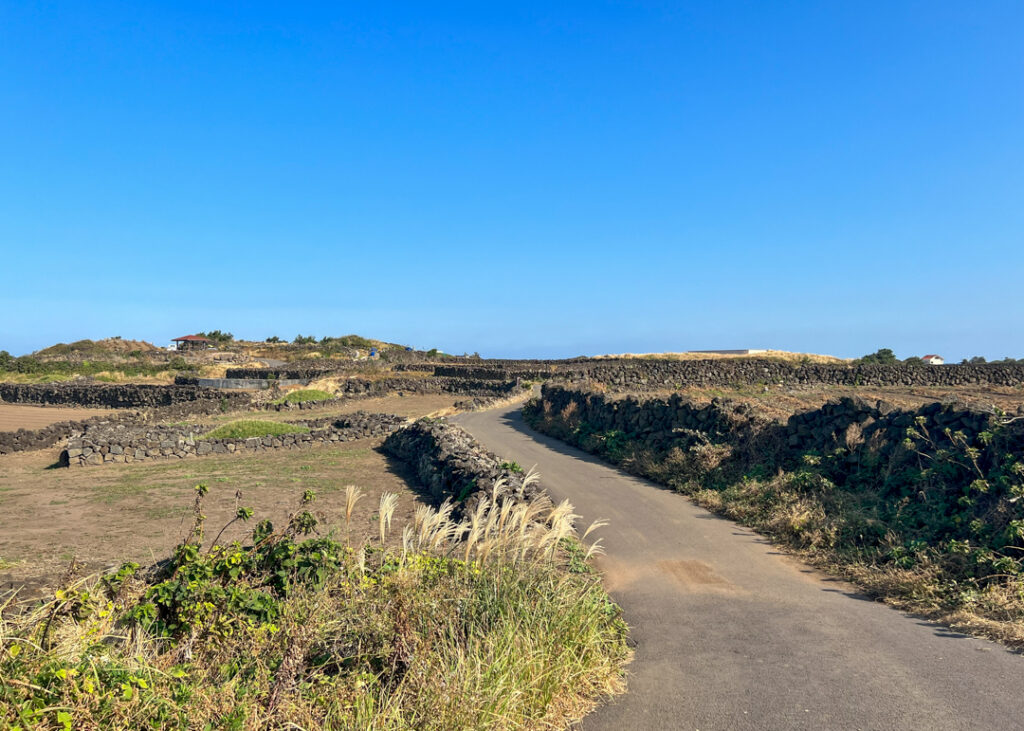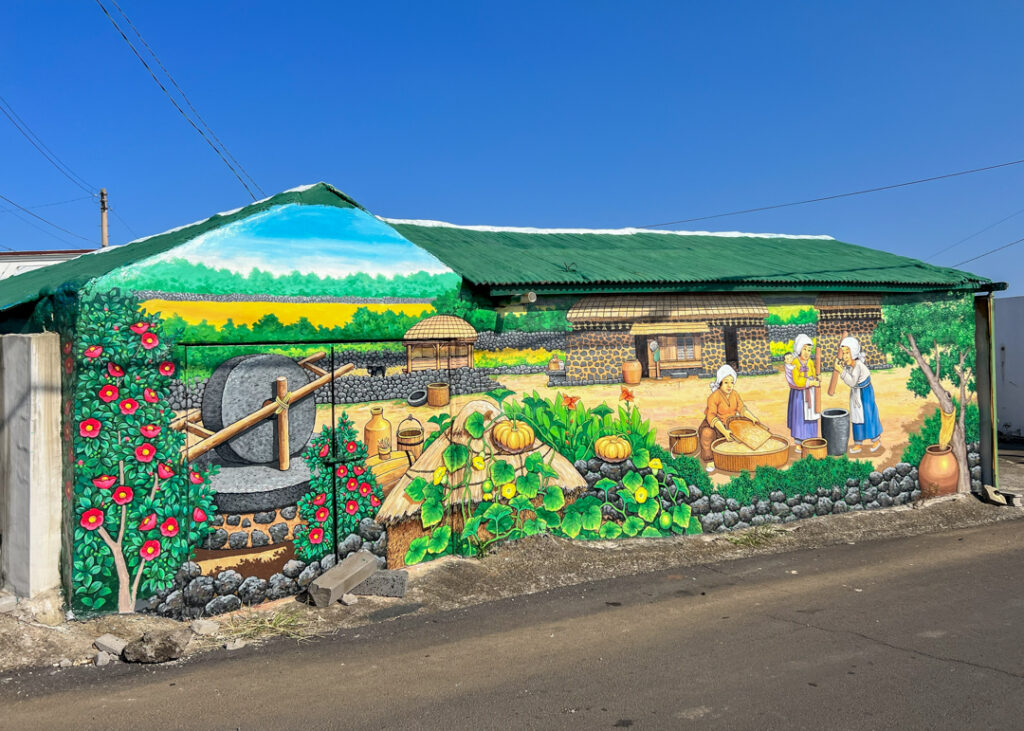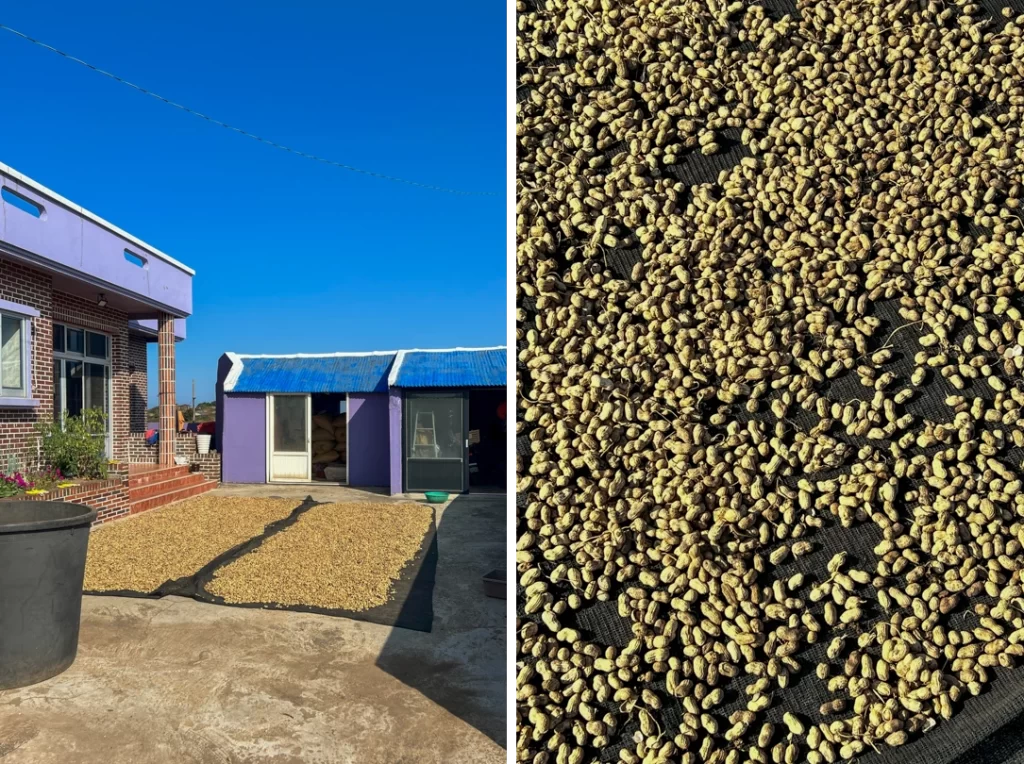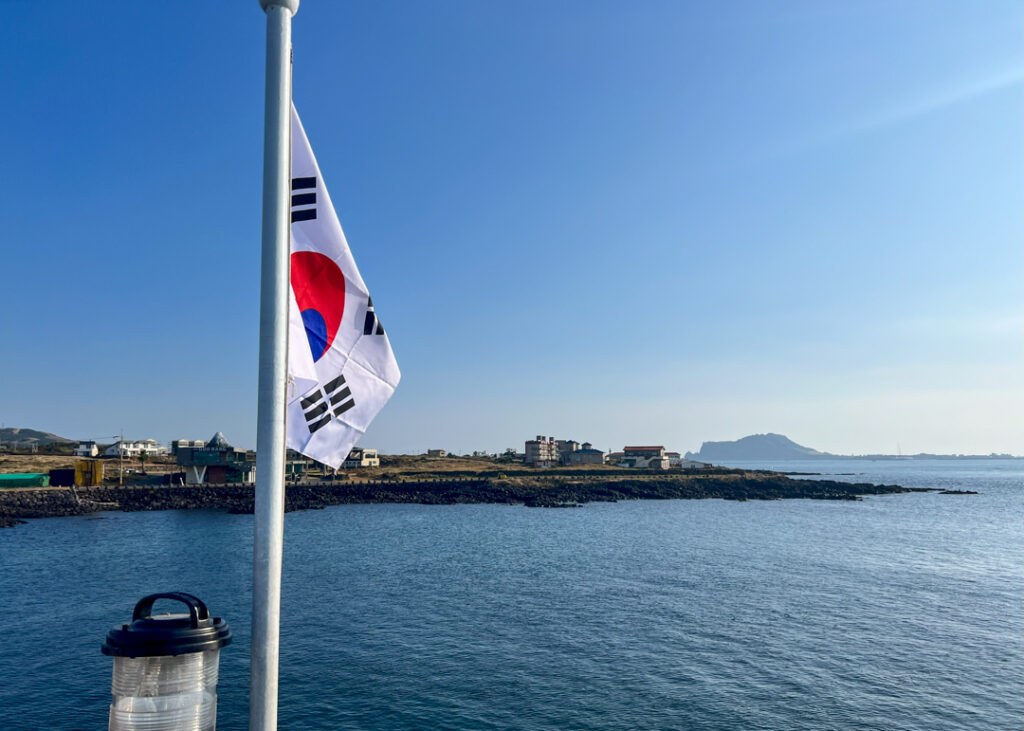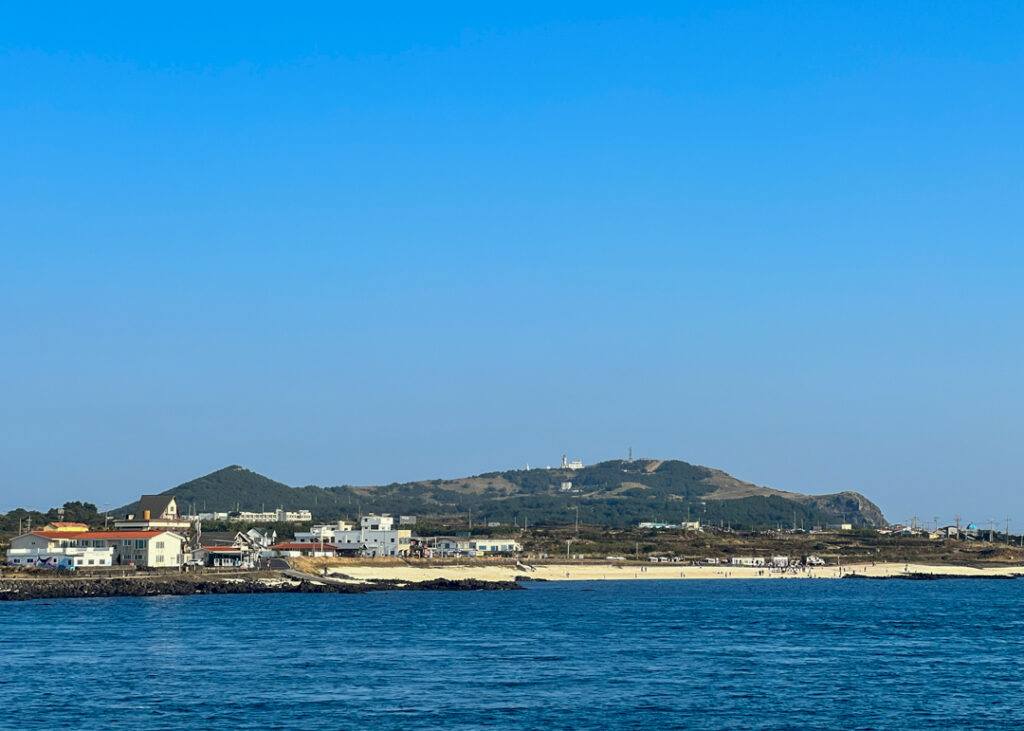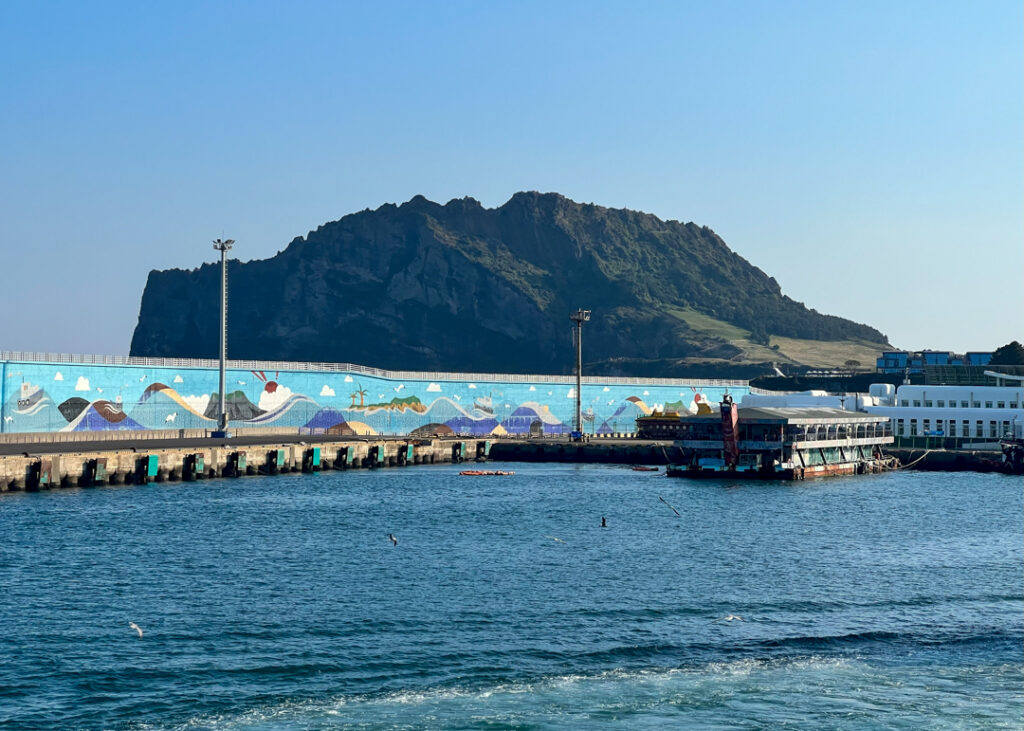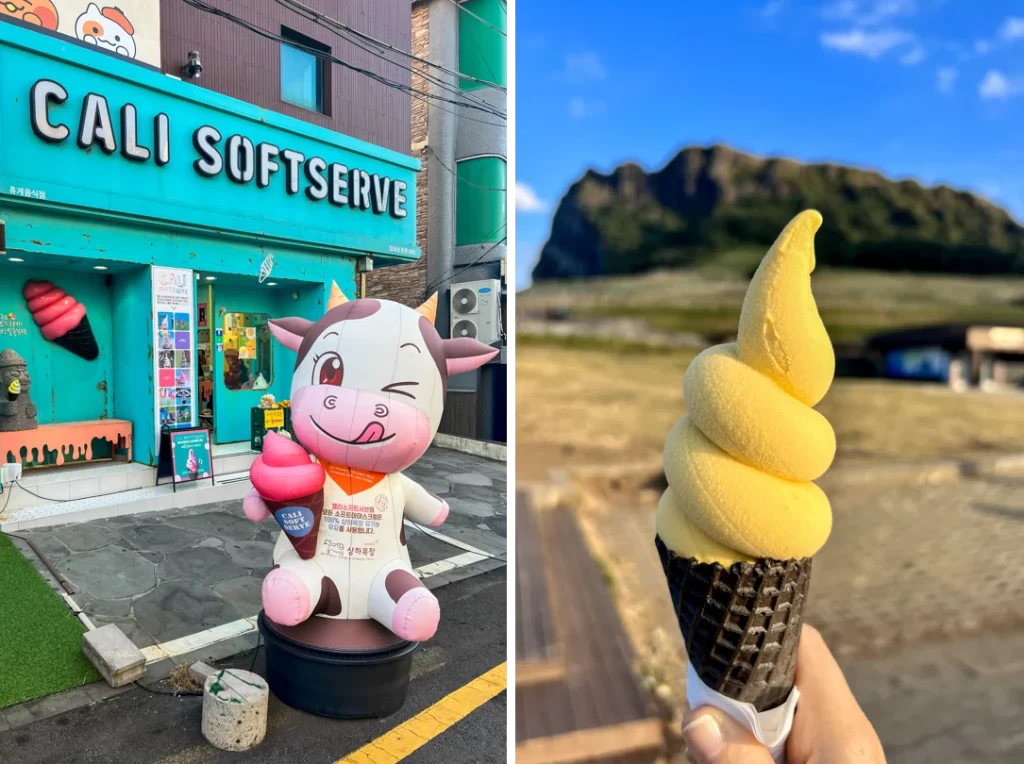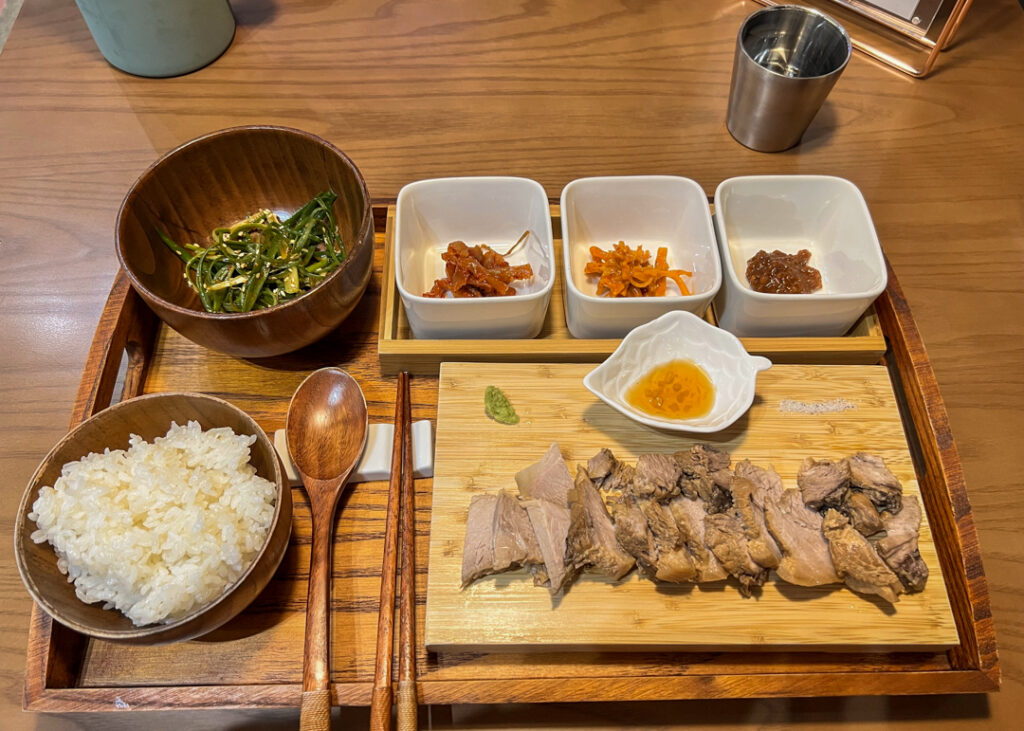In addition to Portuguese specialties, Madeira has its own typical dishes which reflect both its location surrounded by the ocean and its tropical climate and flavors. Funchal is undisputedly its gastronomic capital with plenty of options from the tourist-leaning marina establishments to the traditional restaurants in the side streets and the Old Town filled with locals. One thing you won’t see here: chain restaurants. The culinary scene is local, fresh, casual and comforting and all of it seems to go down very well with a glass of local wine in hand.
Breakfast
Do like most Madeirans and start your day with a sweet pastry and coffee. There are tons of delicious pasteleria all over town so just follow your nose and the chatter. For a truly local experience, Pasteleria Pau de Canela right by the central market is the place to be in the morning. With a wide array of freshly baked specialties (queijadas are a popular choice) and a swift service, it’s perfect for people on their way to work.
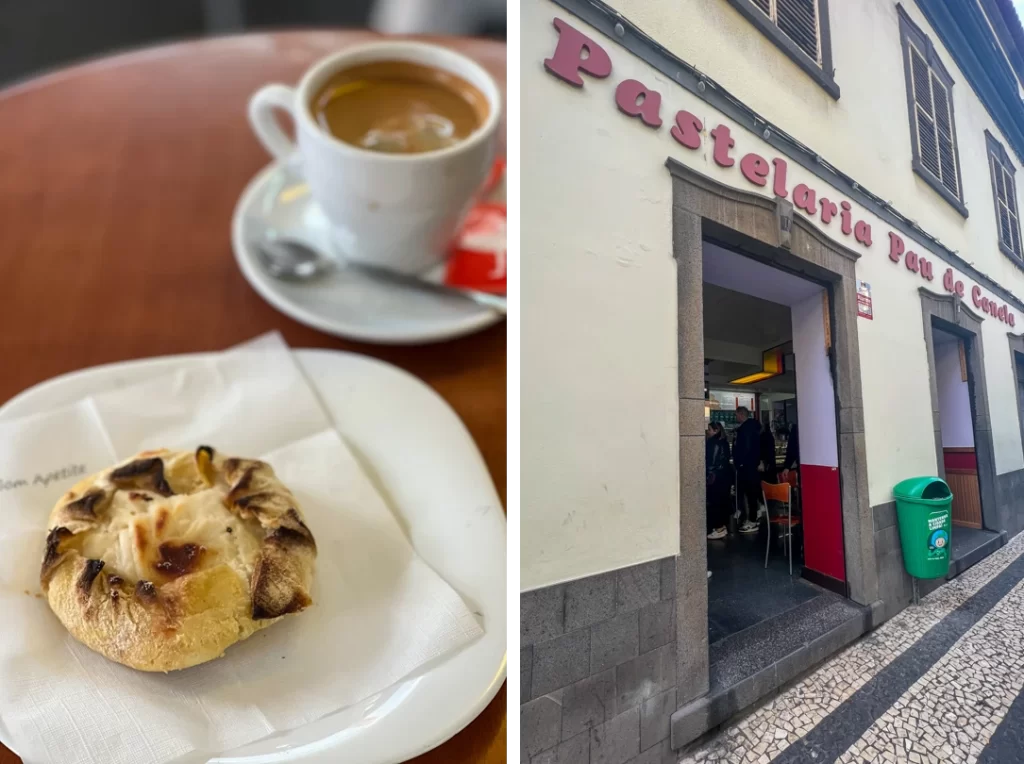
Other sweet options include the Bola de Berlim, a fluffy Portuguese donut filled with jam or custard, and any freshly baked bread or brioche rolls, often made with potatoes and/or cheese.
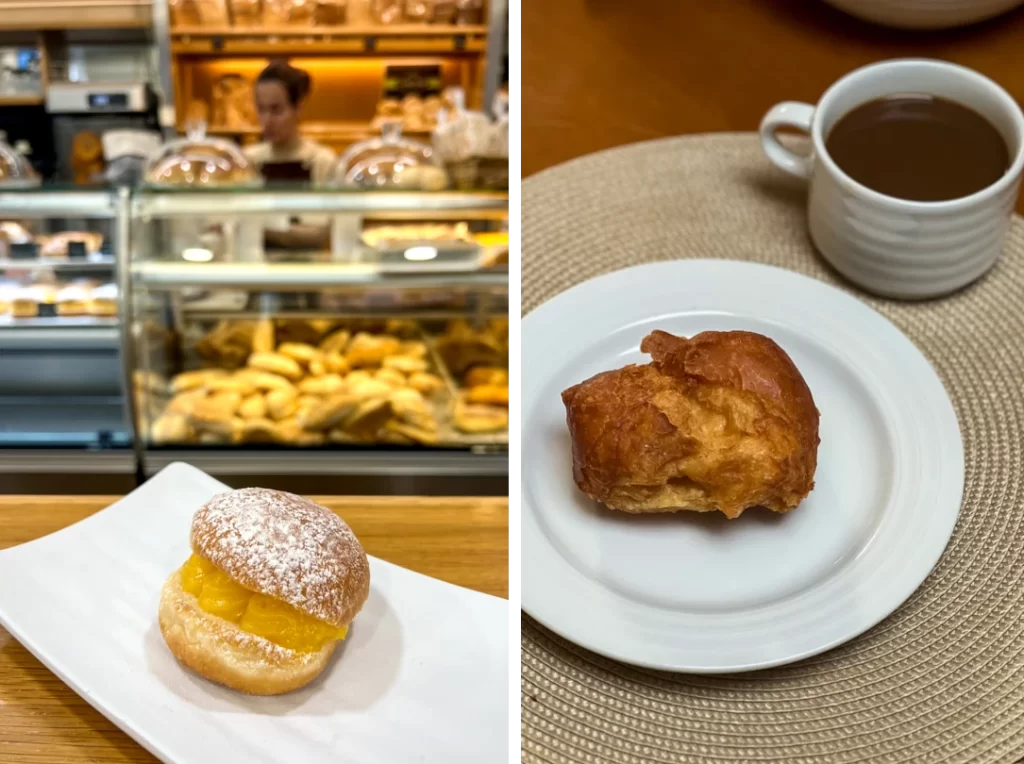
For a more substantial or savory breakfast, you’ll also find modern cafes ready for your fix of avocado toasts, omelets, and smoothies like the Brunch Club.
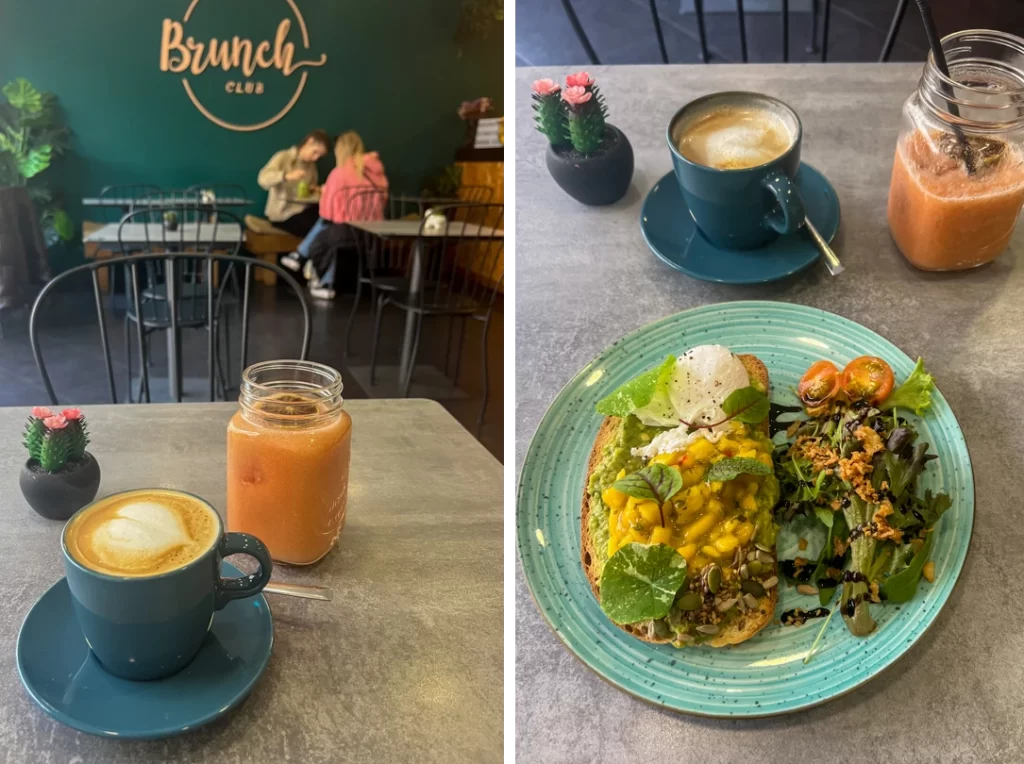
I especially loved the cozy and earthy vibe of Prima Caju and its healthy options, as beautiful as they were tasty.
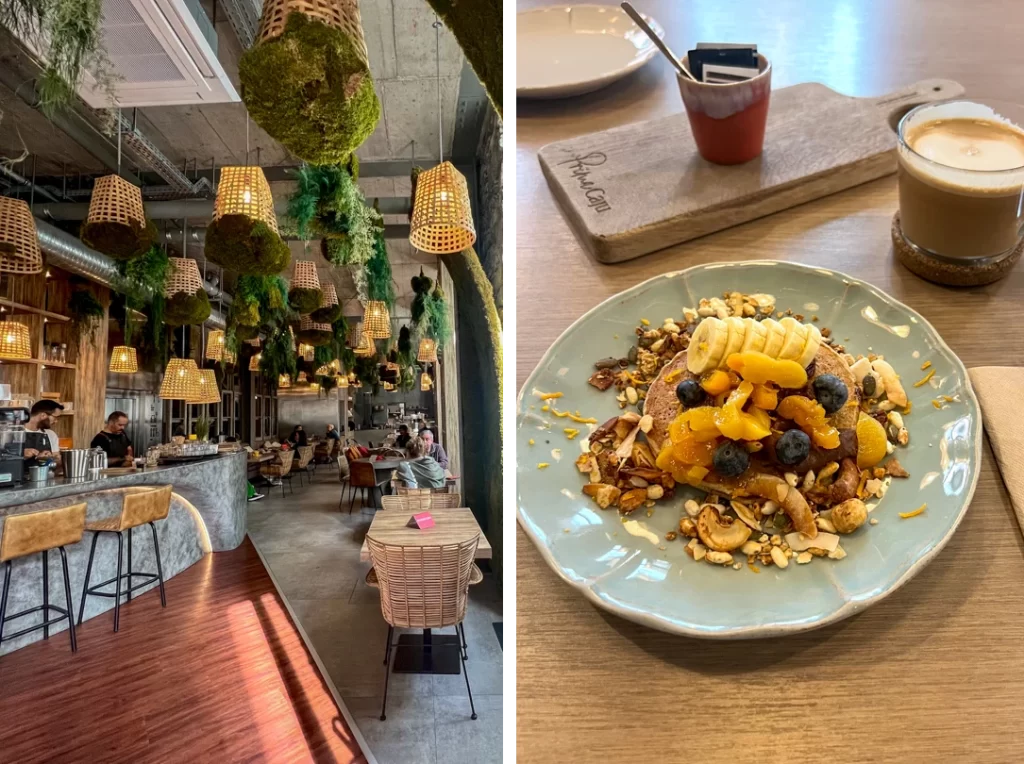
Lunch
Lunch can be anything you want it to be, from quick and filling to a multicourse meal. The always busy Delícia das Sopas has a daily rotation of 5 different soups where a big bowl served with a piece of bread and glass of wine will set you back about 6 euros.
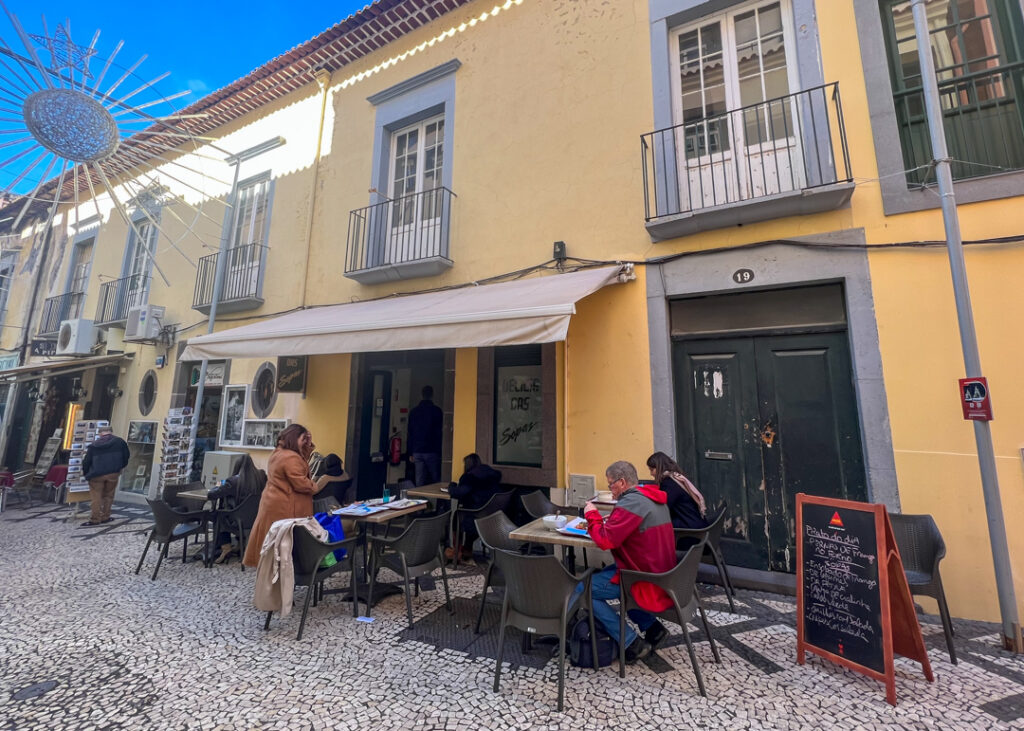
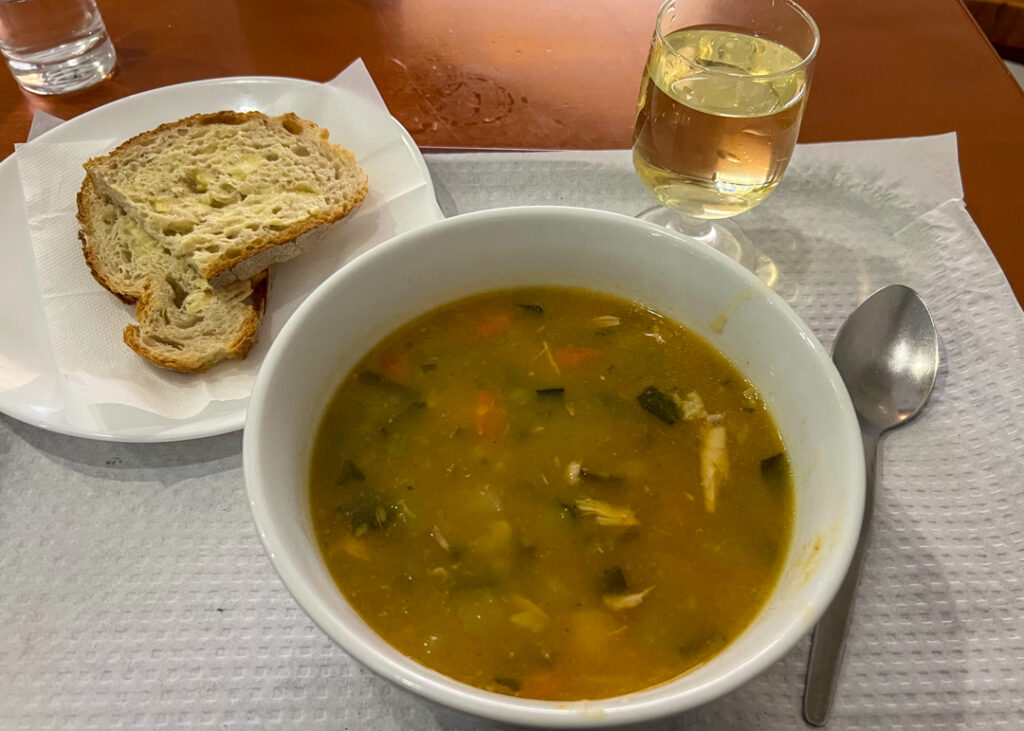
A Madeiran trademark is the island’s flatbread called bolo do caco. Made from flour and sweet potato, it is ubiquitous in every cafes and snack bars and used to sandwich a variety of meat and cheese. Try the popular “Prego Especial” which combines the classic steak & garlic butter with ham, cheese, lettuce and tomato.
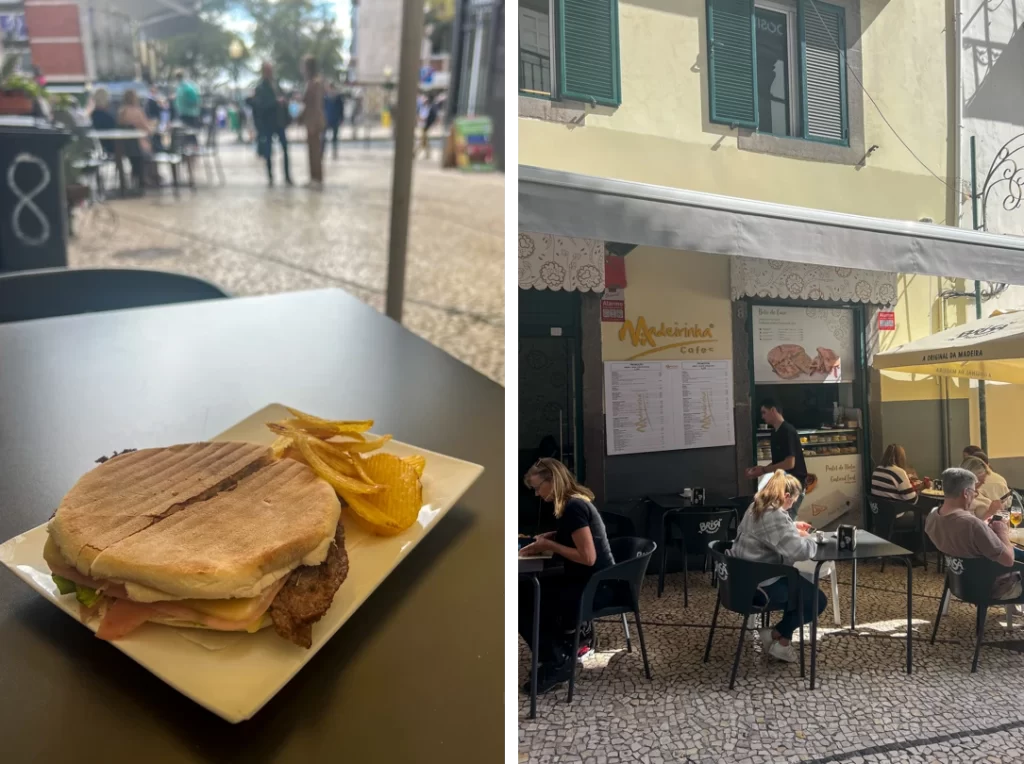
The seafront promenade is unbeatable for lunching in the sun with a view of the ocean and the boats passing by. Grab a table at the Santiago Beach Bar near the yellow fort in the eastern edge of town where you can end your meal with a dip in the water from the little beach right below.
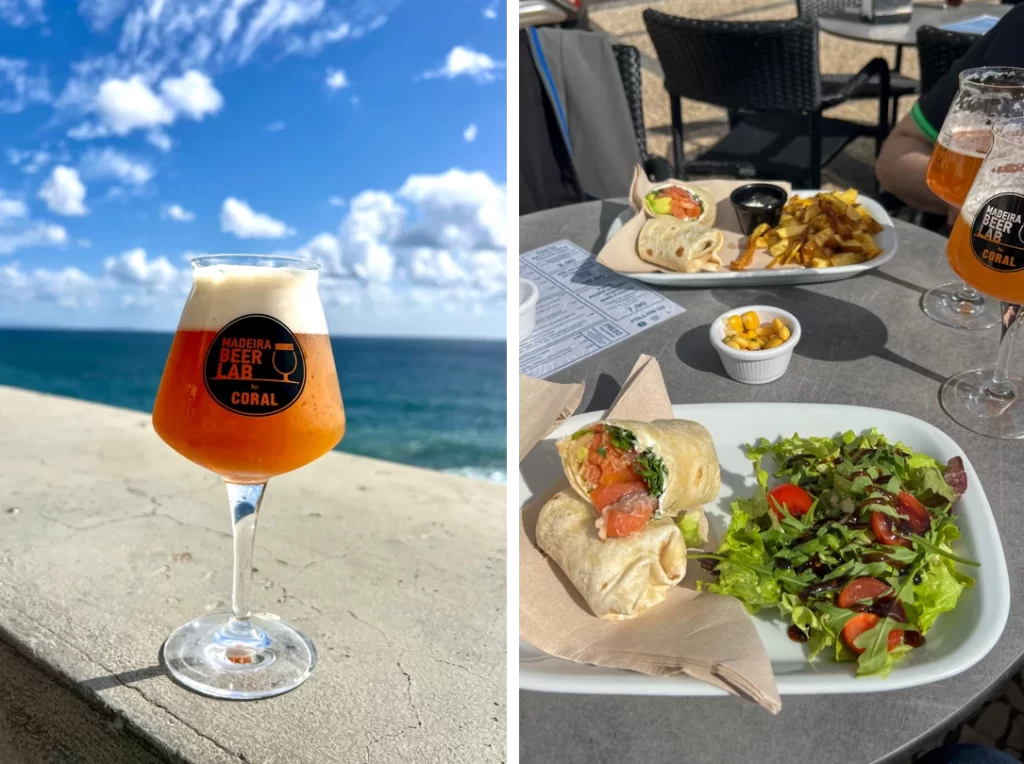
The Old Town is packed with traditional restaurants where you can get a great fish meal or grilled skewers (called espetada here) such as at Restaurante Escadinha.
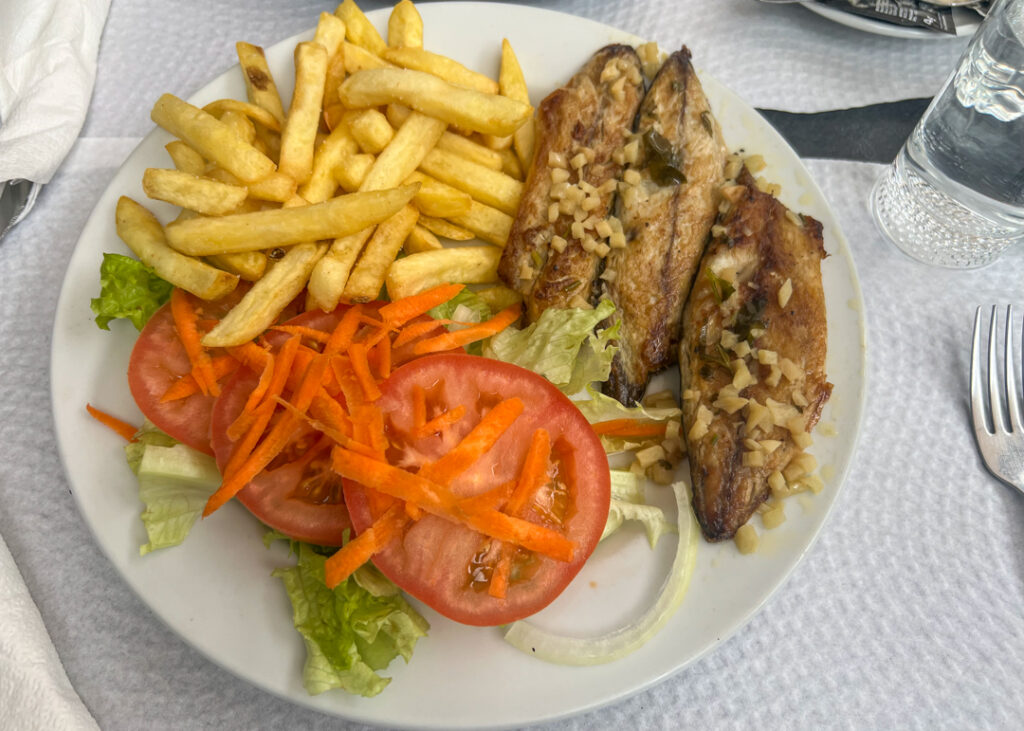
In the city center, established institutions like Restaurante Londres serve authentic Madeiran cuisine to the local crowd and are mostly devoid of tourists. Always full and warm, it feels like a cross between a diner and a canteen, with large portions (order half!) and the kind of peculiar atmosphere with sports on tv in the background that needs to be experienced.
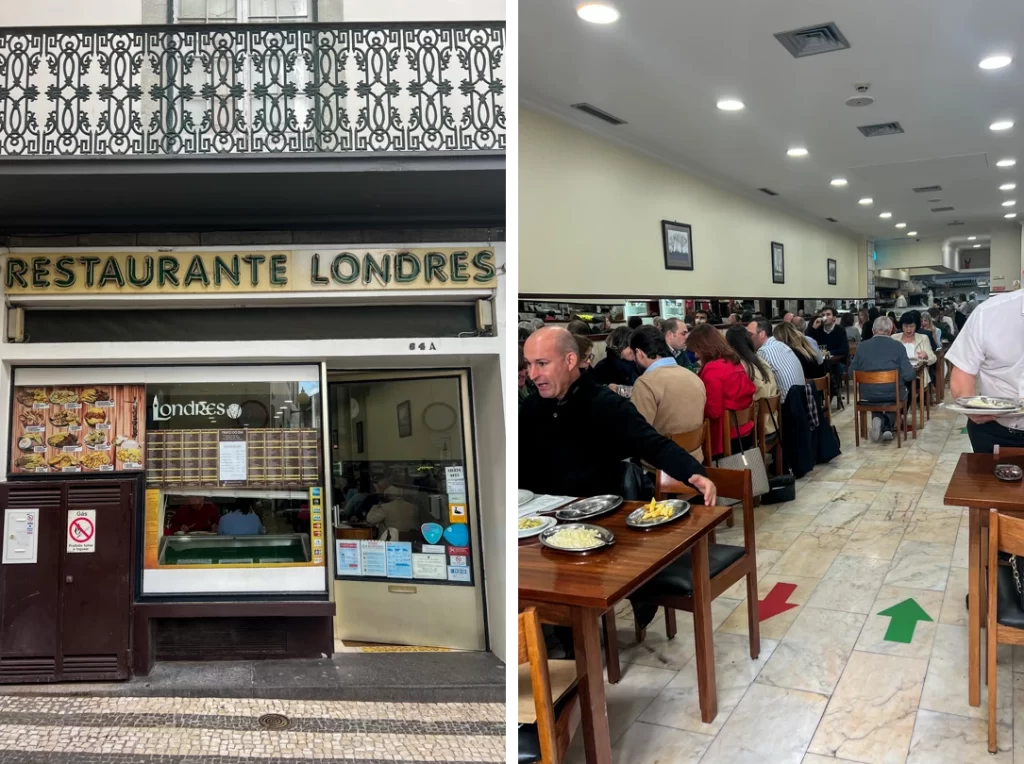
Also, how nice is this serving set for two? Feels much grandeur than a diner now!
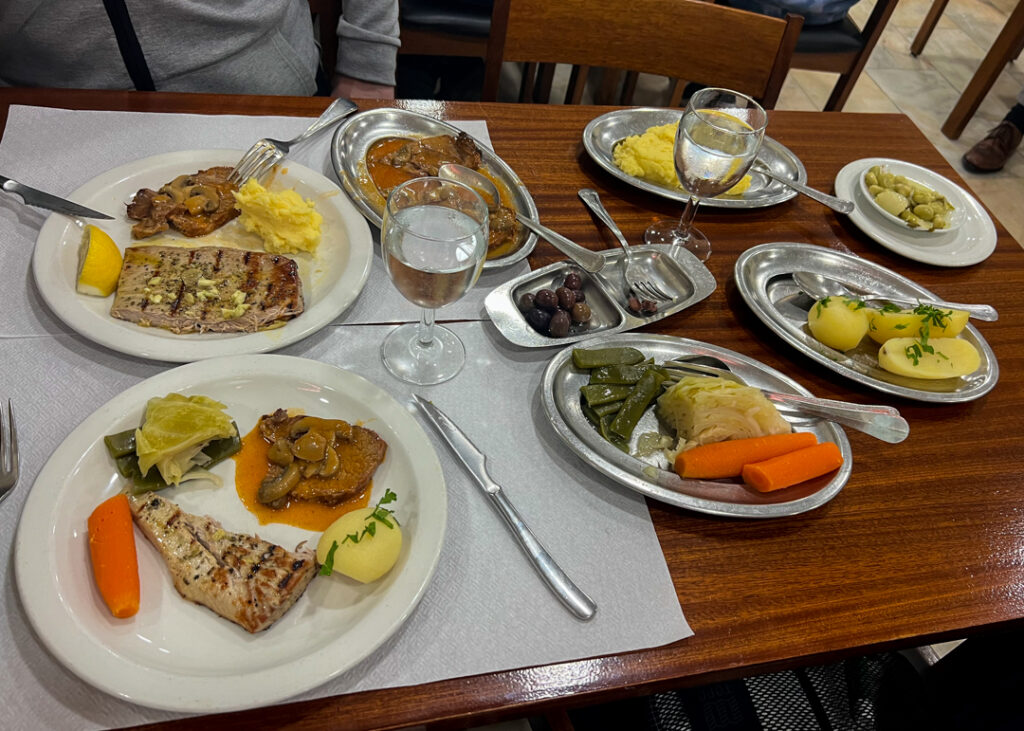
Stepping up from traditional to modern, a few restaurants lining the lovely streets near the cathedral are worth planning a few meals around for an updated take on local cuisine. Restaurante Informal is one such gem with a fresh take on Portuguese cuisine with a few international twists.
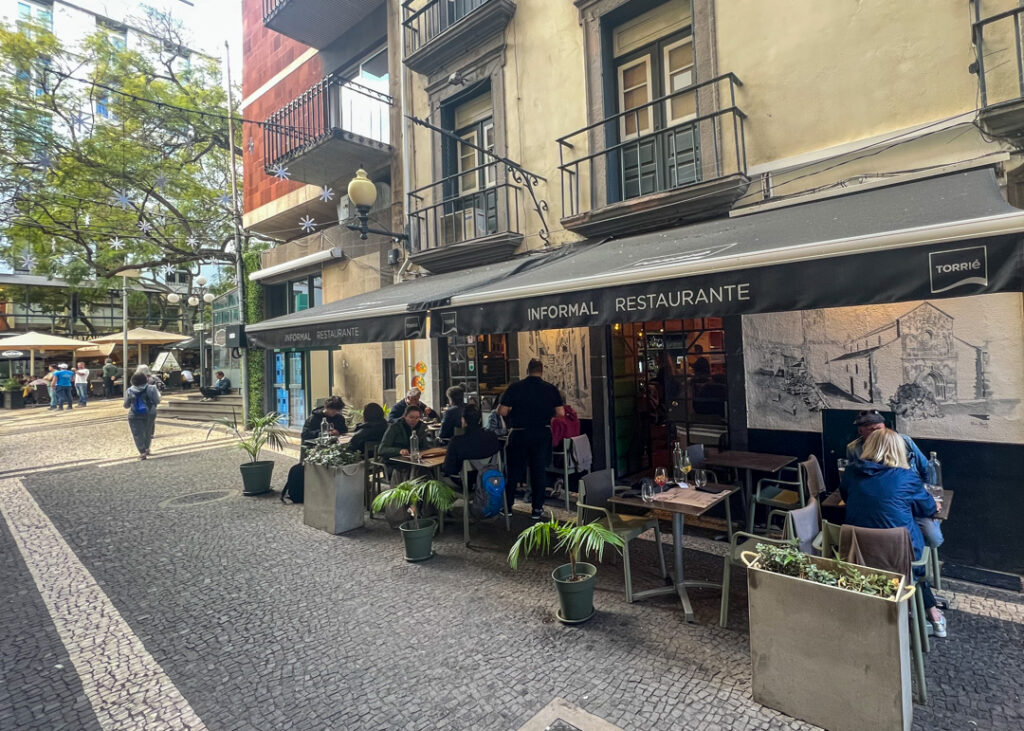
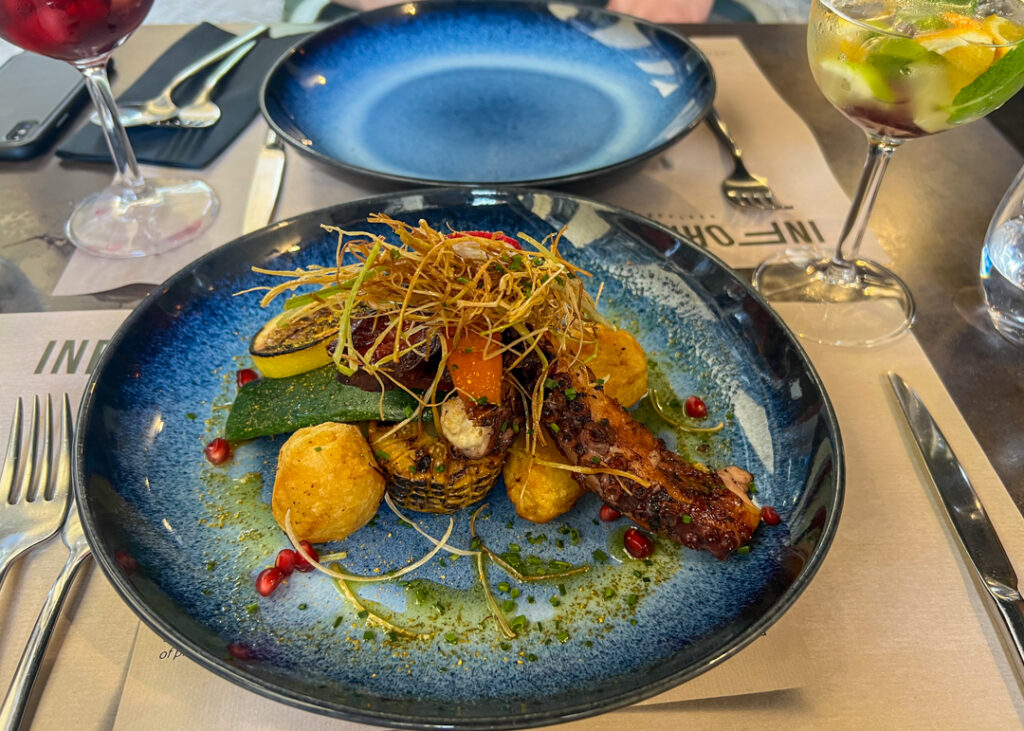
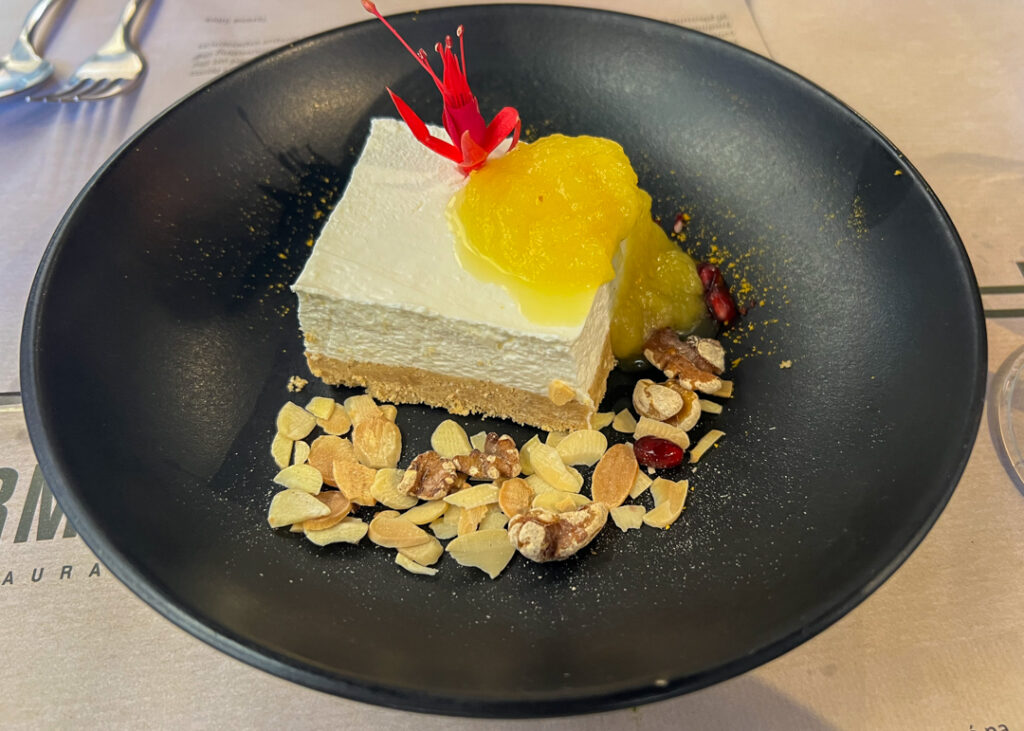
For a truly memorable meal though, nothing beats Akua near the marina for a literal dive into splendid seafood. I’ve been for dinner and lunch and both were terrific, but there’s something about the midday light and the quieter room that makes lunch here that much more enjoyable…and the beautiful dishes that much more appealing! You’ll want the entire menu and trust me, nothing will disappoint. Do try the tuna tartar which comes in handy little fried cones…
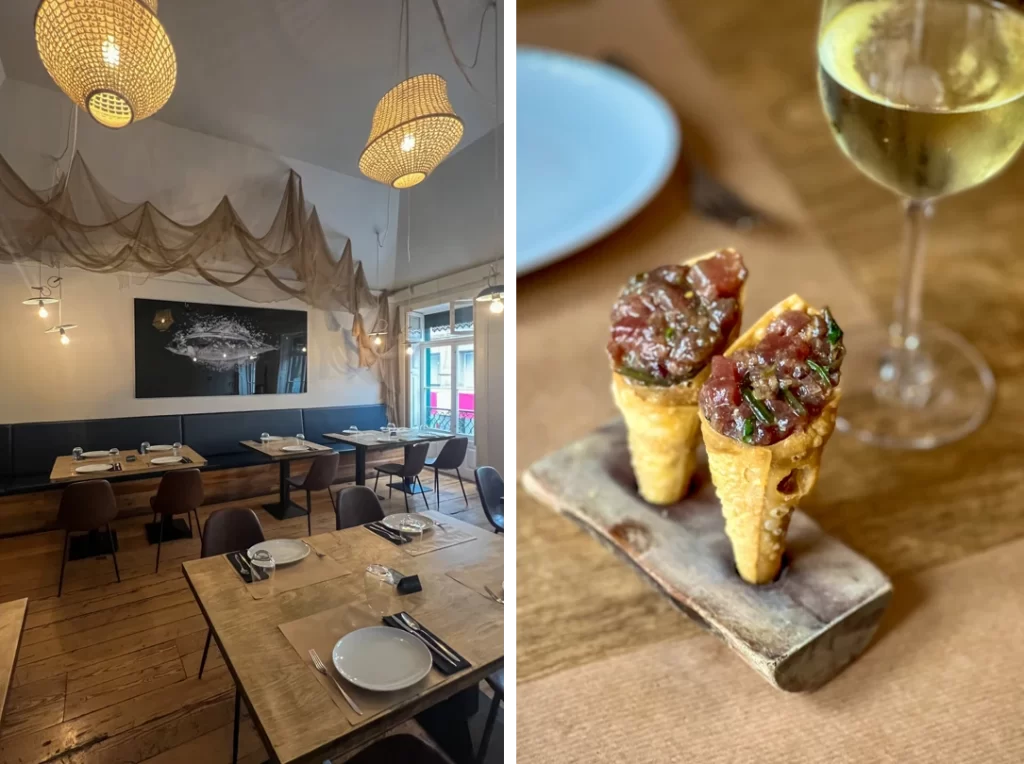
…and save room for their special seafood rice for two which comes with the most delicious Carabinieri (scarlet prawns) you’ve ever tasted!
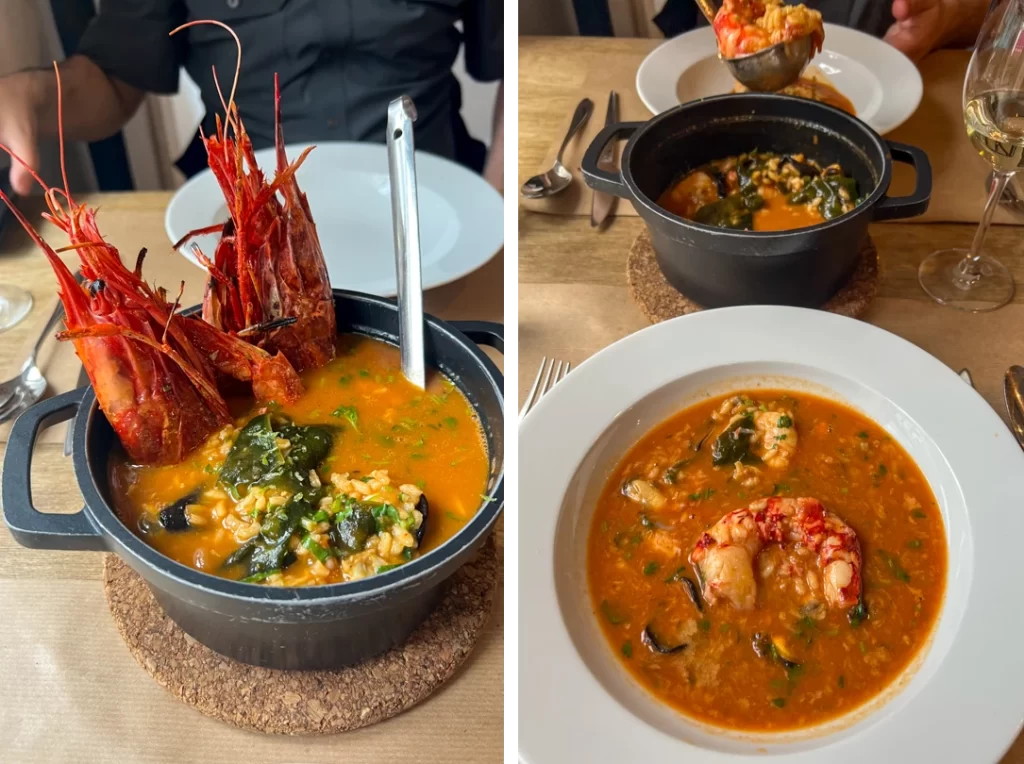
Grouper carpaccio was also a revelation, and even the desserts will surprise you – white chocolate, black olives, and passion fruit? Yep, it works.
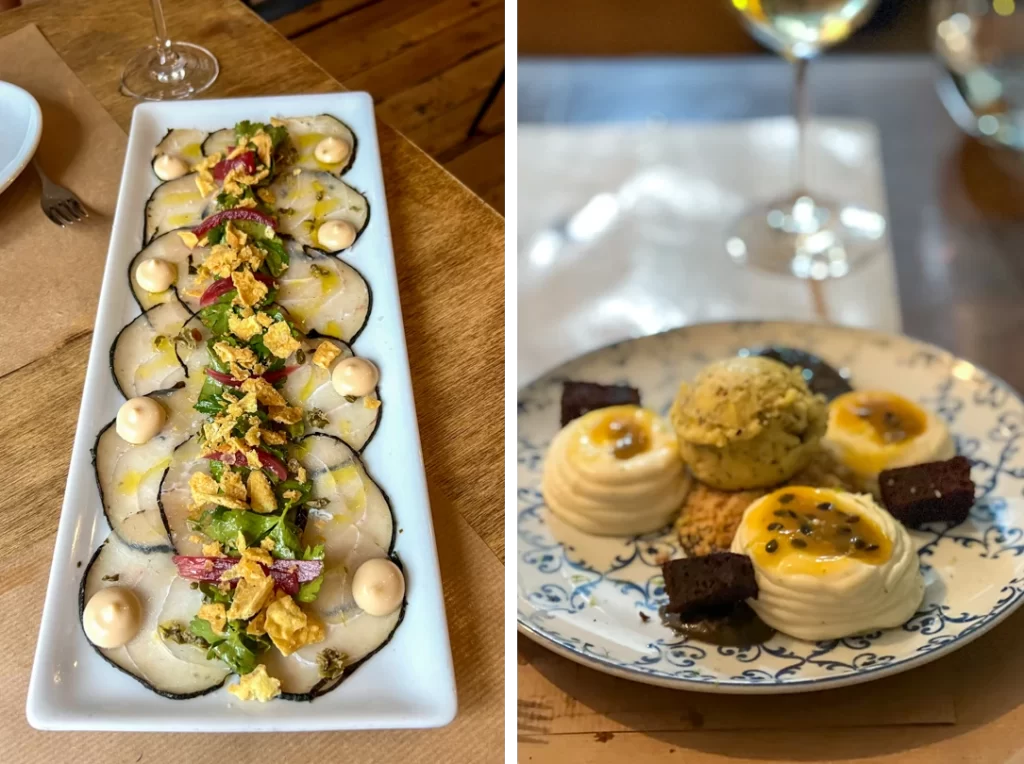
Mid-Afternoon
Like in Portugal, dinner time here tends to be quite late compared to our US standards (8pm-10pm). You should take full advantage of this by sampling the city’s many sweet treats – you’re welcome! Of course, you’ll find plenty of the addictive pasteis de nata in Madeira too, from the humble bakery to the dedicated Nata 7 locations.
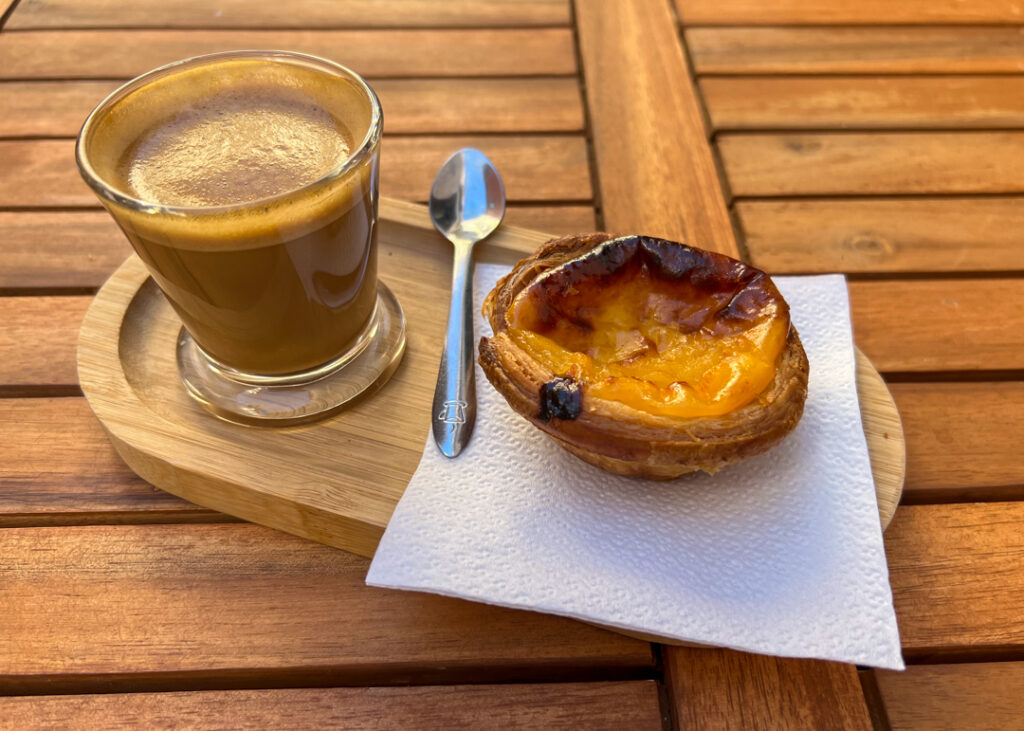
Have fun sampling a bunch of other local pastries. Lots of eggs, flan, brioche dough and tropical fruits…they all lean on the yellow side funny enough and taste like sweet sunshine, all soft and creamy.
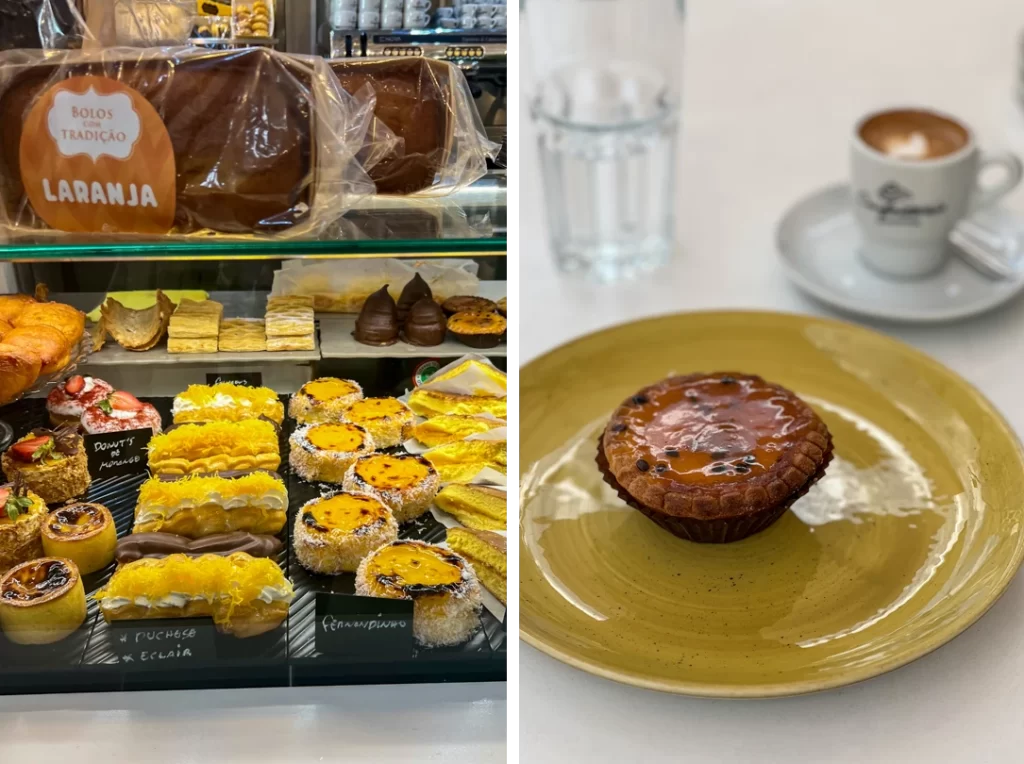
SlicE pastry shop has elaborate confections and great coffee in a pleasantly quiet pedestrian street.
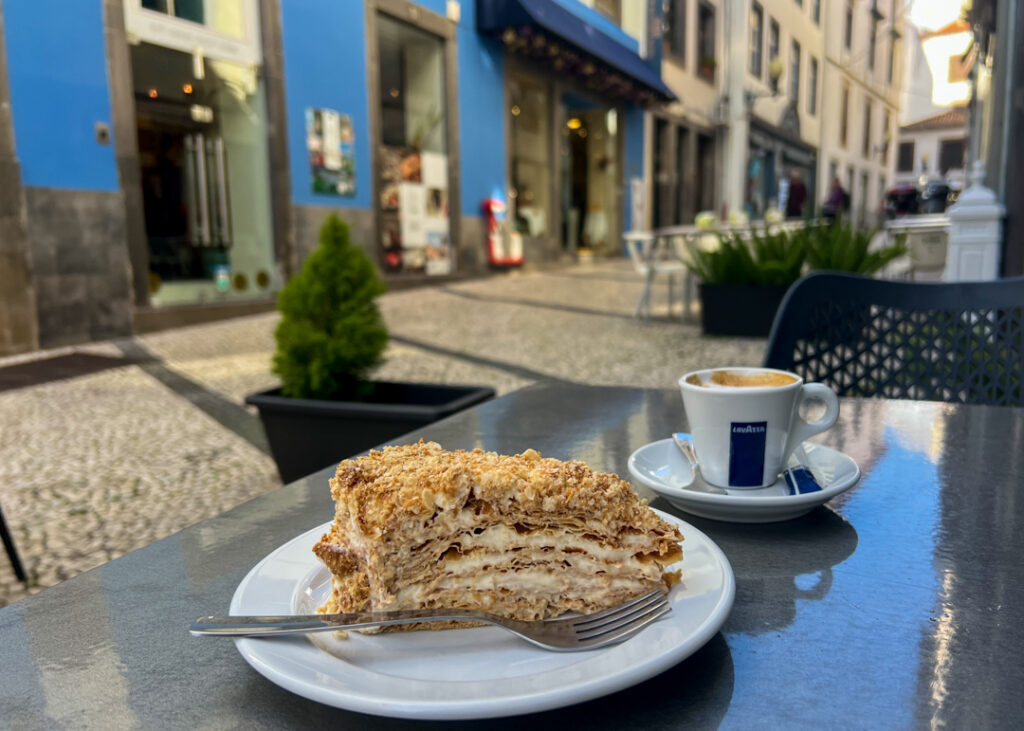
If you have the sweet tooth but not the appetite, stop by the excellent chocolate shop UauCacau where you can enjoy an espresso with a handmade chocolate for €1.50.
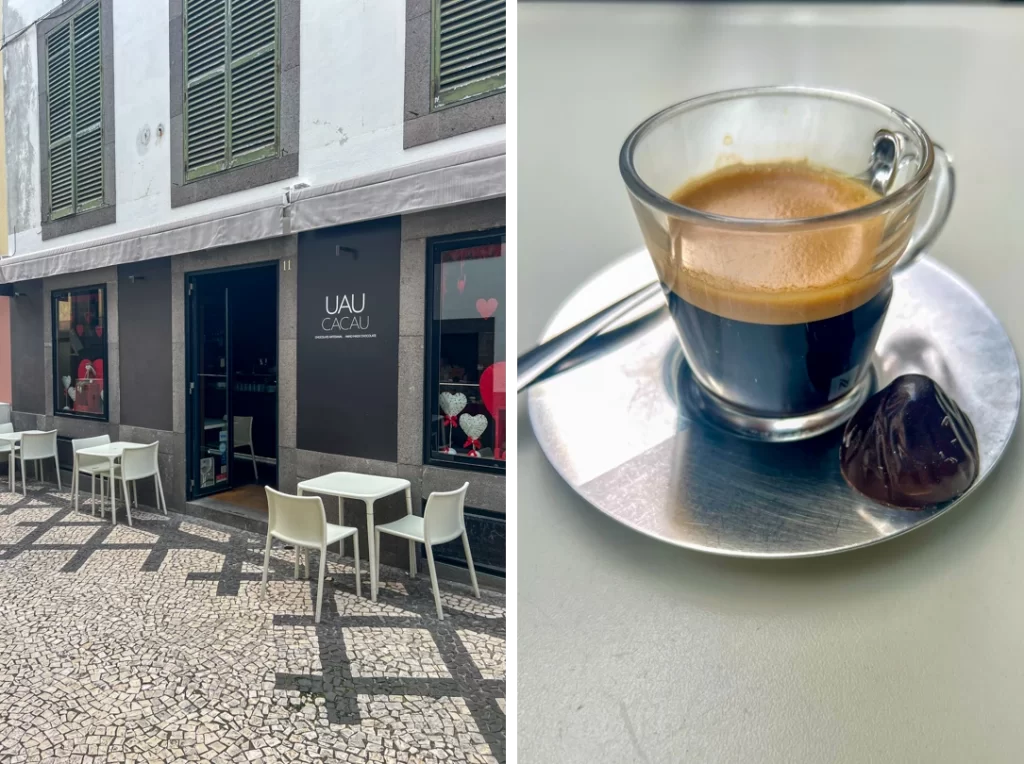
Make sure to bring a box of chocolates back home which have local Madeiran flavors like banana, passion fruit, Madeira wine, sugar cane honey, etc.
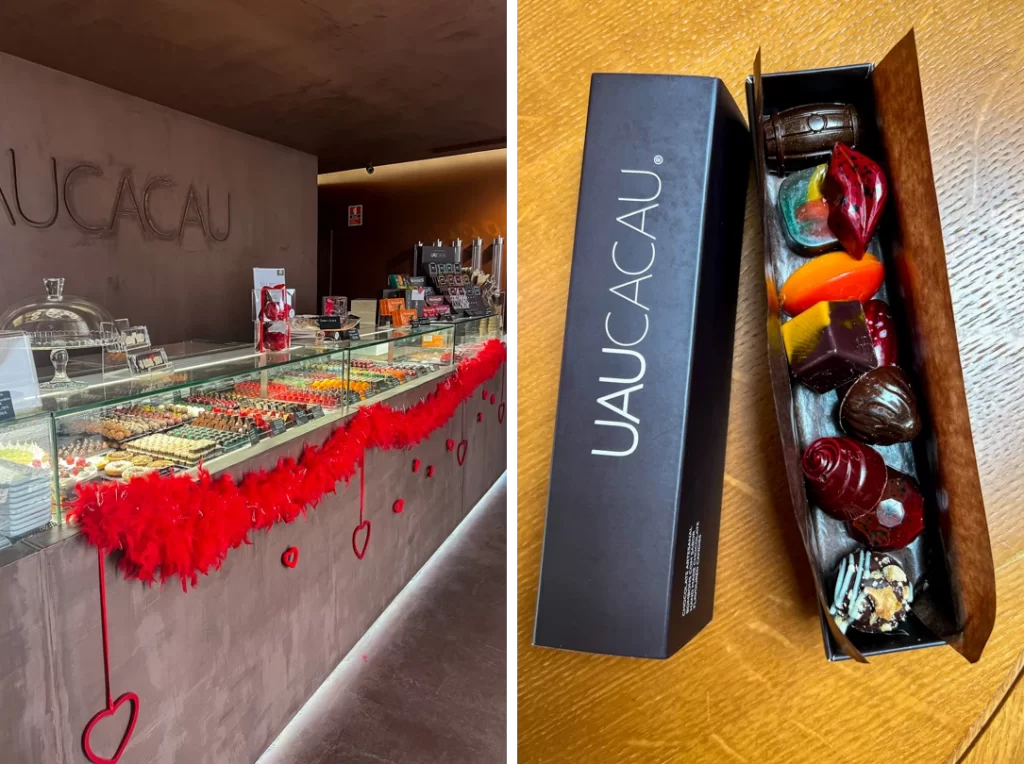
For a savory pre-dinner snack instead, the island’s bolo do caco bread with garlic butter paired with cheese and charcuterie at one of the city’s wine bars is just the ticket. While you might be able to find a few table wine made in Madeira, most restaurants will have a great selection of Portuguese wines and they’re all excellent, from zippy vinho verde to vigorous reds from the Douro.
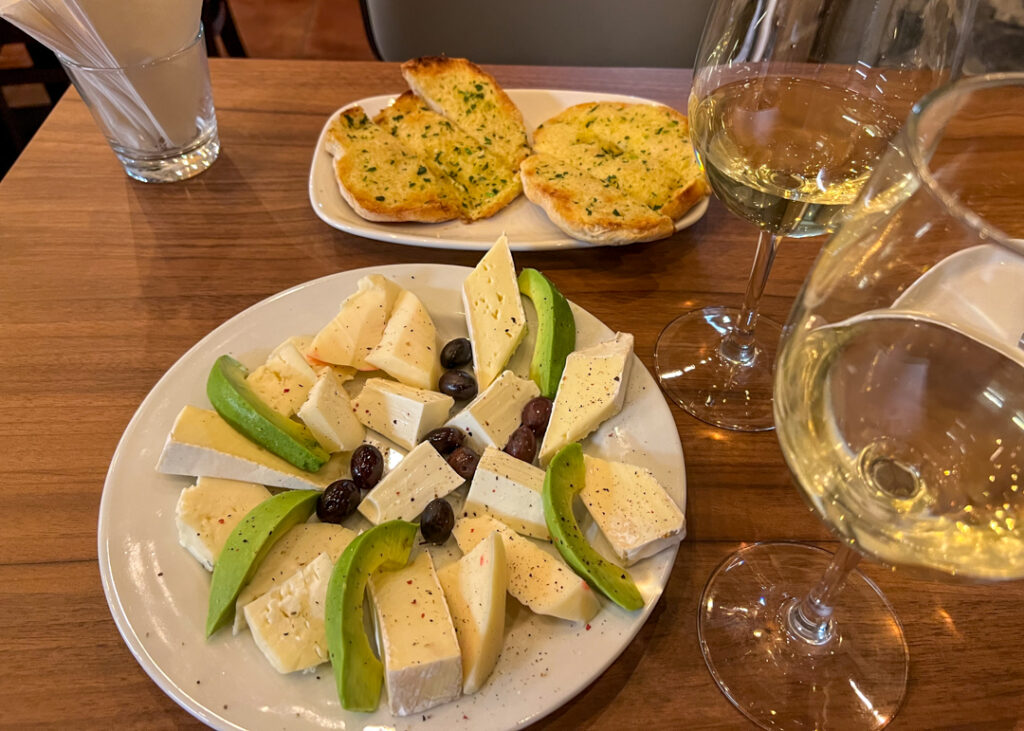
Dinner
Bring your appetite for the last meal of the day which is typically comforting, heavy on the protein, and made to be enjoyed slowly with a few glasses of wine. Don’t let the chill of the ocean air keep you from dining al fresco and join the locals on the sidewalks of family-run favorites.
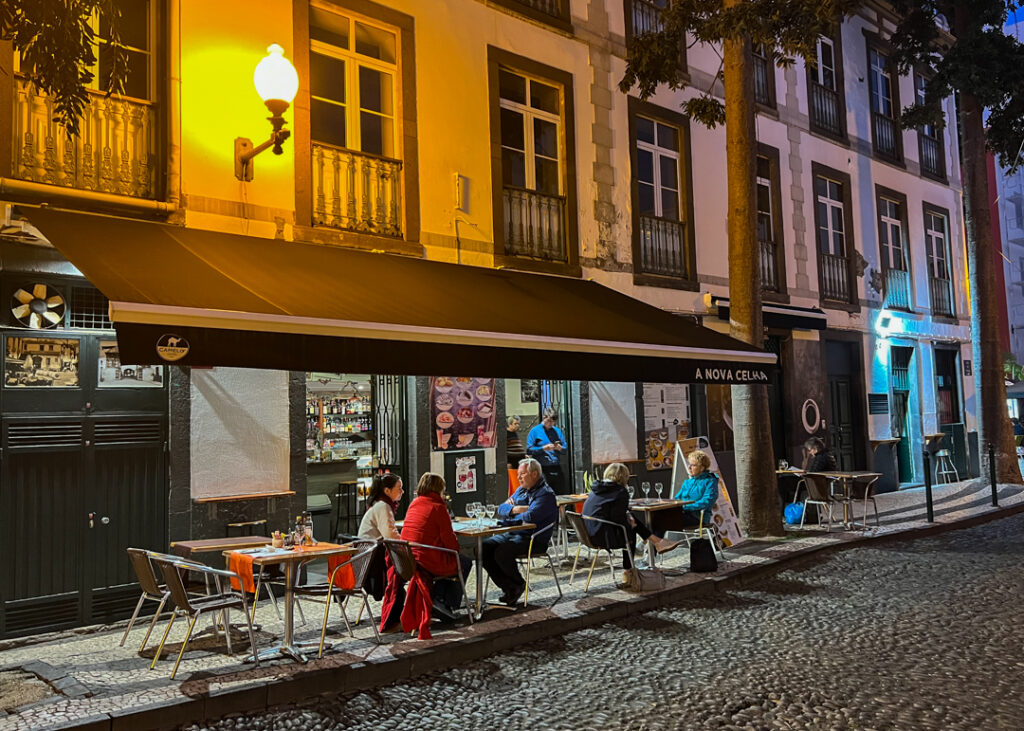
One such favorites – a hidden gem – A Nova Celha will warm you with a homely meal and very generous wine pour. Try the Picado regional, a traditional dish of Madeira of cubed beef cooked with spices and served with French fries, easy to love!
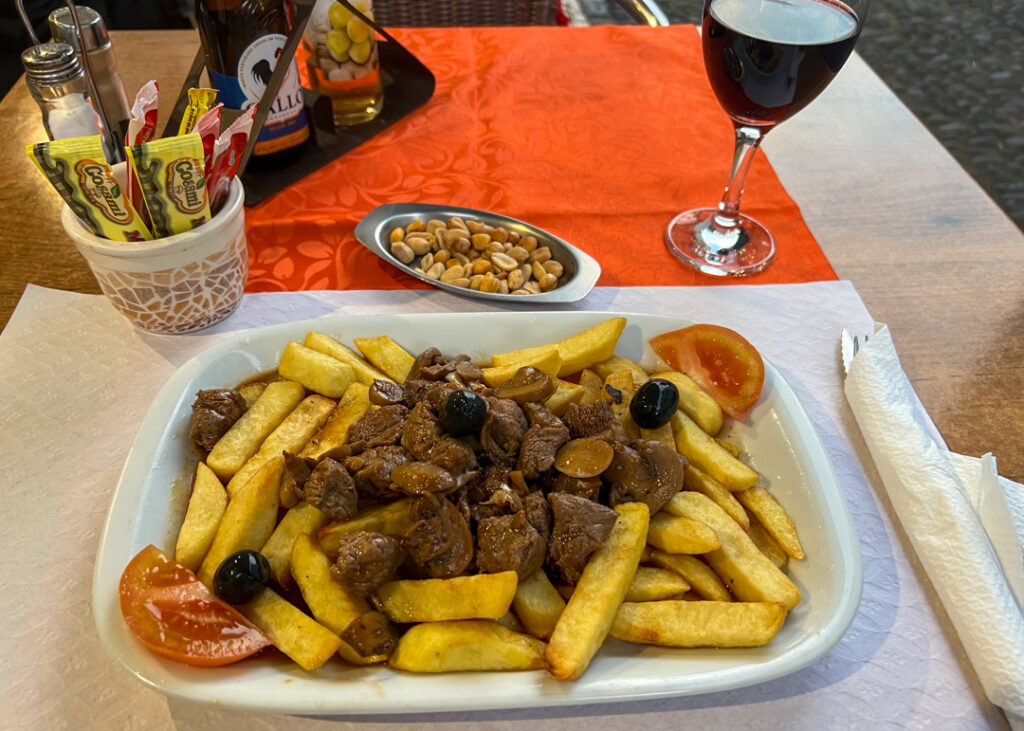
Taberna Madeira in the Old Town lacks the outdoor tables but has a cozy interior and a local menu perfect for sharing with equal amount of seafood and meats.
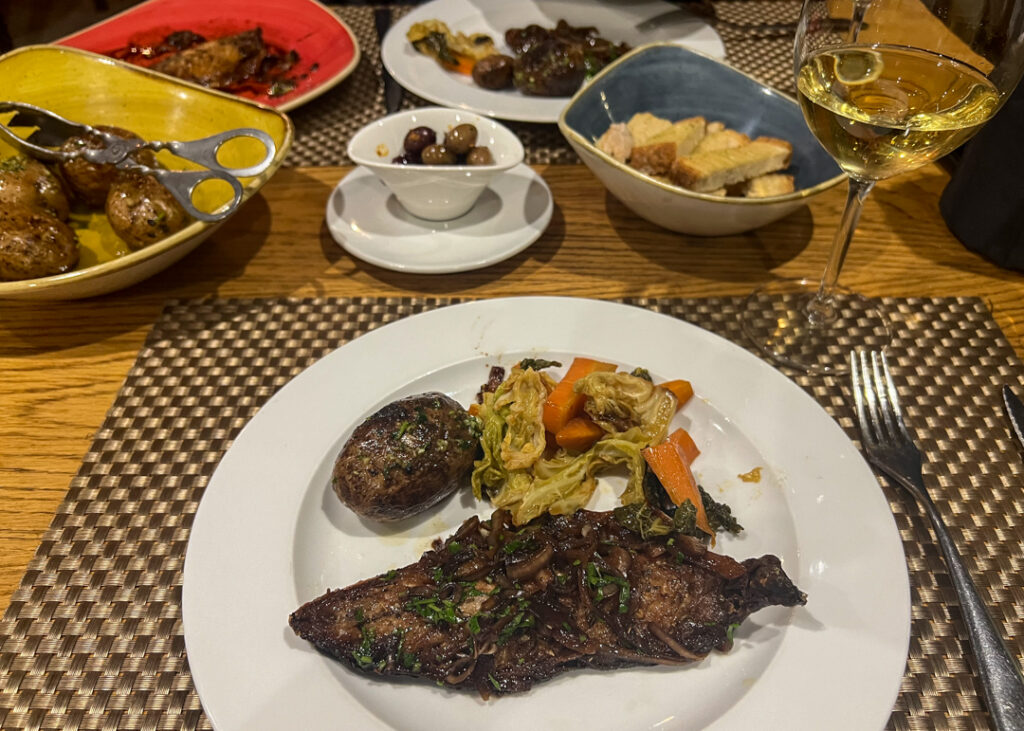
Make sure you try at least once Madeira’s specialty which shouldn’t be hard as it is literally on every menu: the espada (not to be confused with espetada – the meat skewers!). It looks innocent enough on a plate but get a peak at this eel-like beast with razor sharp teeth and you’ll want to hit pause. Despite its nasty appearance, it is delicious. The creamy white flesh is usually served fried with a very local accompaniment of banana (!) and sometimes a passion fruit sauce, and they all go incredibly well together!
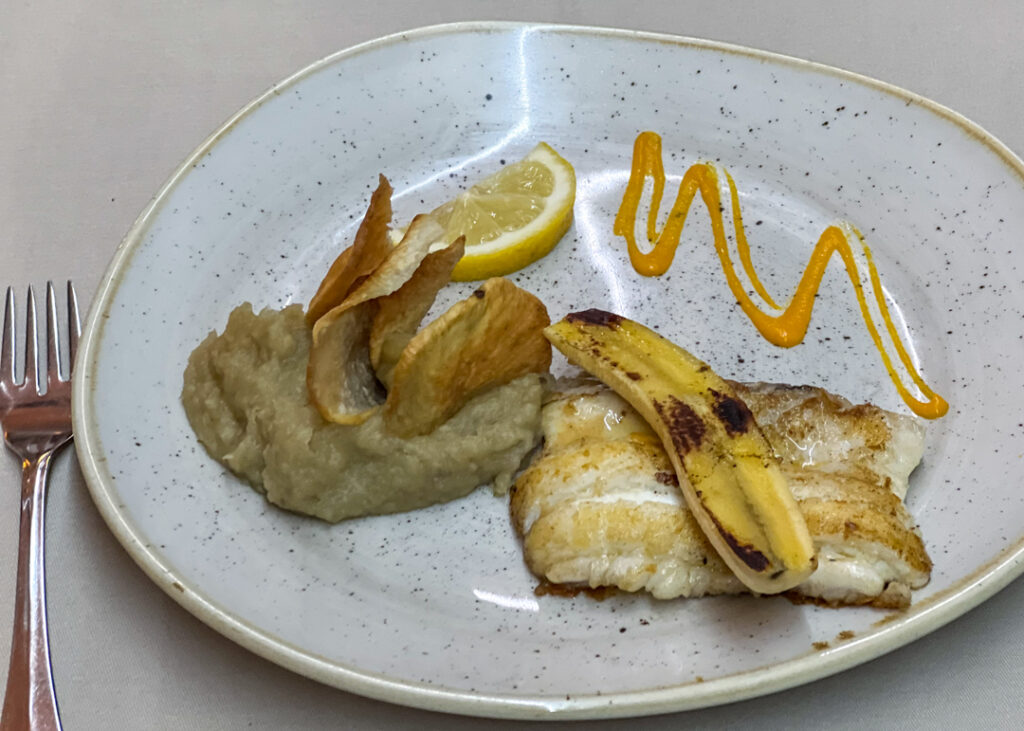
Slightly more upscale, 5 Sentidos on the west side is a gastronomic bistro with a wonderful wine list and beautifully presented food. Salmon tartare and octopus were both as scrumptious as they looked and the service was superb.
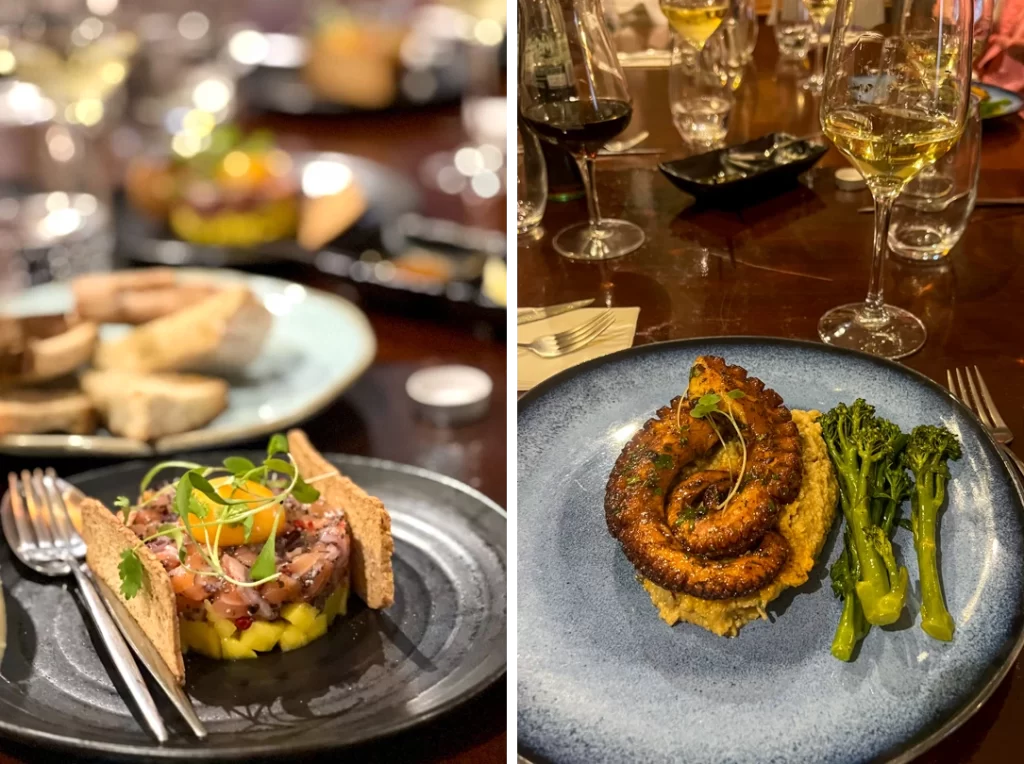
For old word charm in a historic setting, climb the steps to Taberna do Capitão and its rustic ambience. It’s traditional cooking from Madeira done really well in a room unlike any other in the city,
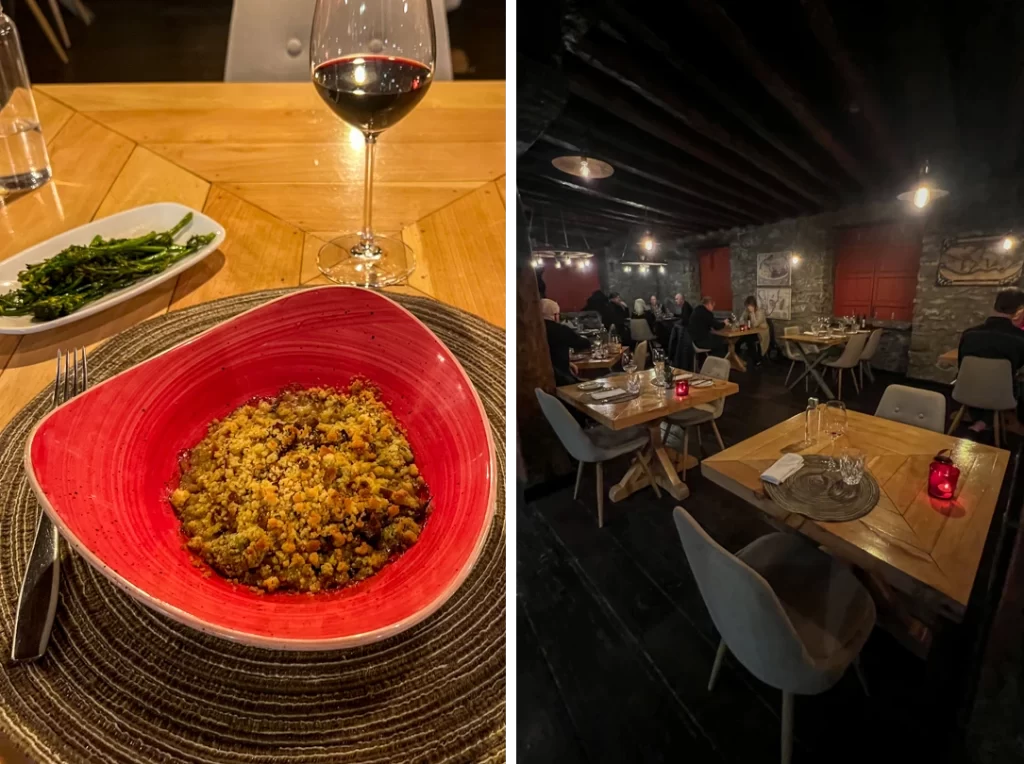
Haute Mediterranean can be had at Tipografia for a little break from the traditional restaurants. Incredibly delicious, not pretentious at all, and big portions for such refined cuisine – I was delighted.
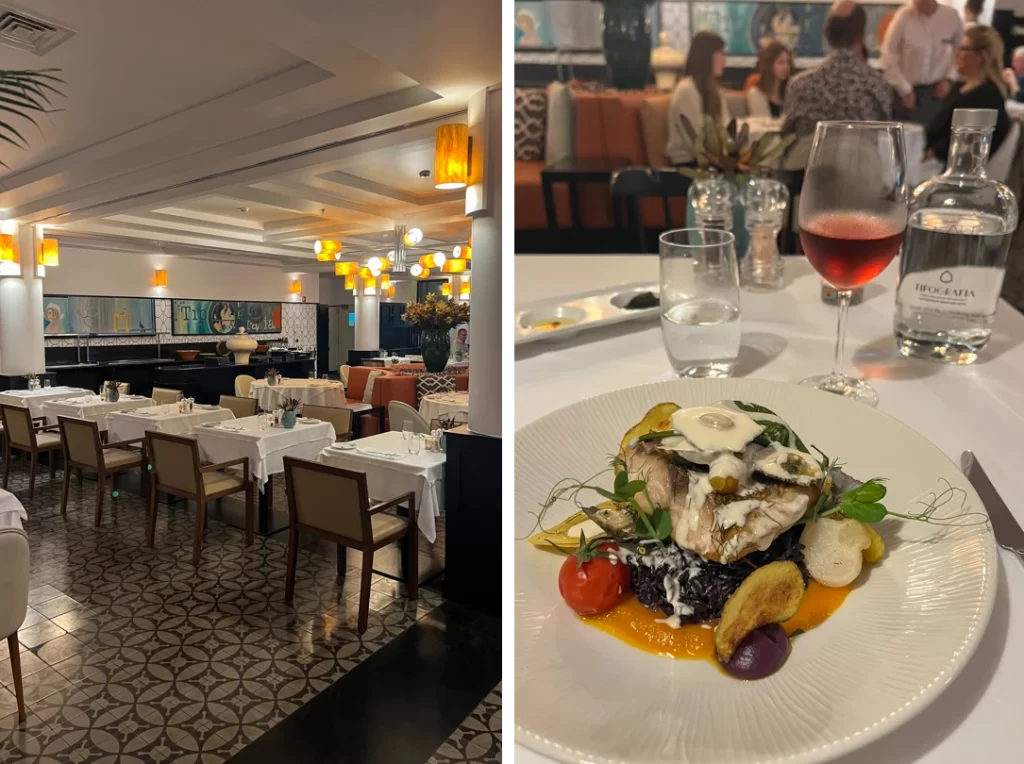
The dinner crown though has to go to Kampo by chef Julio Pereira, the same chef behind my favorite lunch at Akua. He certainly knows what he’s doing and you should eat whatever he makes, period. While Akua made me dream of seafood for weeks after I got back, Kampo is focused on the land with a few seafood options and will have you drool over everything from the fresh bread and butter to the superb meats. And they’ve nailed the ambiance here too…
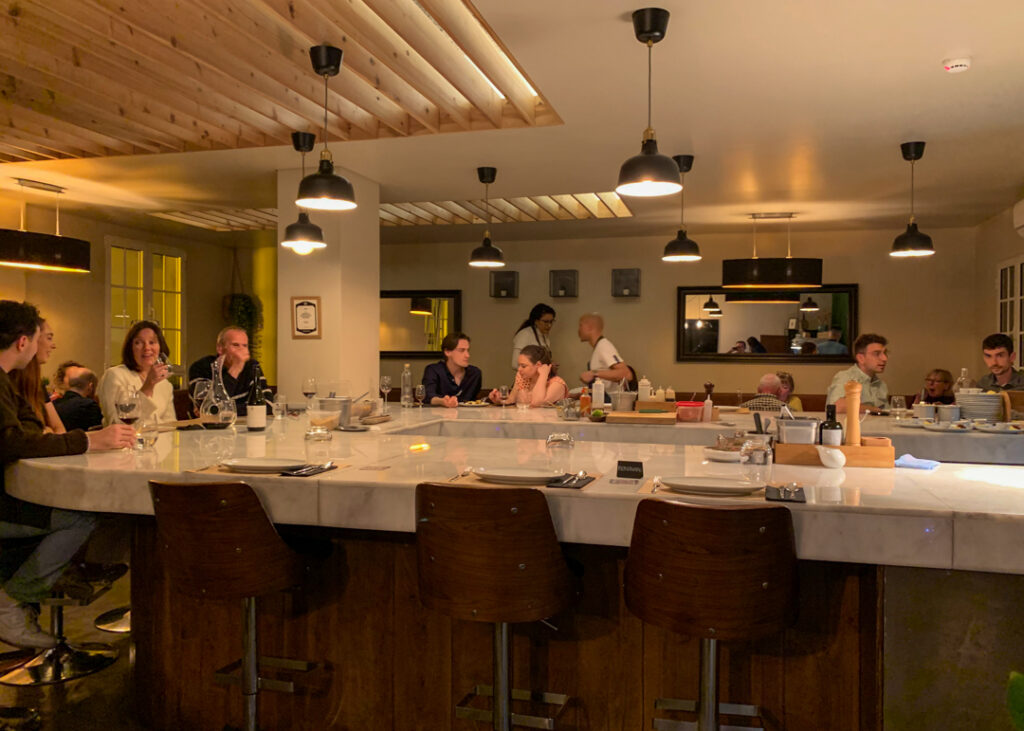
You walk by dry ageing beef to whet your appetite before climbing the stairs to the intimate dining room, curved around the open kitchen. I started with the oxtail ravioli with truffle and foie gras mousse followed by duck rice with confit duck leg… no words. Yes, it was a rich meal, but that’s what a bottle of earthy Portuguese red wine is for.
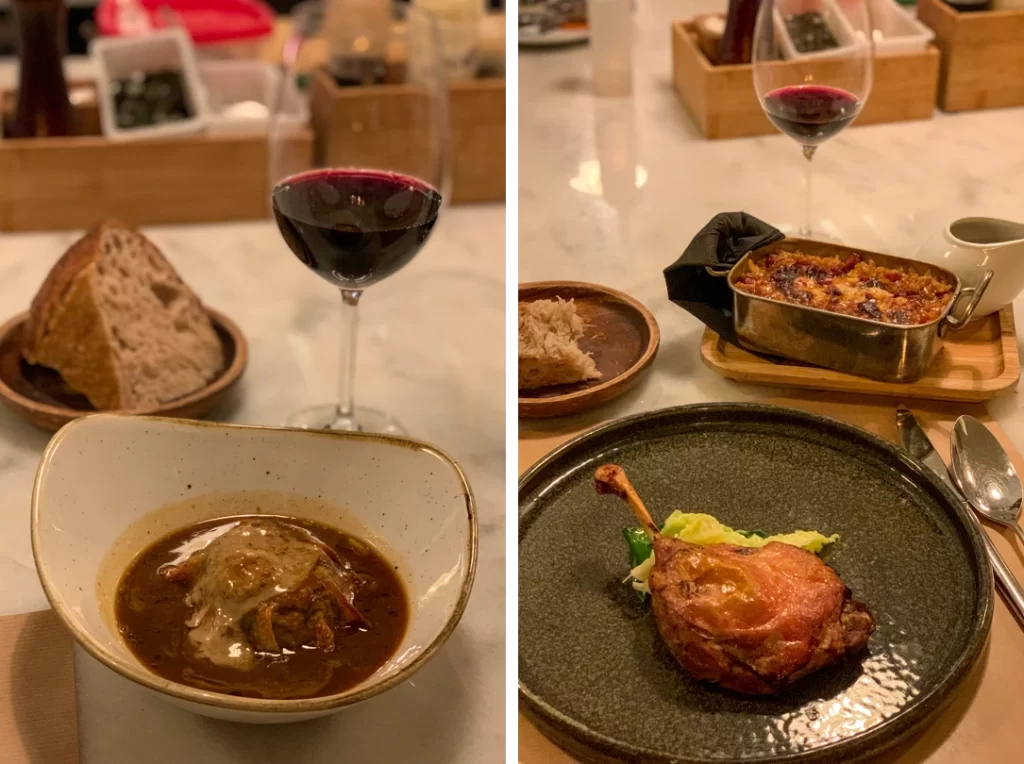
No room left, but could you really resist a dessert in this restaurant? Mango ice cream, salted caramel and dark chocolate, what a pairing!
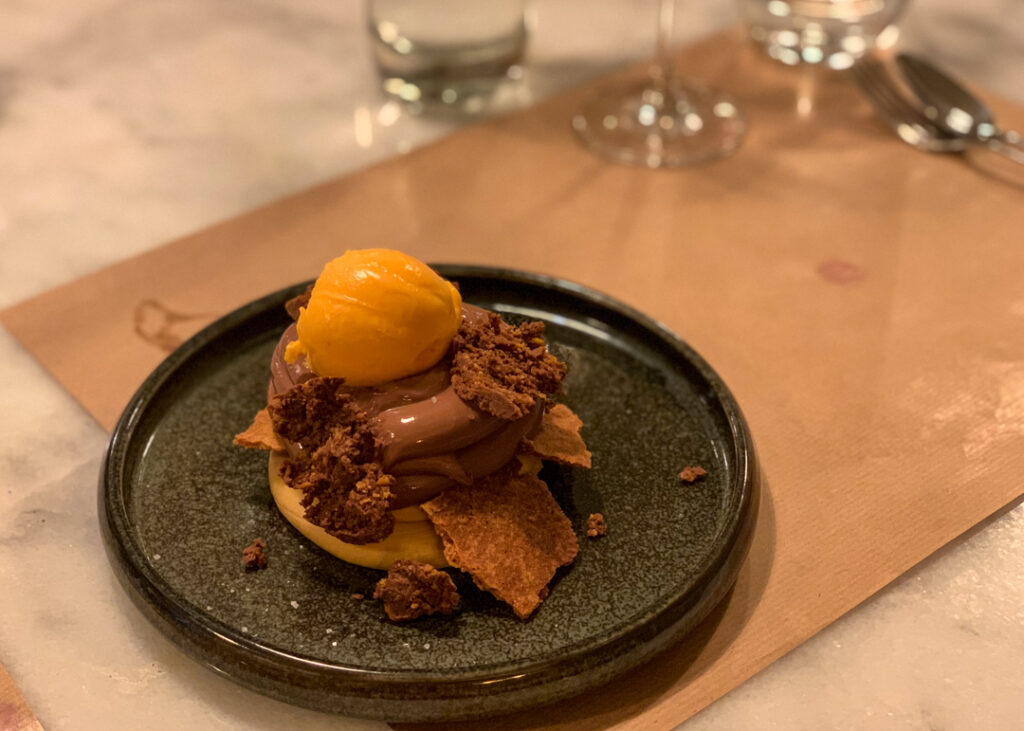
Nightcap
For an island that has a wine denomination named after it, I found it surprising at first to see there was a strong cocktail culture here. But once I learned about the history, the sugarcane plantations (some still operating today) and of course seeing all the tropical fruits, it all made sense.
The island’s most famous concoction, poncha, is best enjoyed at the tiny Rey da Poncha which is always packed from day to night. Poncha is essentially the local aguardente (sugarcane spirit or as locals call it, Madeira rum) to which you add various fruit juices and honey.
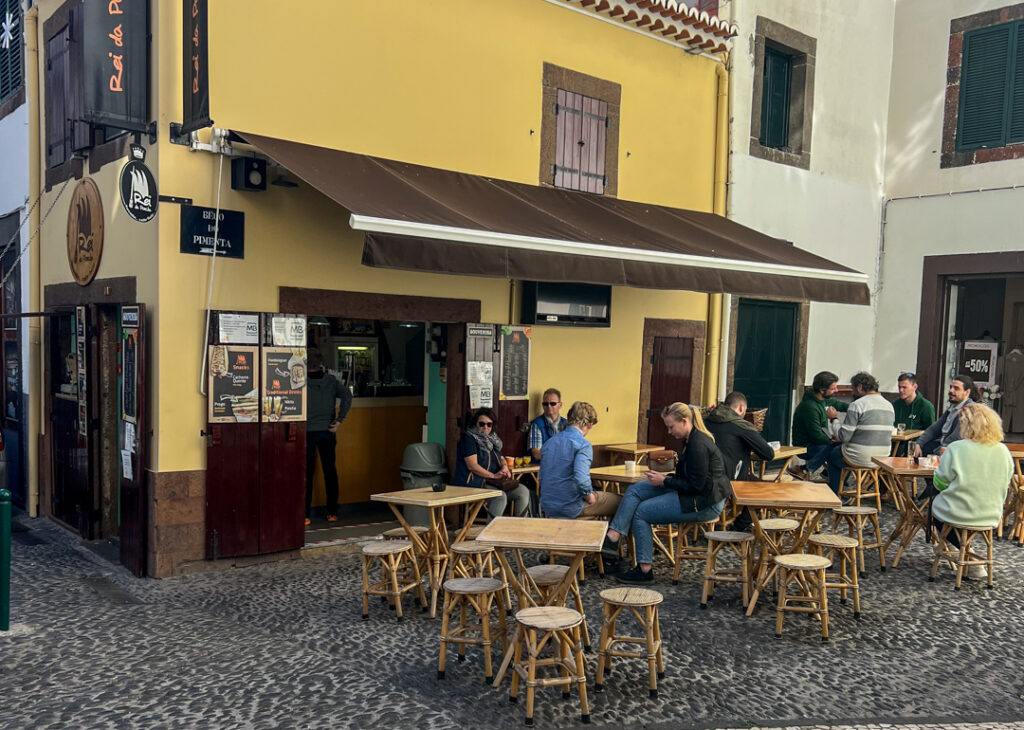
The traditional is made with a mix of lemon and orange but passion fruit is another favorite and the menu is long. If you can’t decide, order the “large flight” which will have you try all the flavors. Just be warned – they might look tiny but they pack quite a punch!
